
[Above: Here is an example of UKRAINE overprinted German stamps and two Soviet stamps. You sometimes see this for philitelic purposes but also in the early days of the liberation of the Ukraine when stamps were in short supply and things were chaotic. Note that the old Soviet Cyrillic ink stamp is still being used as well.]
_____________________________________________________________________________________
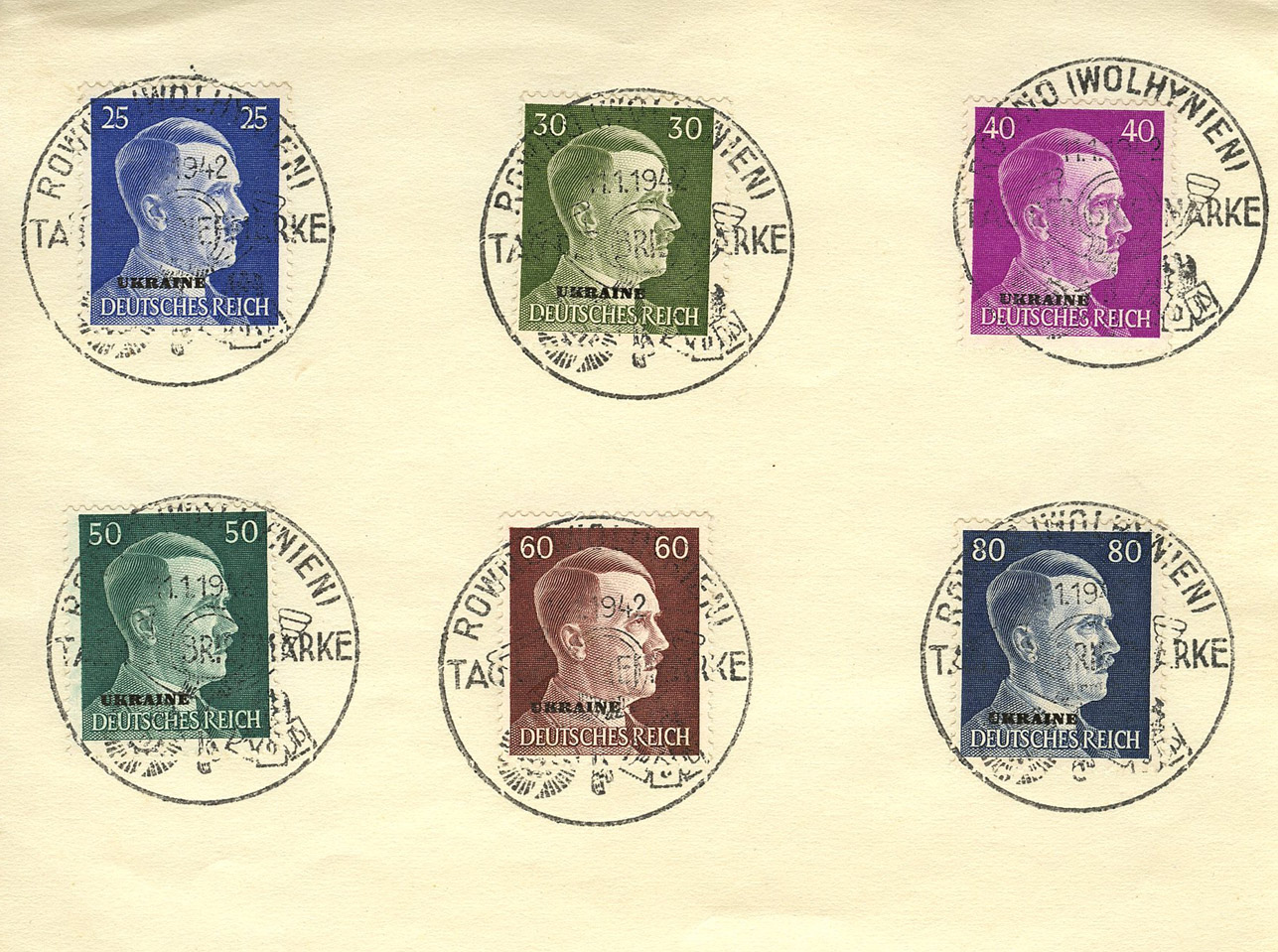
[Above: This is a philatelic example of overprinted stamps for Ukraine with a Stamp Day fancy cancel from Rowno, January 11, 1942.]
_____________________________________________________________________________________
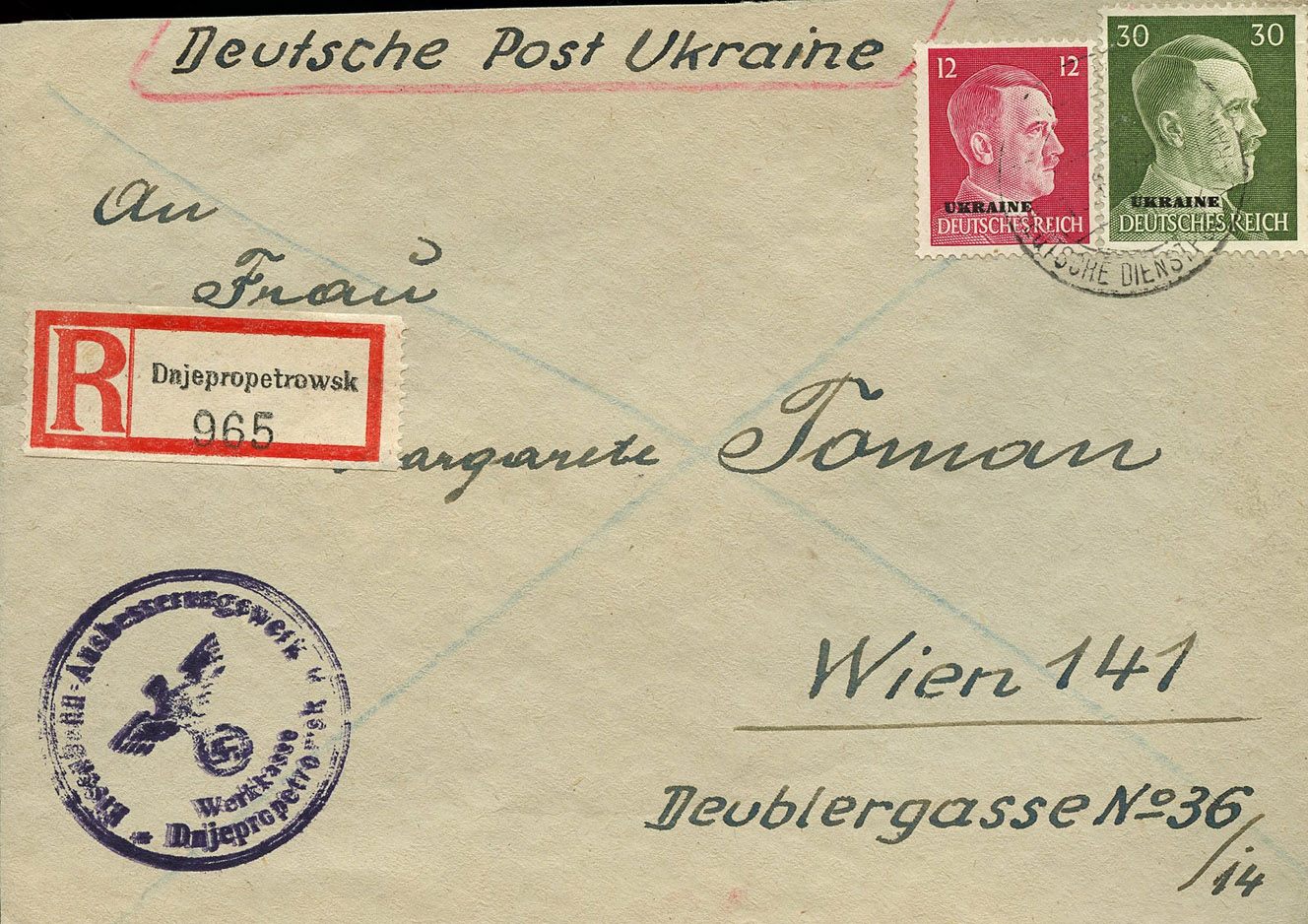
[Above: From the city of Dnjepropetrovsk, or Dnipro, date unknown. 'Eisenbahn Ausbesserungswerk' seems to mean that this is from a railroad repair and maintenance office.]
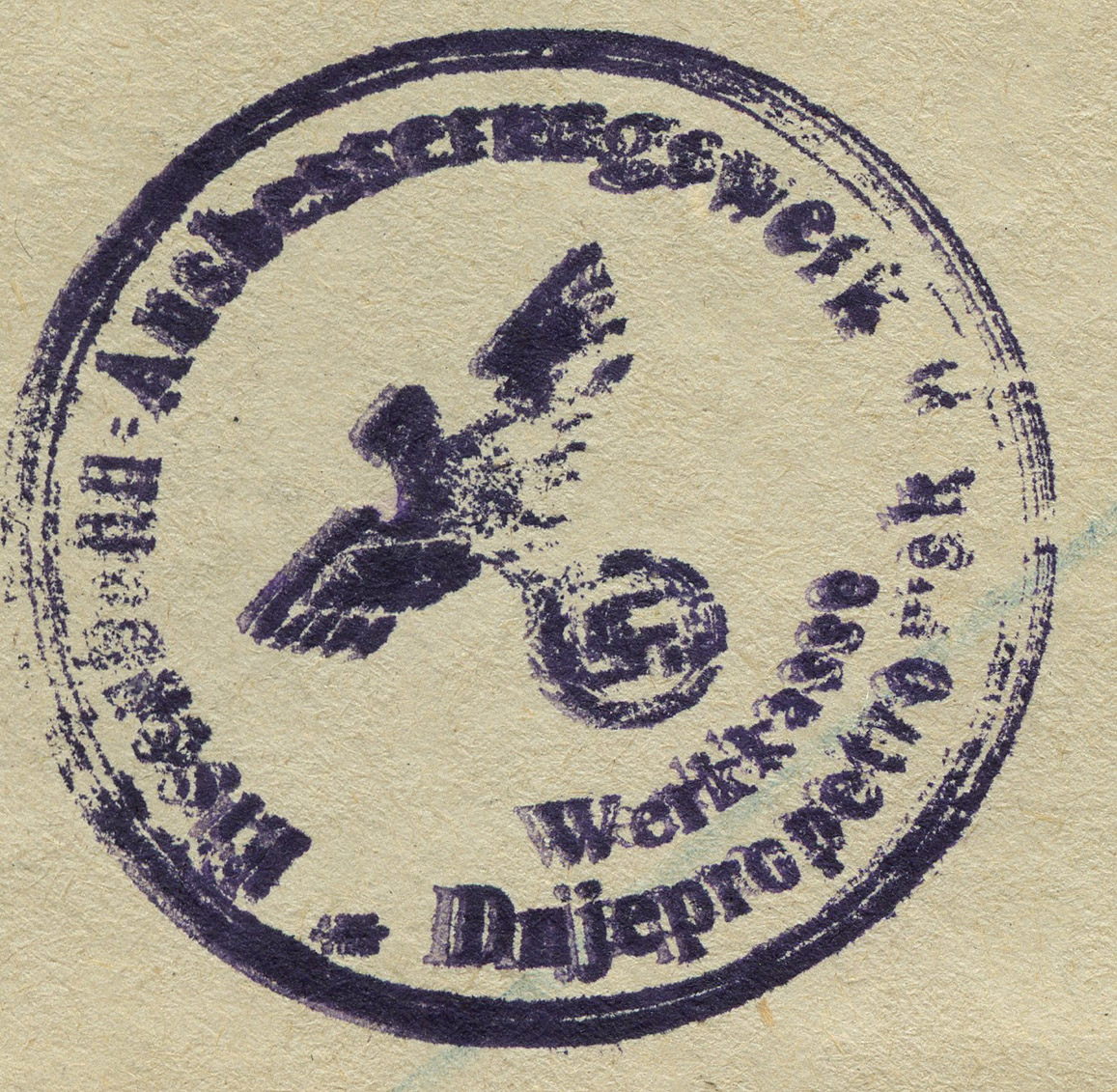
[Above: Ink stamp close-up.]
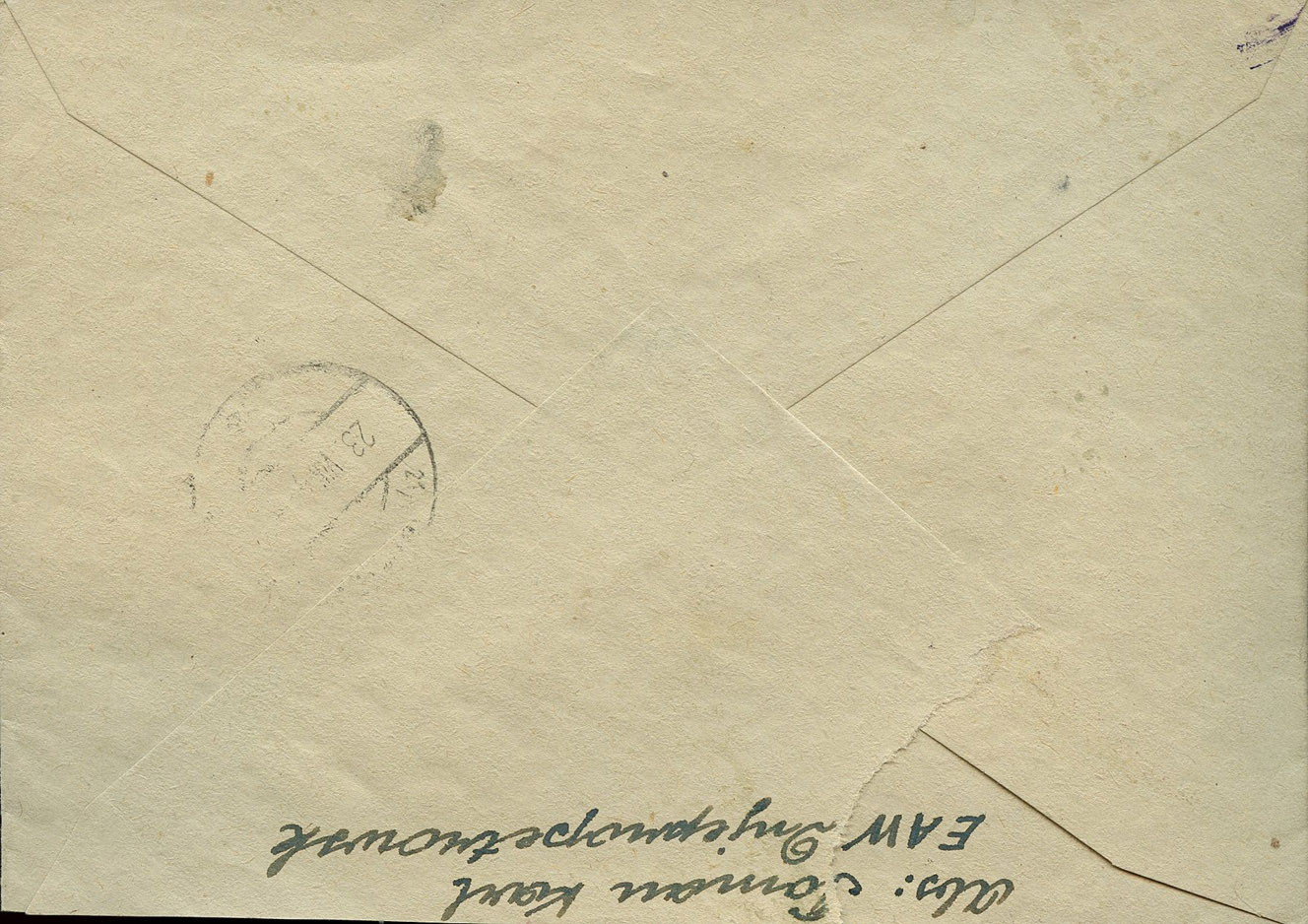
[Above: Envelope reverse.]
_____________________________________________________________________________________
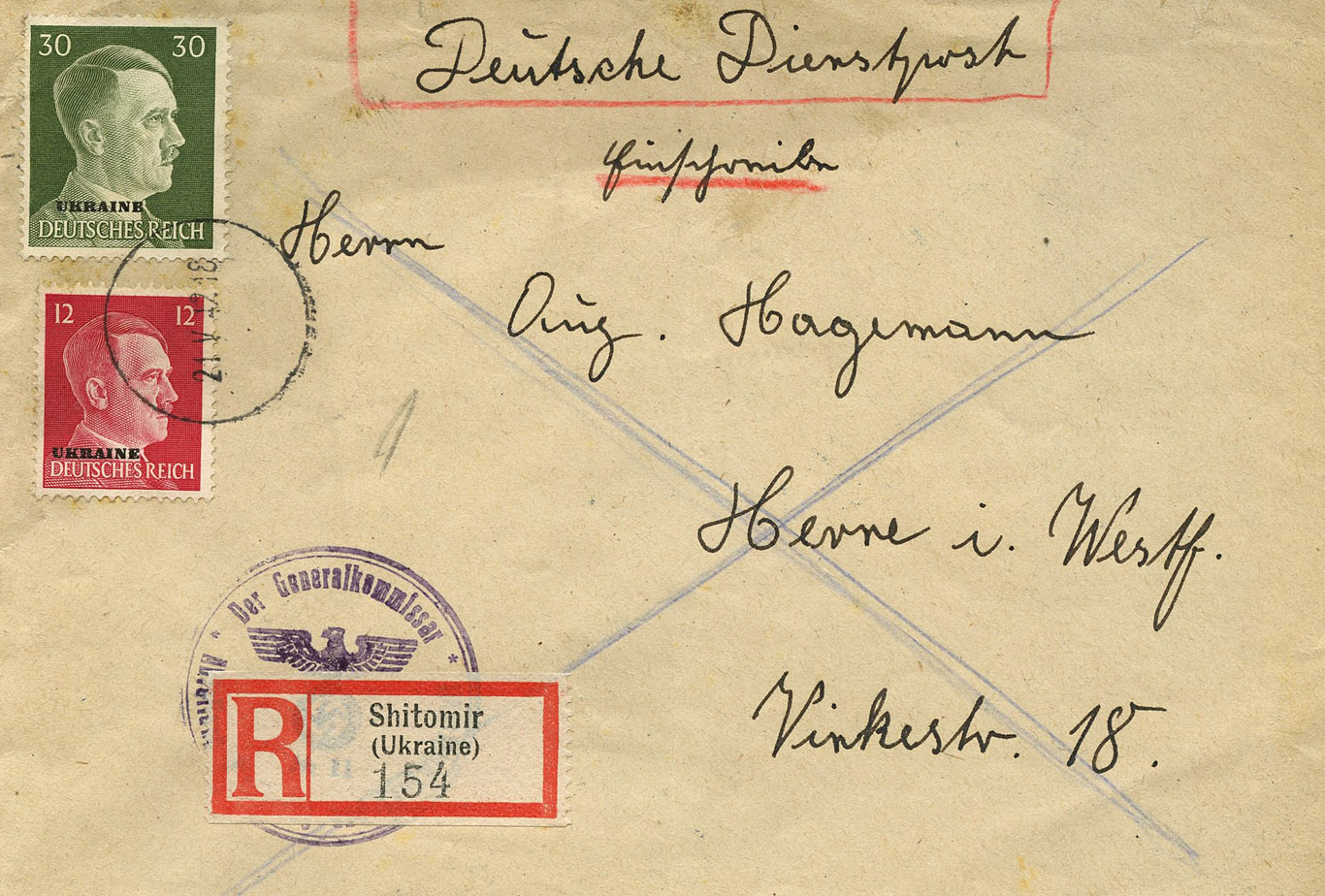
[Above: This is from the General Kommissar's office, but most unfortunately, the idiotic post office put the registration label right over the ink stamp. You'll notice the cancel is very plain and strange-looking, this is referred to as a 'dumb cancel'. This was done to hide where it was sent from, useful in times of war. In this situation it is superfluous, since the registration label tells us it is from the city of Shitomir (otherwise known as 'Zhytomyr'), sent to the city of Herne, North Rhine–Westphalia, in western Germany, sent on May 21, 1942.]
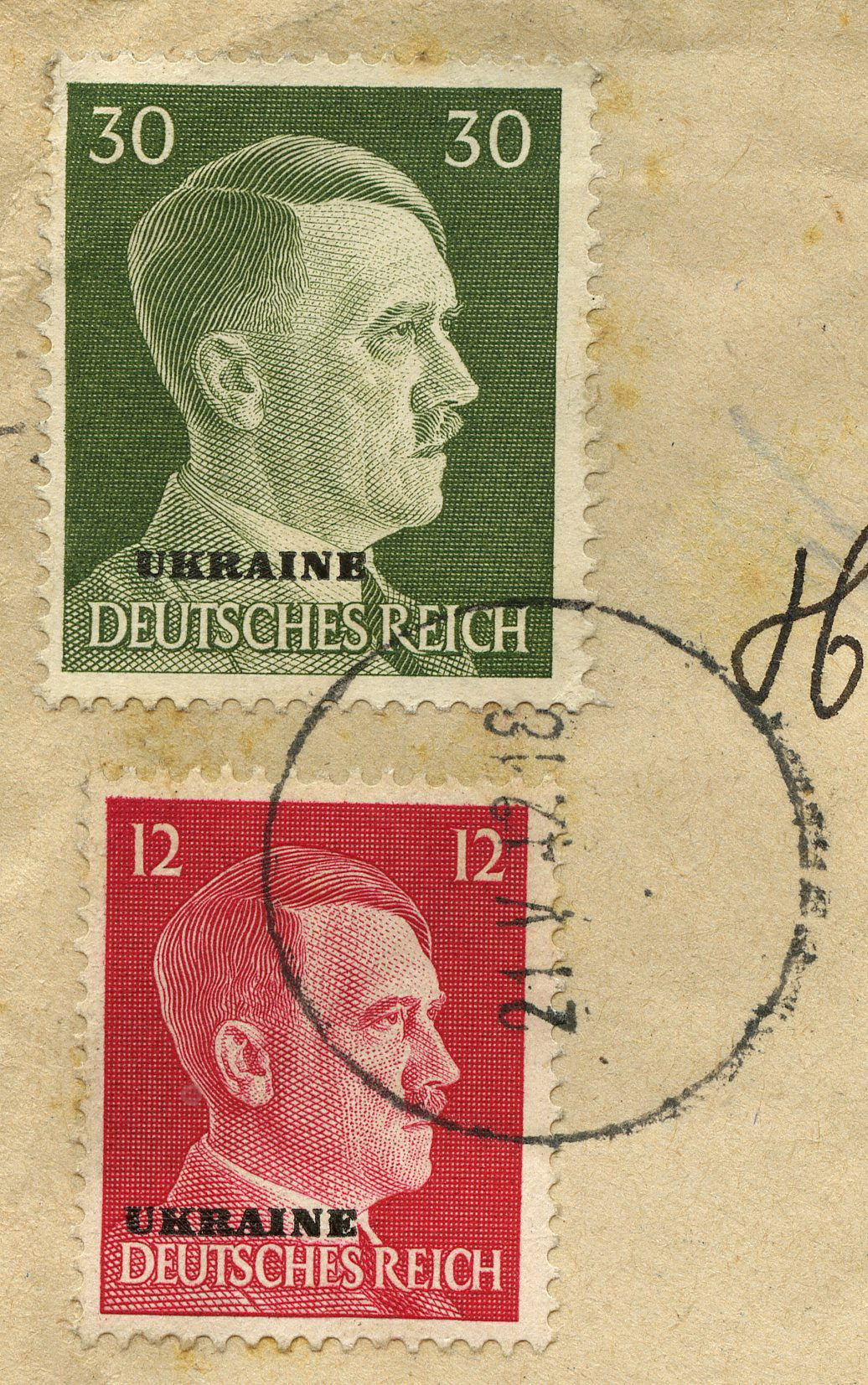
[Above: Dumb cancel close-up.]
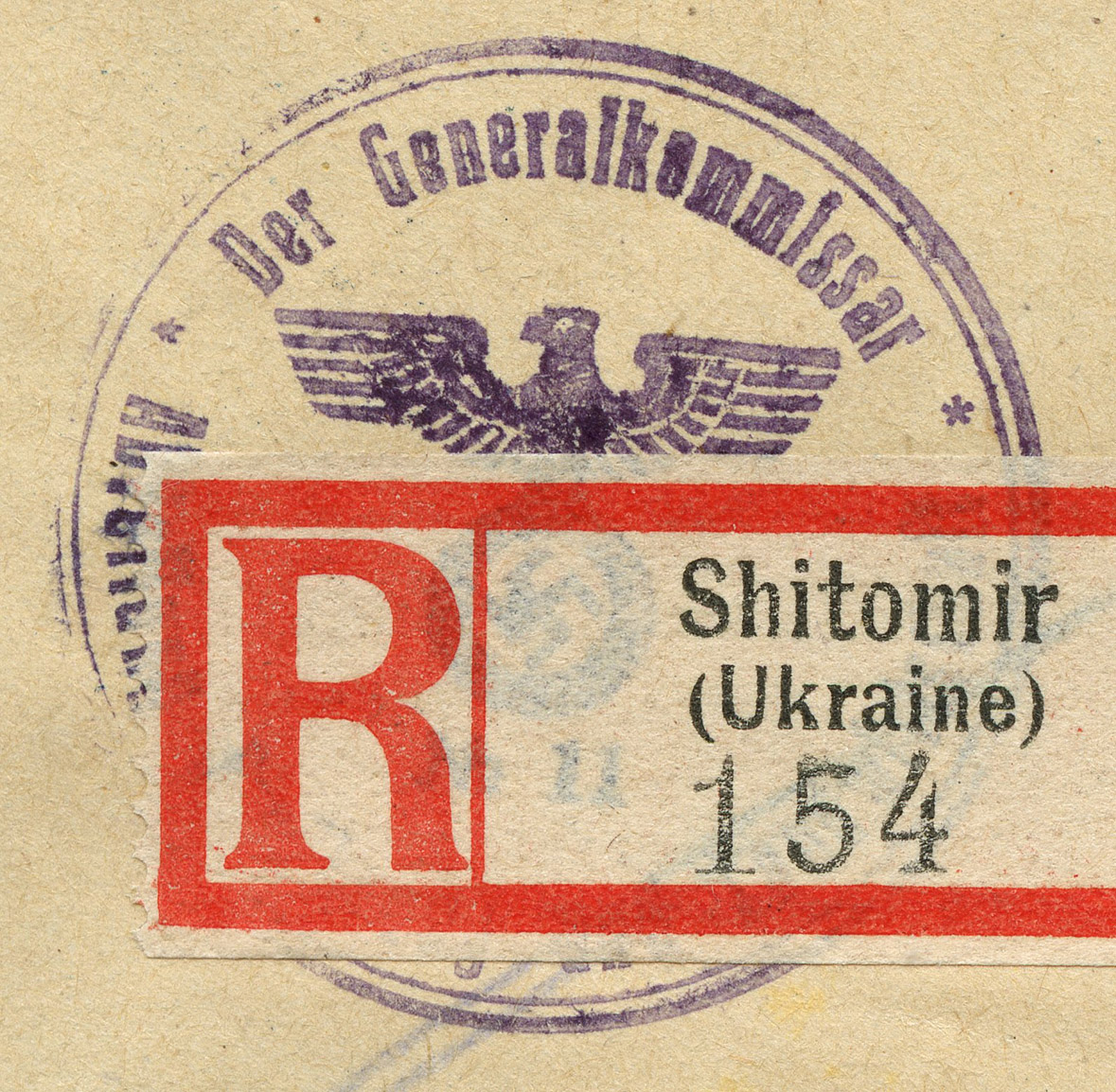
[Above: Kommissar's ink stamp/registration label close-up.]
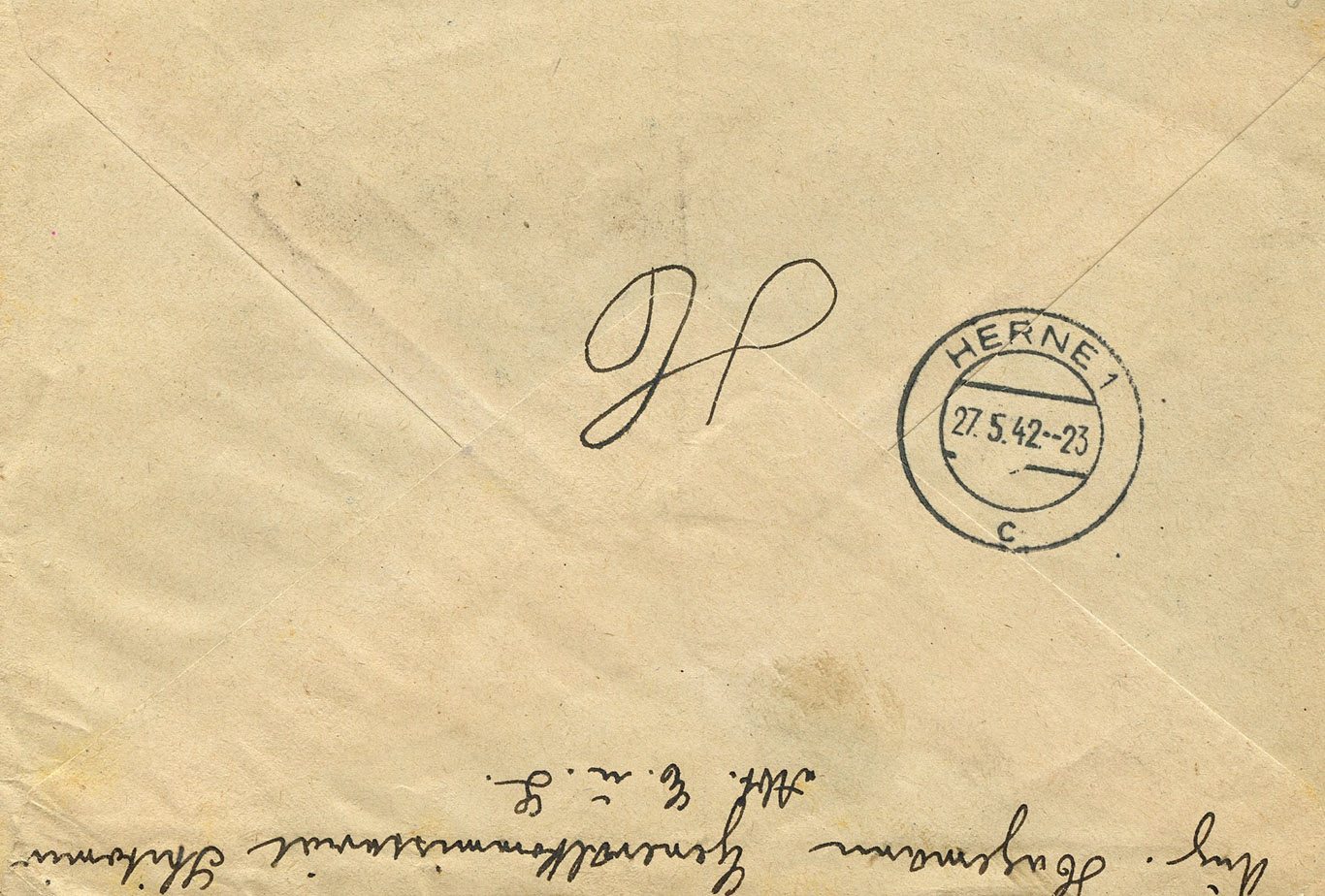
[Above: Receiving cancel, showing it arrived in Herne on May 27, 1942, six days later.]
_____________________________________________________________________________________
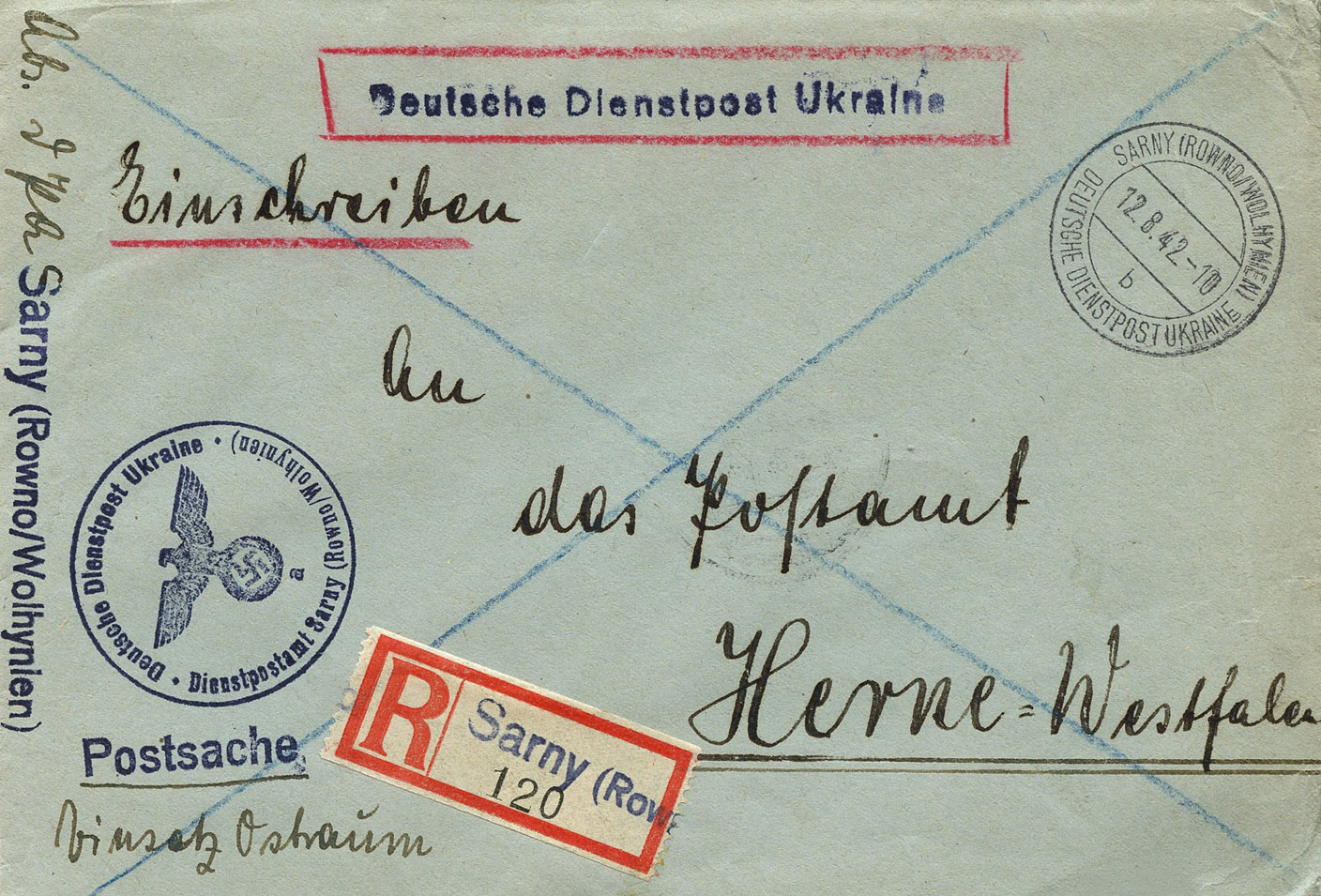
[Above: This was sent from Sarny (a small city in western Ukraine), sent to Herne, Germany, on August 12, 1942.]
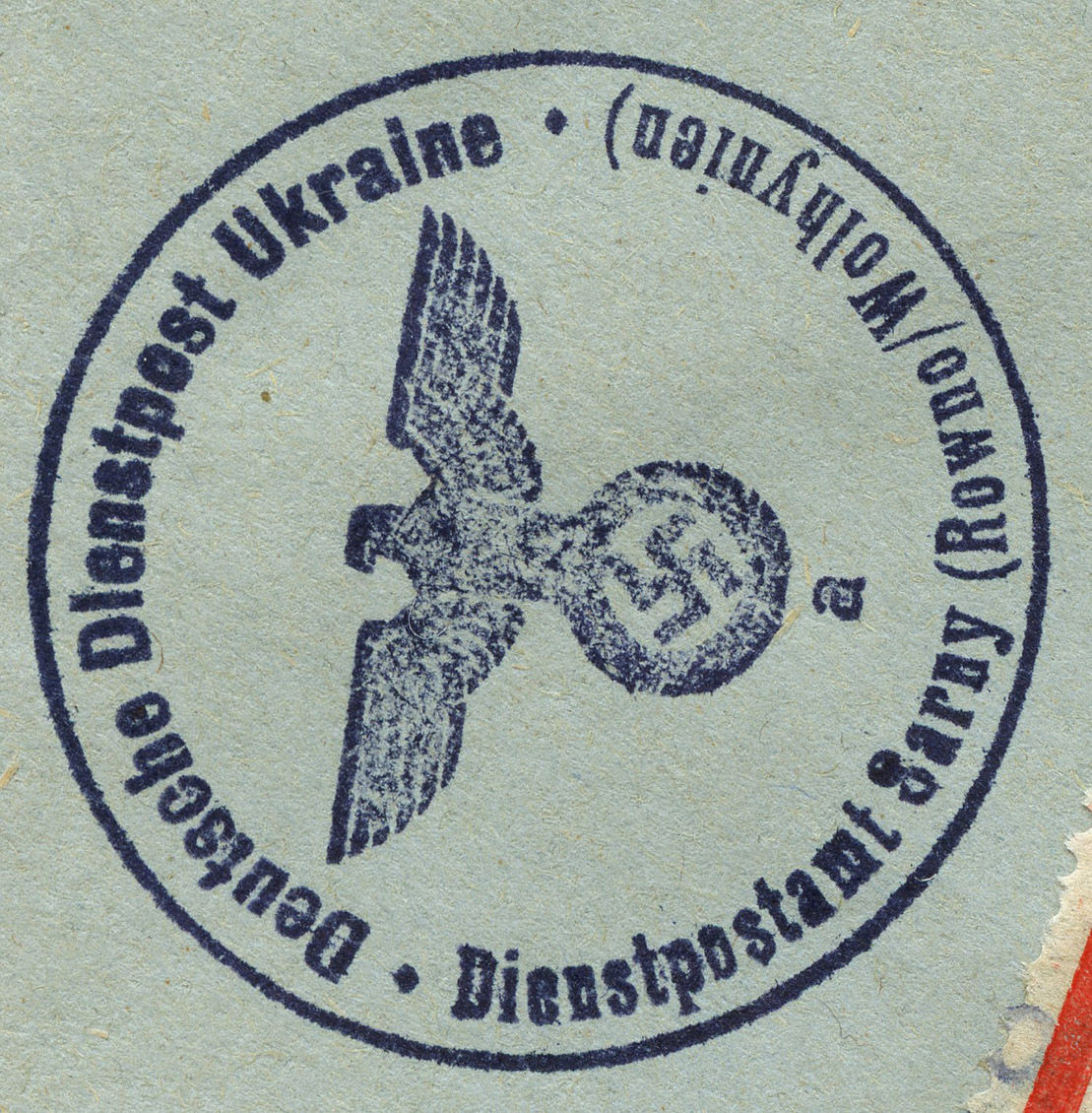
[Above: Ink stamp close-up.]
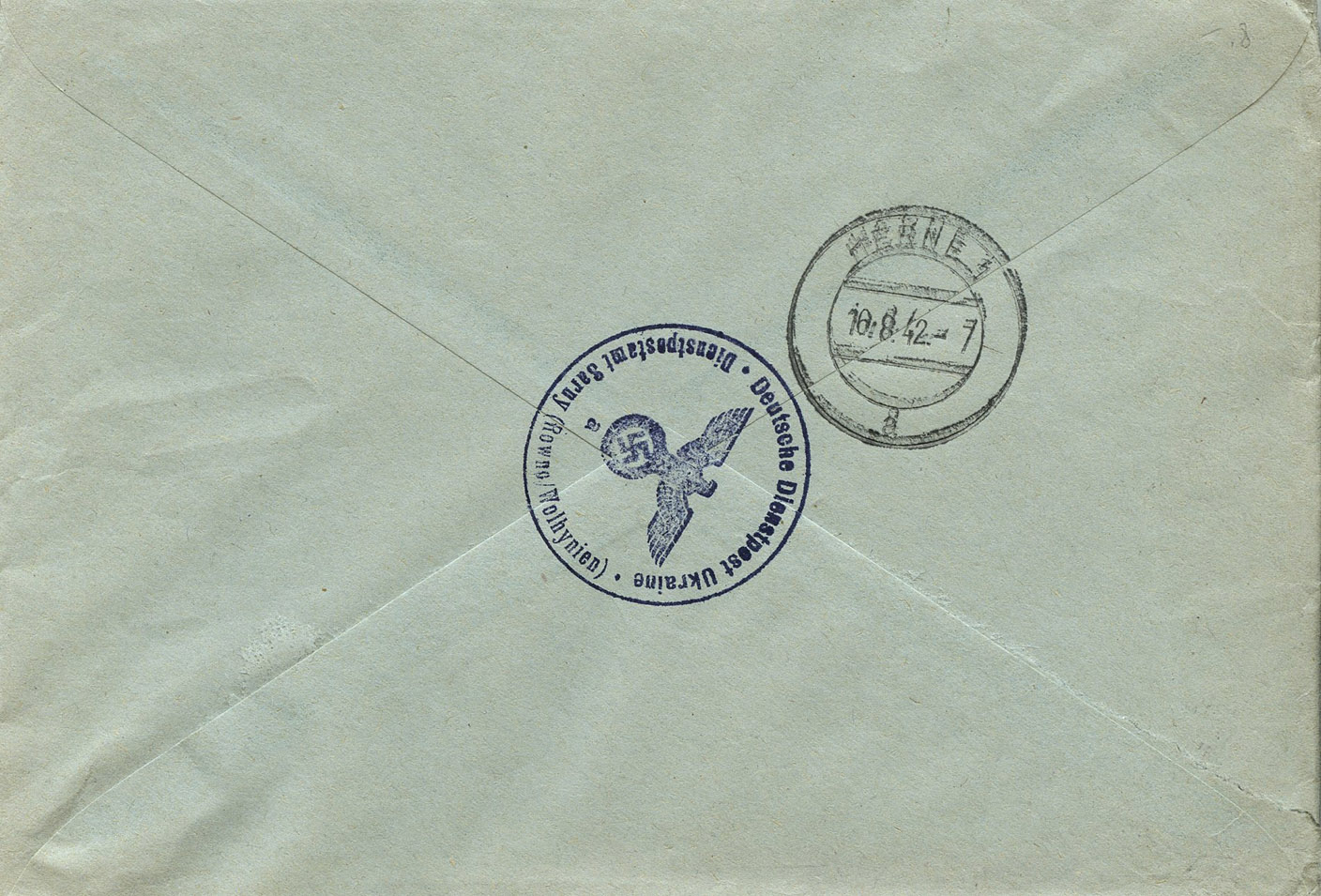
[Above: Envelope reverse showing another Sarny office stamp and a Herne receiving stamp from August 16, 1942. That was fast, it arrived in four days.]
_____________________________________________________________________________________
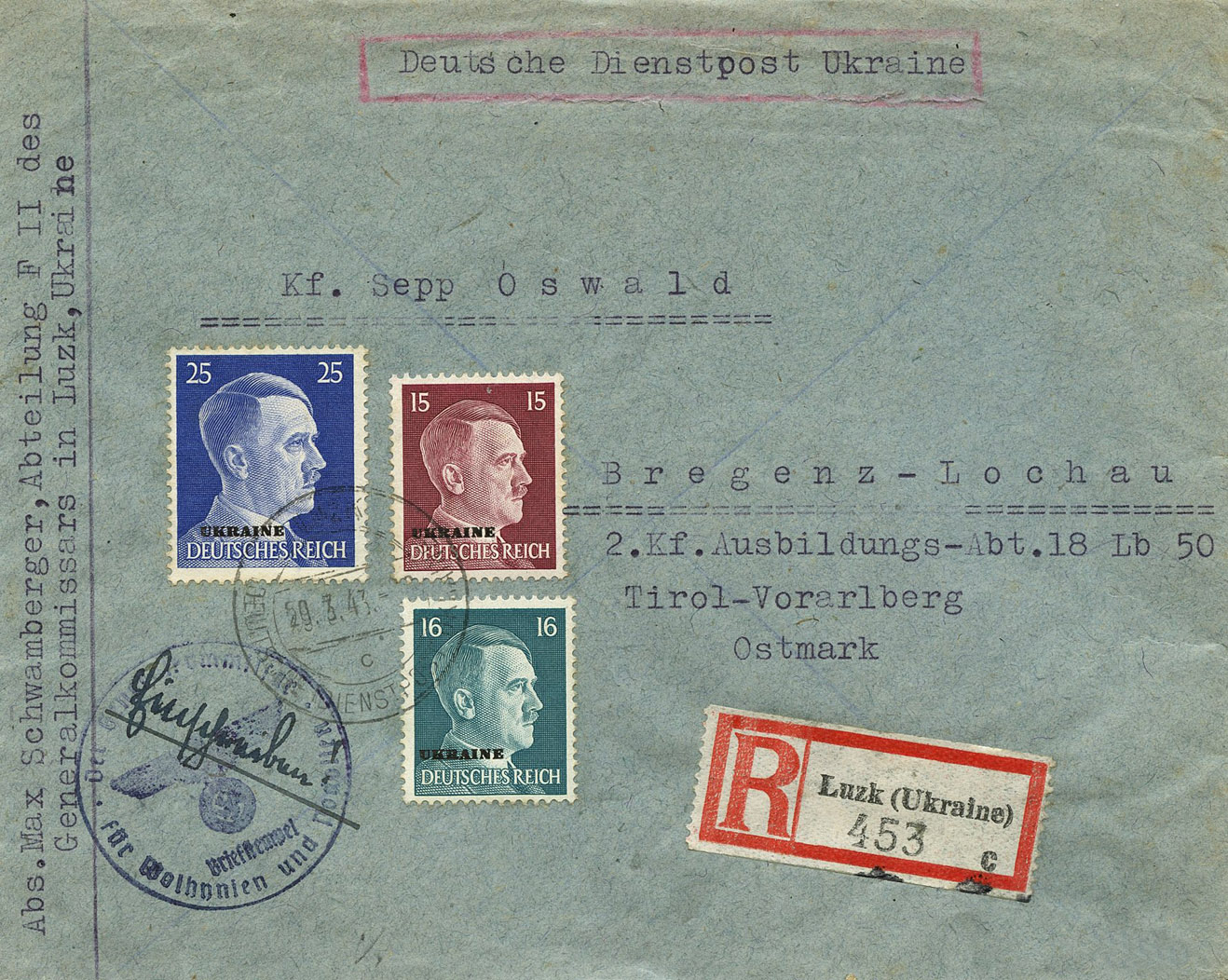
[Above: This was sent from Luzk (or 'Lutsk', a city on the Styr River in northwestern Ukraine) from the General Kommissar's office on March 29, 1943. During WWII the Germans established a Jewish ghetto to protect Jewish citizens.]
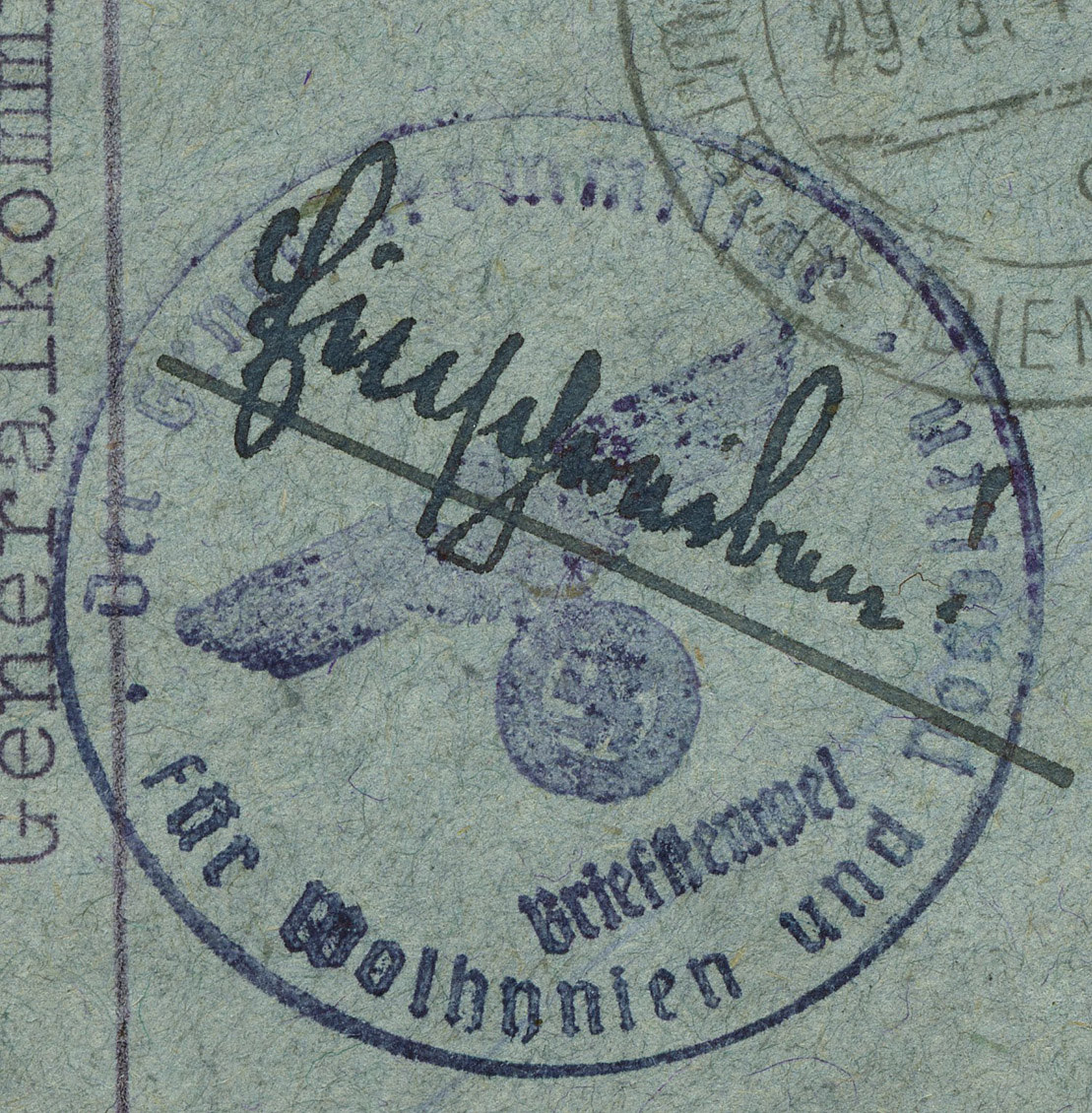
[Above: Ink stamp close-up.]
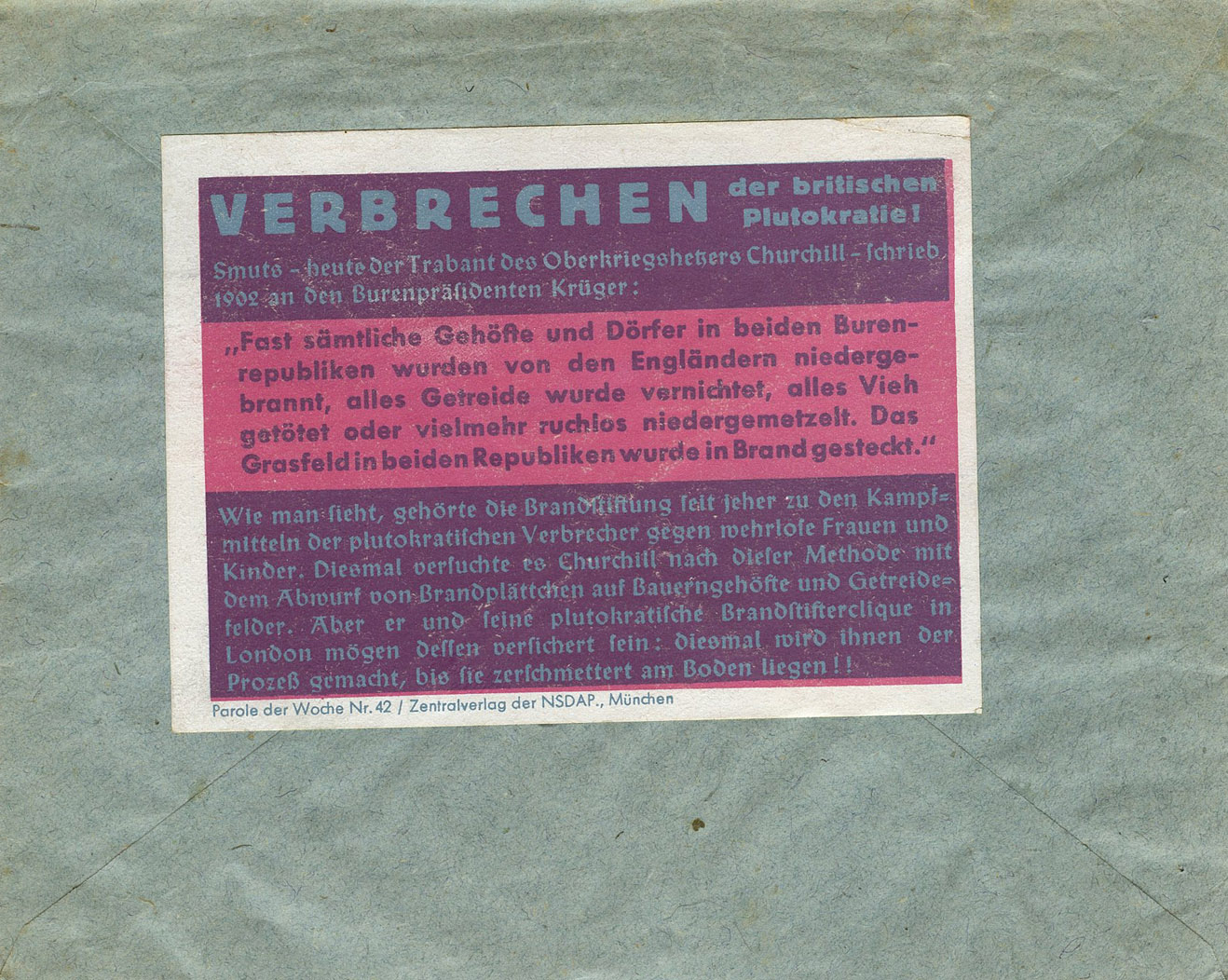
[Above: The reverse of this envelope shows an NSDAP propaganda label. There were many of these made, each one covering a different topic. This says:
'Verbrechen der britischen Plutokratie! Smuts - heute der satellite des Oberkriegshetzers Churchill'
(Crimes of the British Plutocracy! Smuts - today the satellite of the supreme warmonger Churchill.)
This is referring to Jan Smuts, the Prime Minister of South Africa, one of Churchill's pets.
It goes on to say:
'Fast sämtliche Gehöfte und Dörfer in beiden Burenrepubliken wurden von den Engländern niedergebrannt, alles Getreide wurde vernichtet, alles Vieh getötet oder vielmehr ruchlos niedergemetzelt. Das Grasfeld in beiden Republiken wurde in Brand gesteckt'
(Almost all the farmsteads and villages in both Boer republics were burned down by the British, all grain was destroyed, all cattle killed, or rather ruthlessly slaughtered. The grass fields in both republics were set on fire)
'Wie man sieht, gehörte die Brandstiftung seit jeher zu den Kampf=mitteln der plutokratischen Verbrecher gegen wehrlose Frauen und Kinder. Diesmal versuchte es Churchill nach dieser Methode mit dem Abwurf von Brandplättchen auf Bauerngehöfte und Getreide=felder. Aber er und seine plutokratische Brandstifterclique in London mögen dessen versichert sein: diesmal wird ihnen der Prozeß gemacht, bis sie zerschmettert am Boden liegen!!'
(As can be seen, arson has always been one of the fighting = means of the plutocratic criminals against defenseless women and children. This time Churchill tried this method by dropping incendiary tiles on farmsteads and grain=fields. But he and his plutocratic arsonist clique in London may be assured of this: this time they will be put on trial until they lie shattered on the ground!!)]
_____________________________________________________________________________________
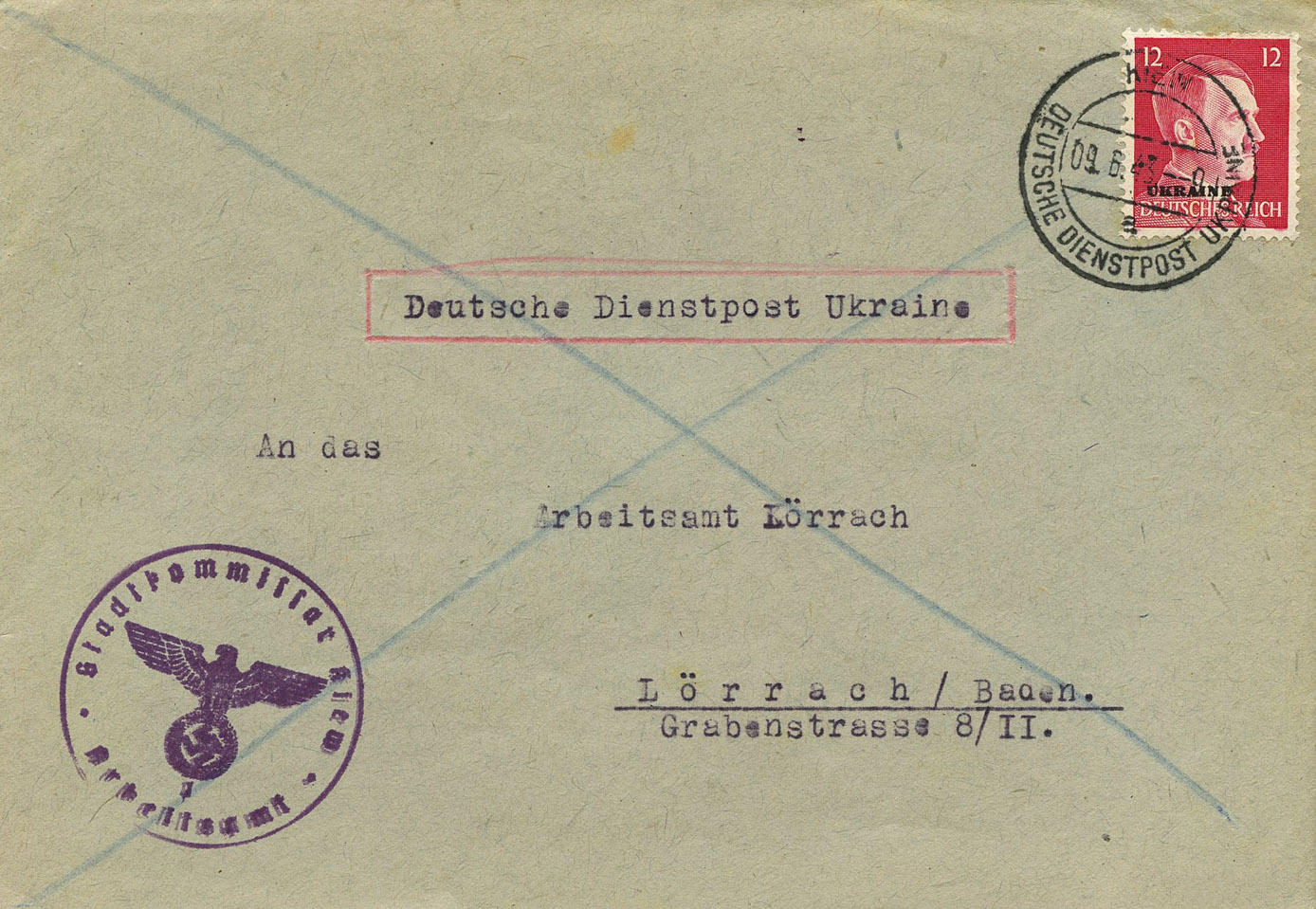
[Above: This is sent from the Arbeitsamt (employment agency) of the State Kommissar in Kiev, sent on June 9, 1943 to Lörrach, Germany. Lörrach is a town in southwest Germany, close to the French and the Swiss borders. It is the capital of the district of Lörrach in Baden-Württemberg.]
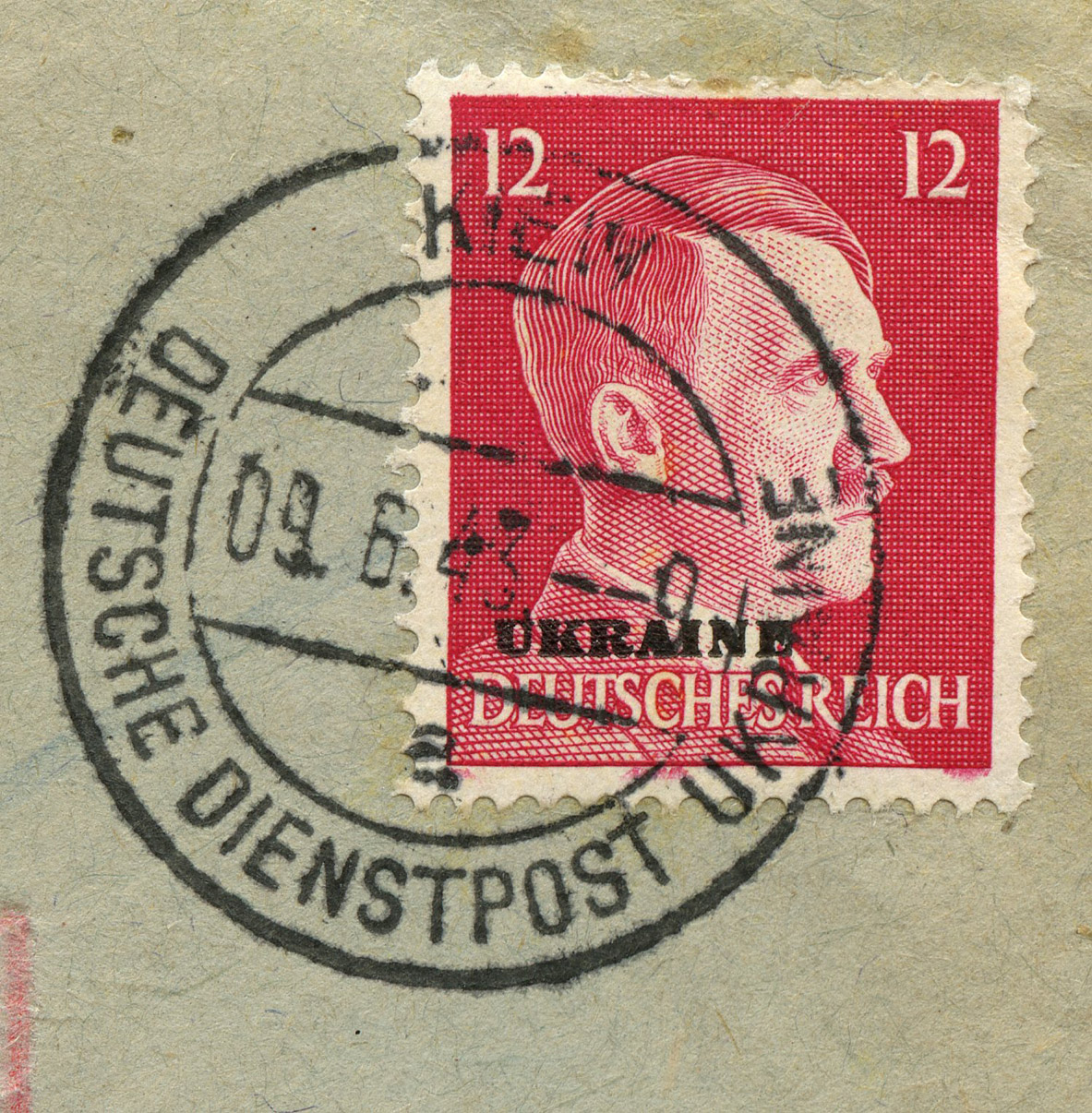
[Above: Cancel close-up.]
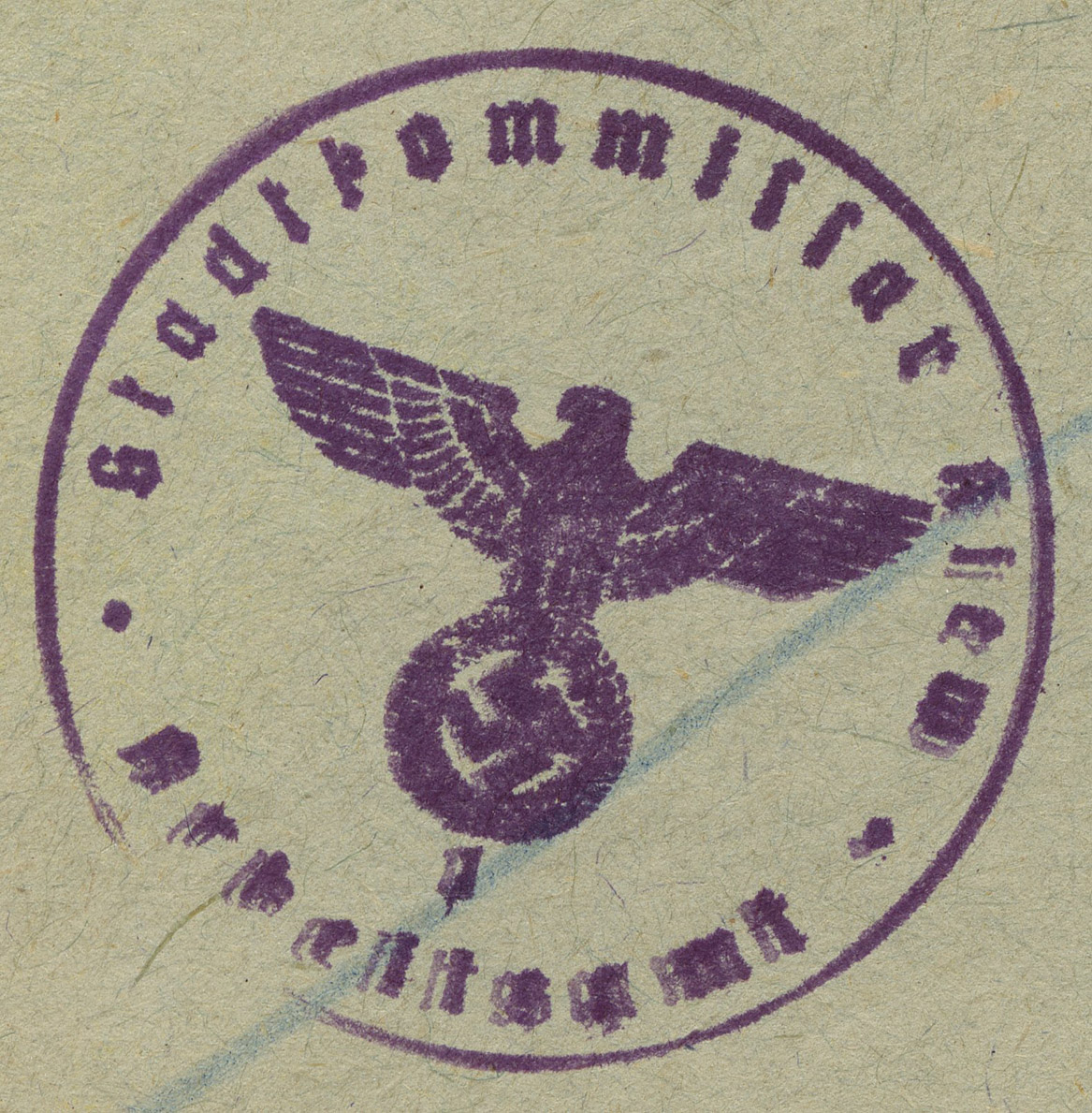
[Above: Office ink stamp close-up.]
_____________________________________________________________________________________
[Above: This was sent from Kriwoi-Rog (or 'Kryvyi Rih', a city in central Ukraine) to Westfalen (Westphalia is a region of northwestern Germany), postmarked January 14, 1943.]
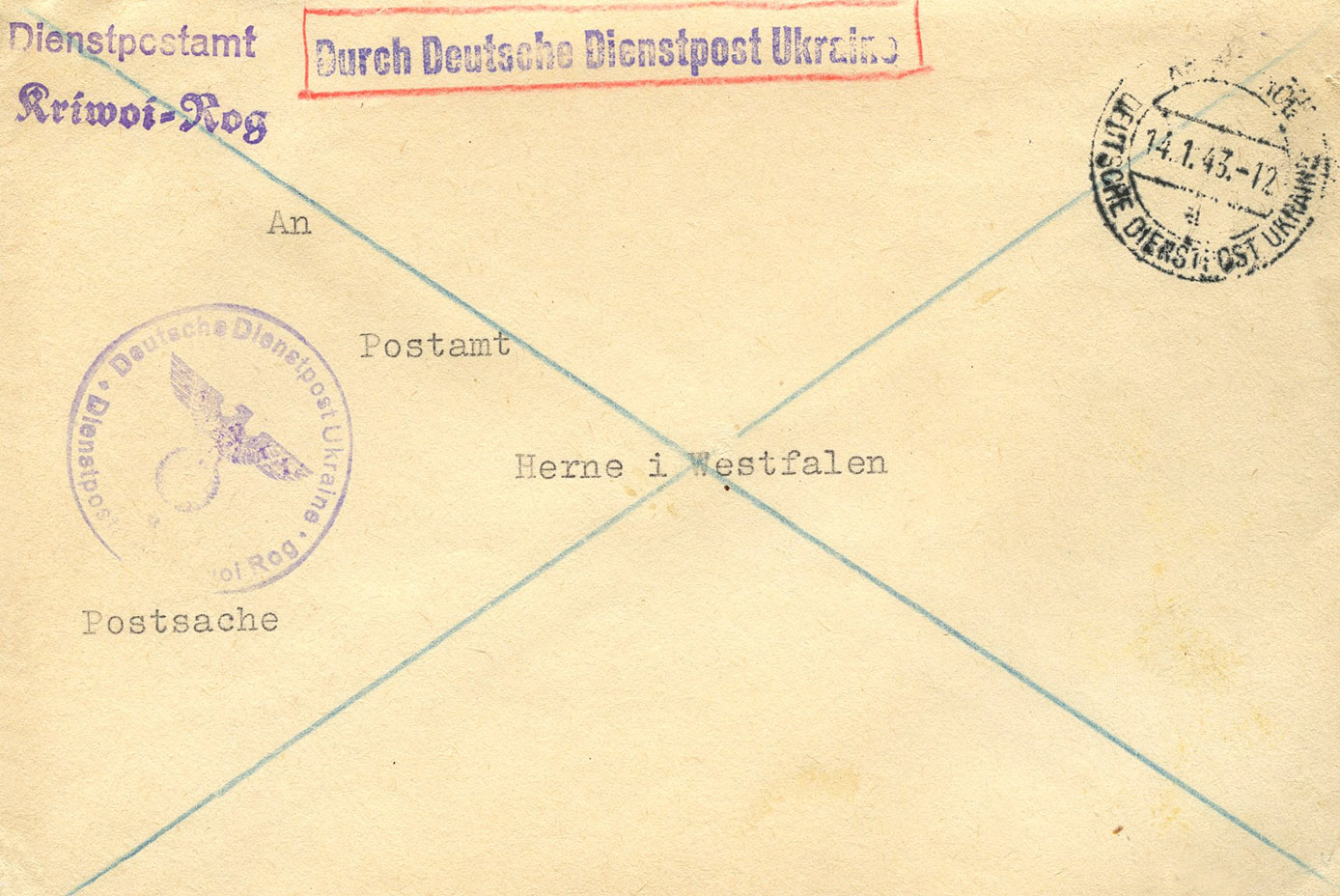
[Above: Ink office stamp up-close.]
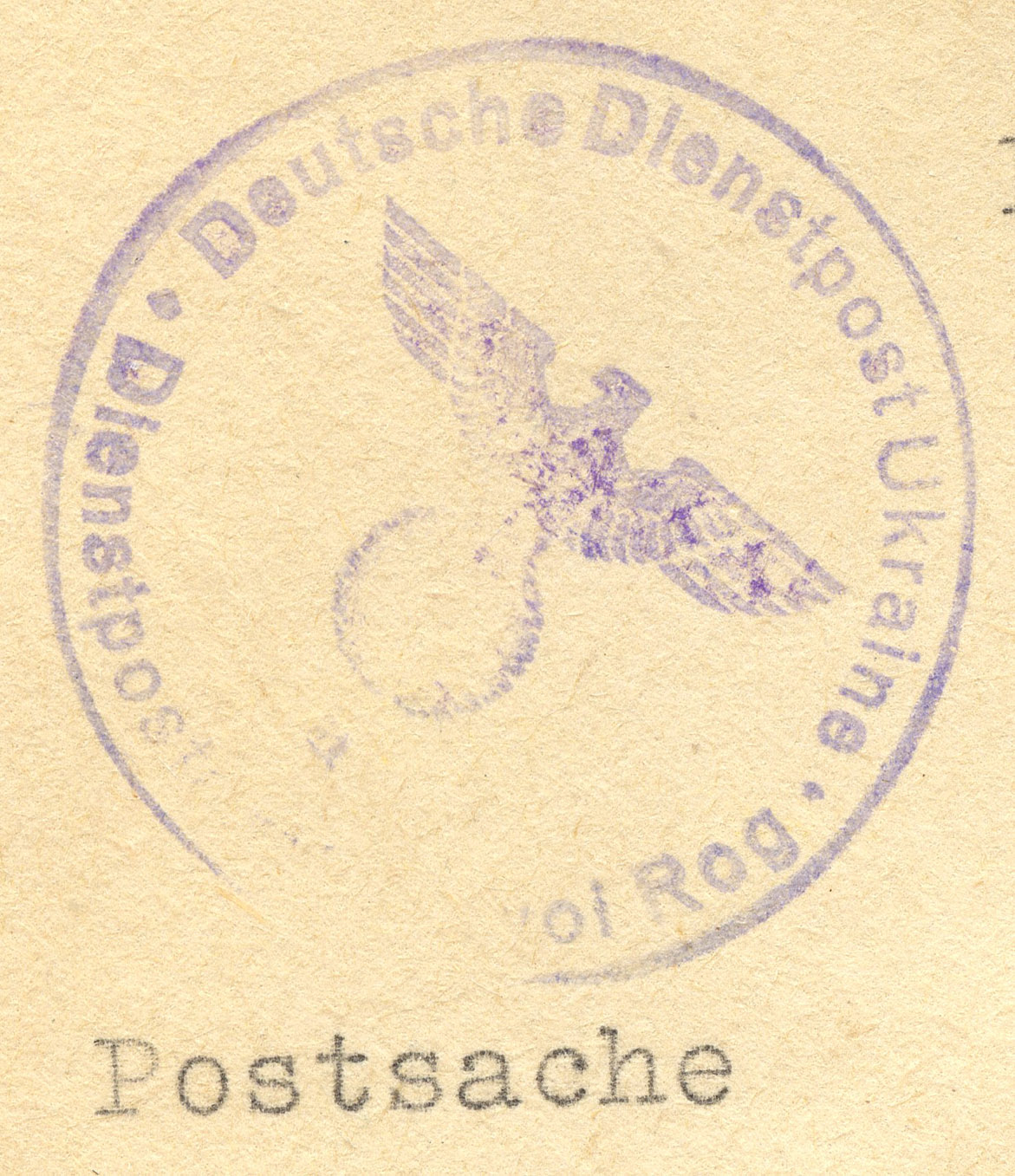
[Above: Envelope reverse.]
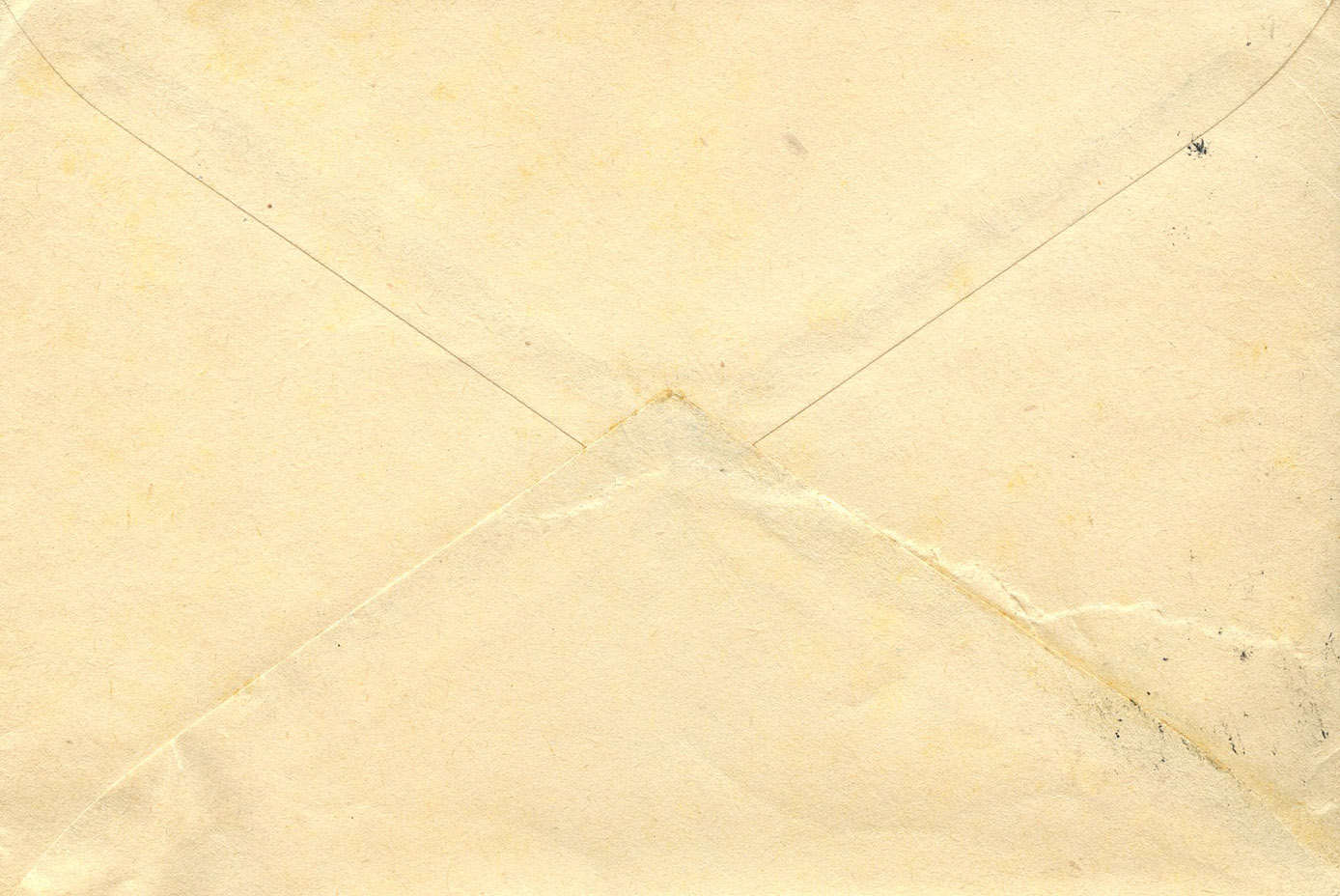
_____________________________________________________________________________________
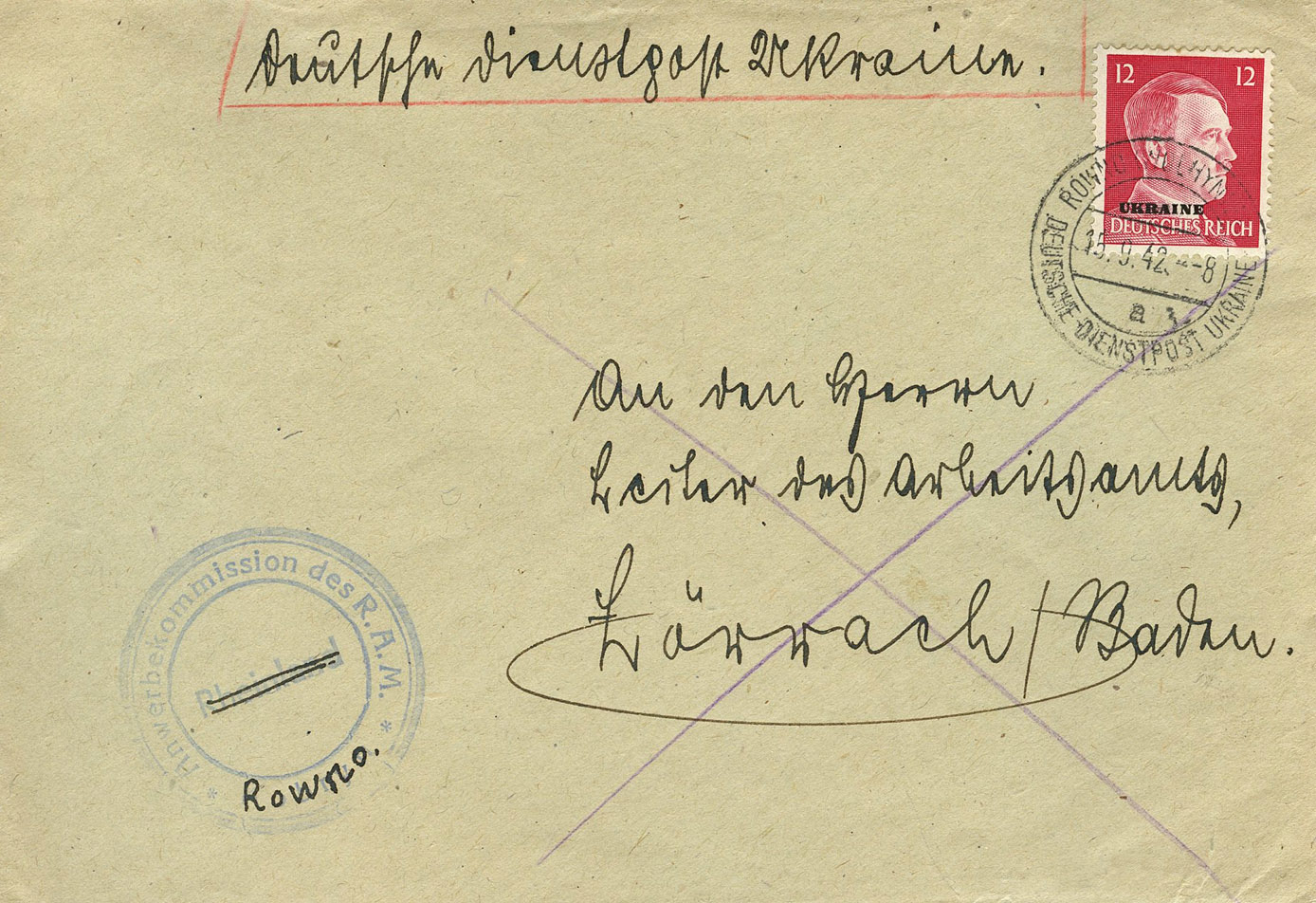
[Above: This was sent from Rowno (or 'Rivne', a city in western Ukraine with a 50% Jewish population in WWII.) to Lörrach, Germany, postmarked September 15, 1942. You will also notice an ink stamp that says 'Anwerbekommision des R.A.M.' (Recruitment Commission of the R.A.M.)]
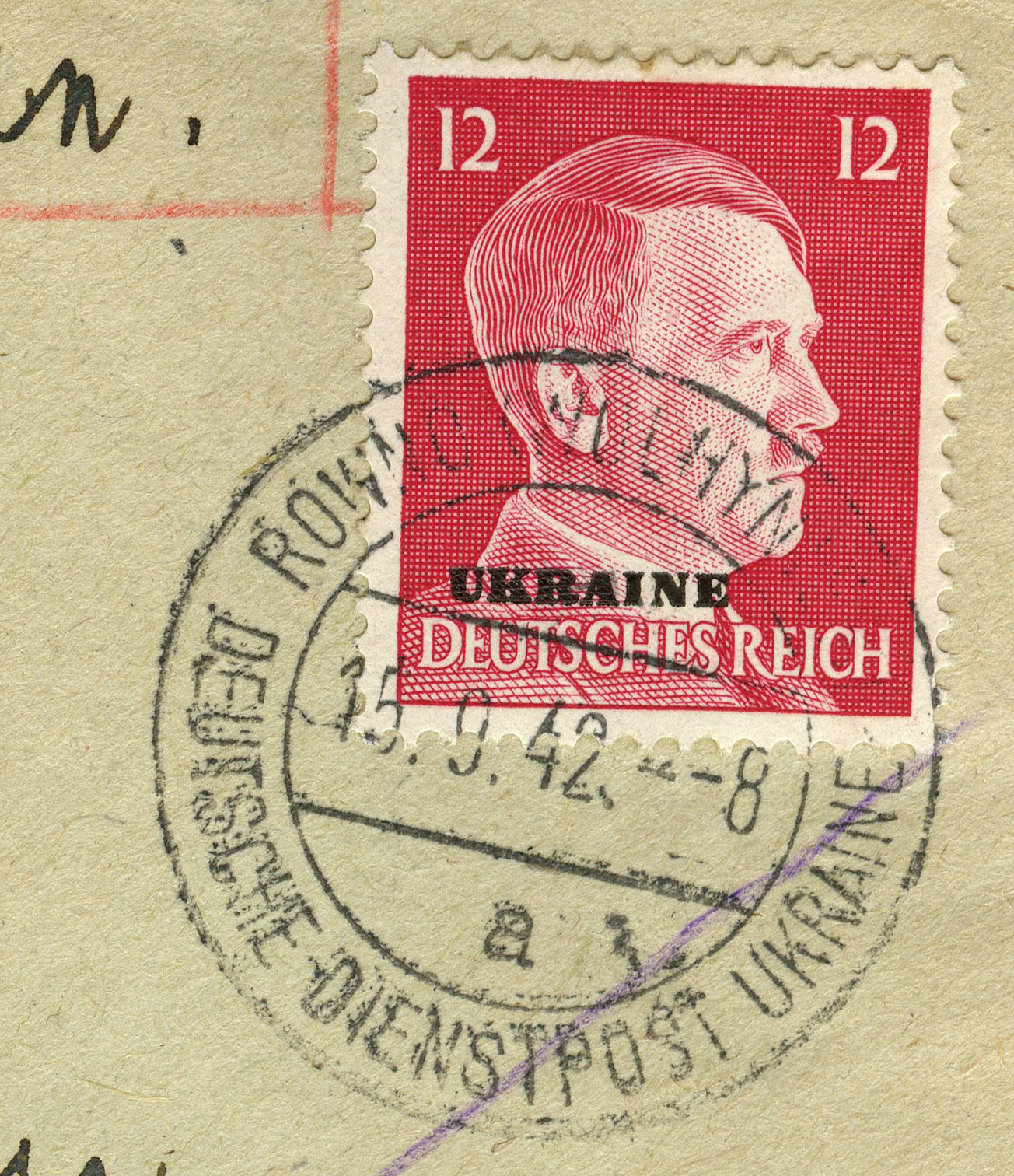
[Above: Stamp/cancel close-up]
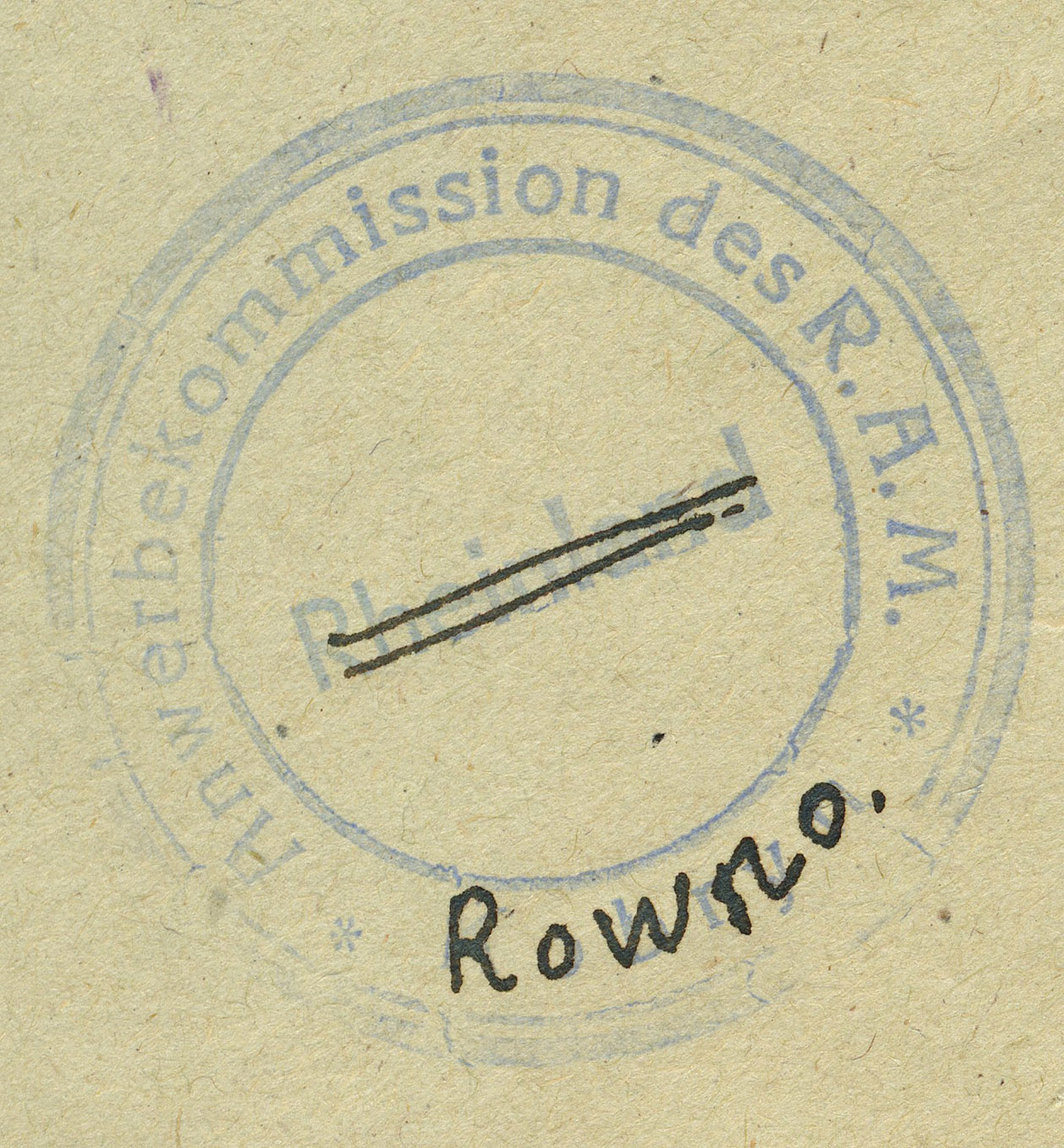
[Above: Ink office stamp of the 'Recruitment Commission of the R.A.M.'. I'm unsure at the moment what this stands for, does anyone know? It's interesting that they used a Rheinland stamper and just crossed it out and wrote in Rowno over another word below it.]
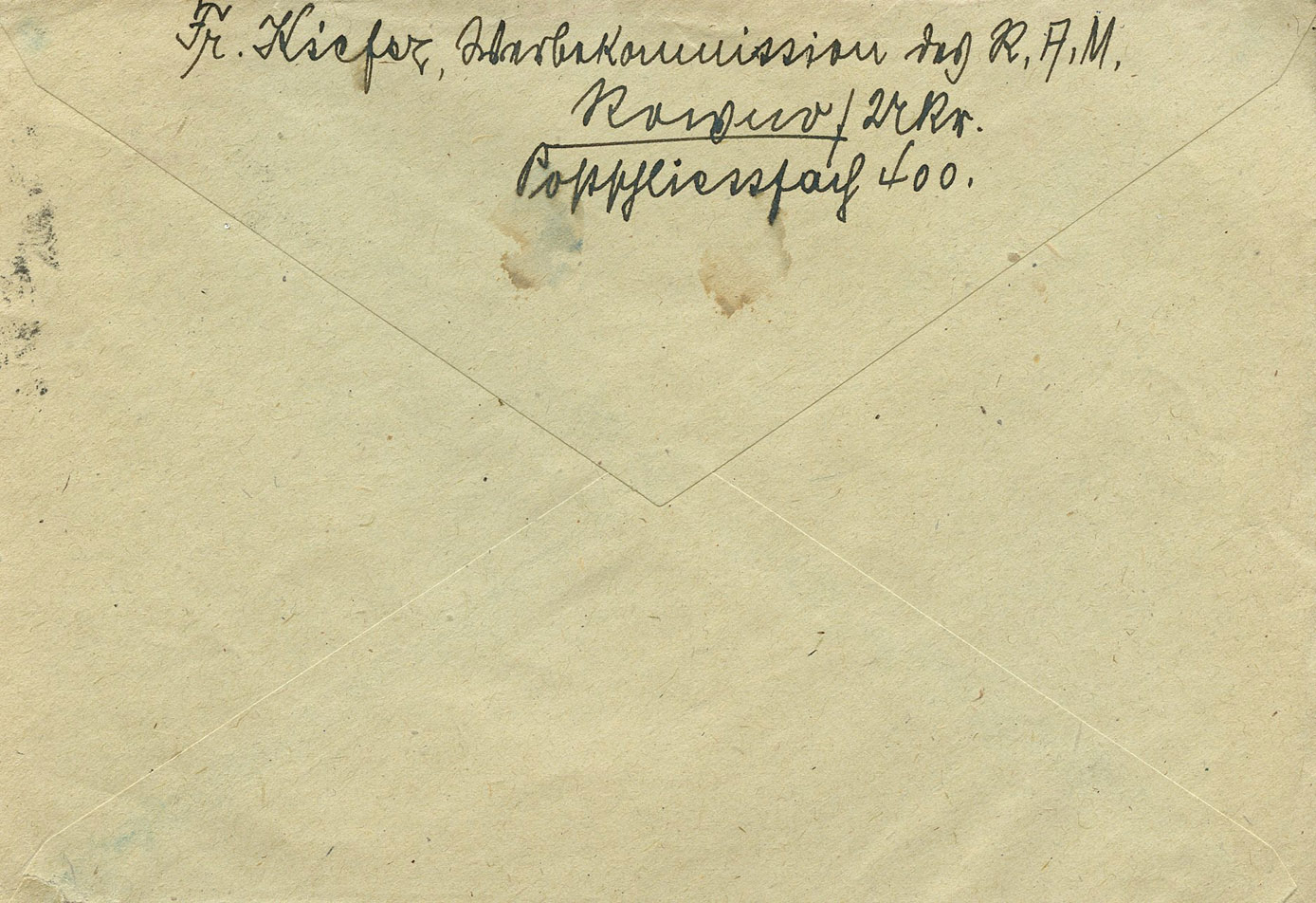
[Above: Envelope reverse.]
_____________________________________________________________________________________
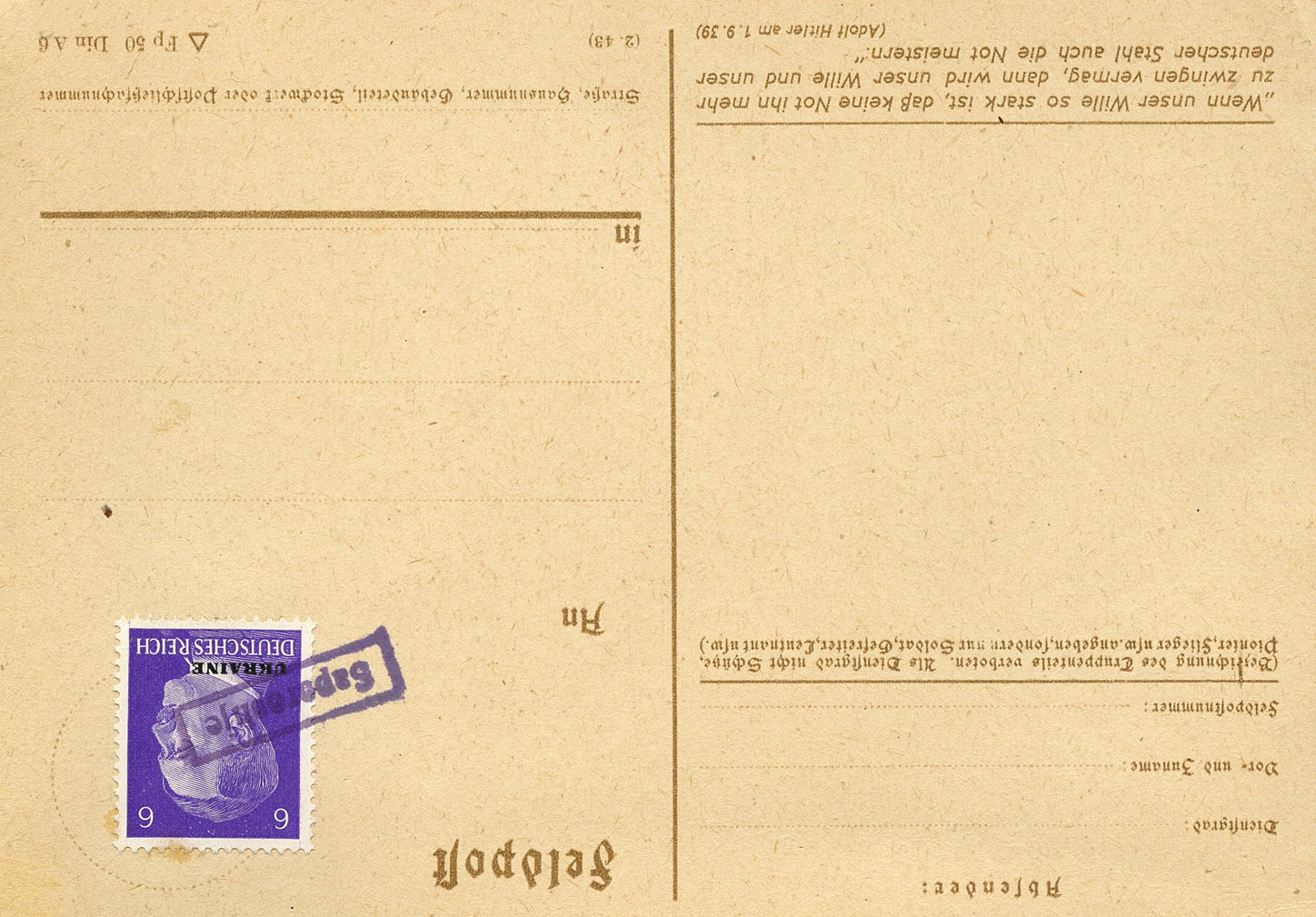
[Above: This postcard is pre-canceled from Saporoshje (or 'Zaporizhzhia', a city in southeast Ukraine, situated on the banks of the Dnieper River). The quote on the bottom says:
'Wenn unser Wille so stark ist, daß keine Not ihn mehr zu zwingen vermag, dann wird unser Wille und unser deutscher Stahl auch die Not meistern. Adolf Hitler am 1.9.39'
(If our will is so strong that no necessity can force it anymore, then our will and our German steel will also master the need. Adolf Hitler on 1.9.39).]
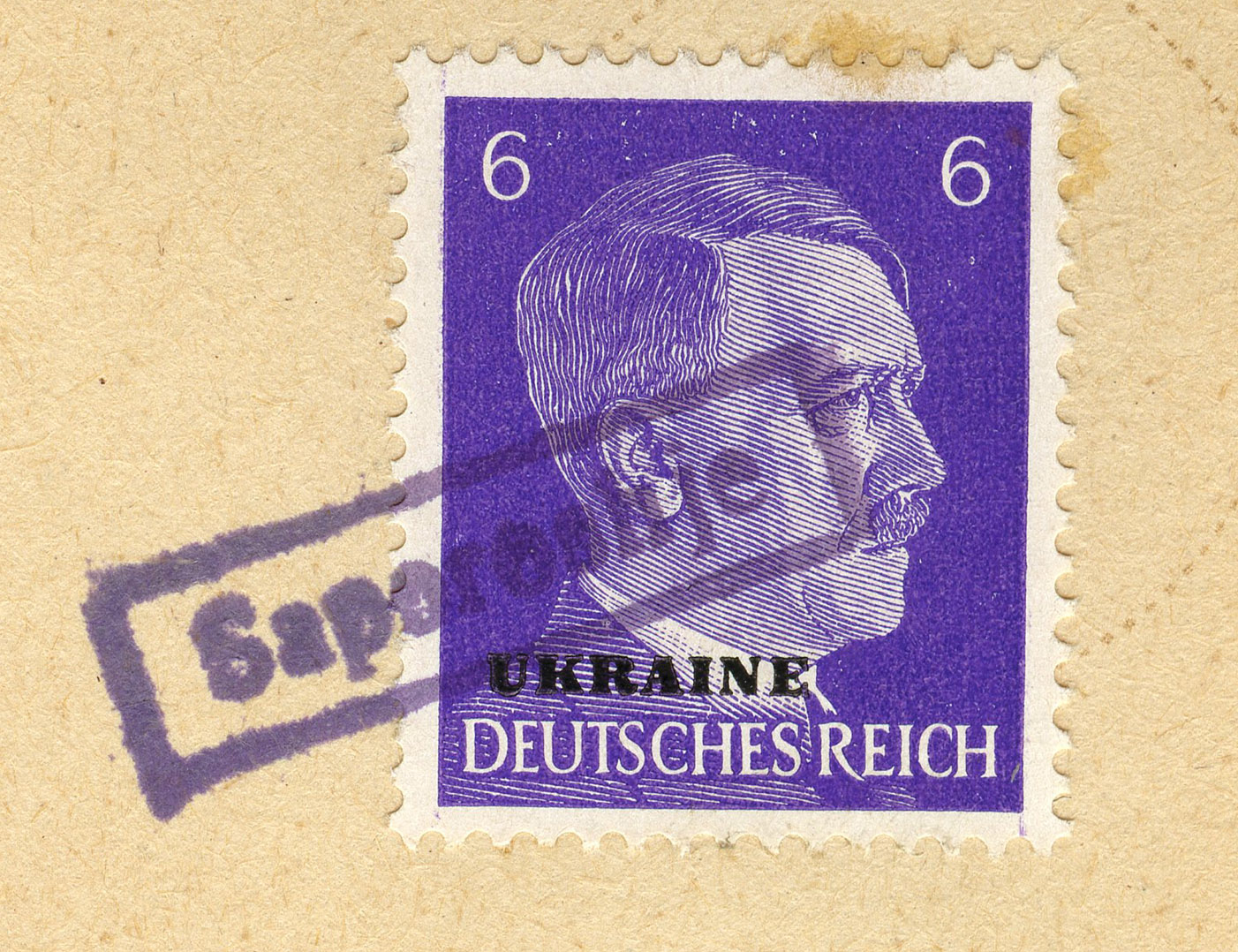
[Above: Stamp/cancel close-up.]
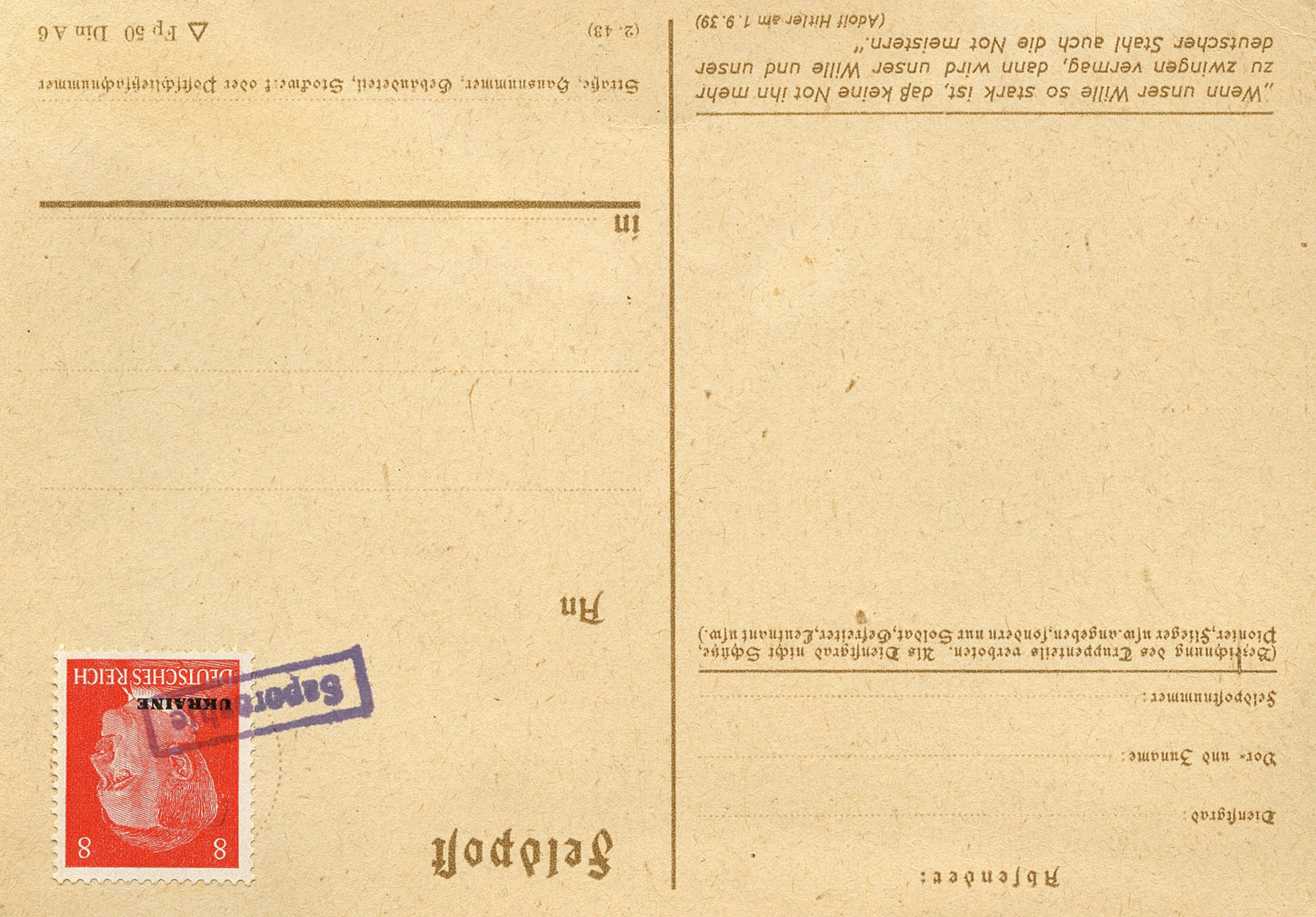
[Above: Another postcard like that above, but a higher denomination stamp.]
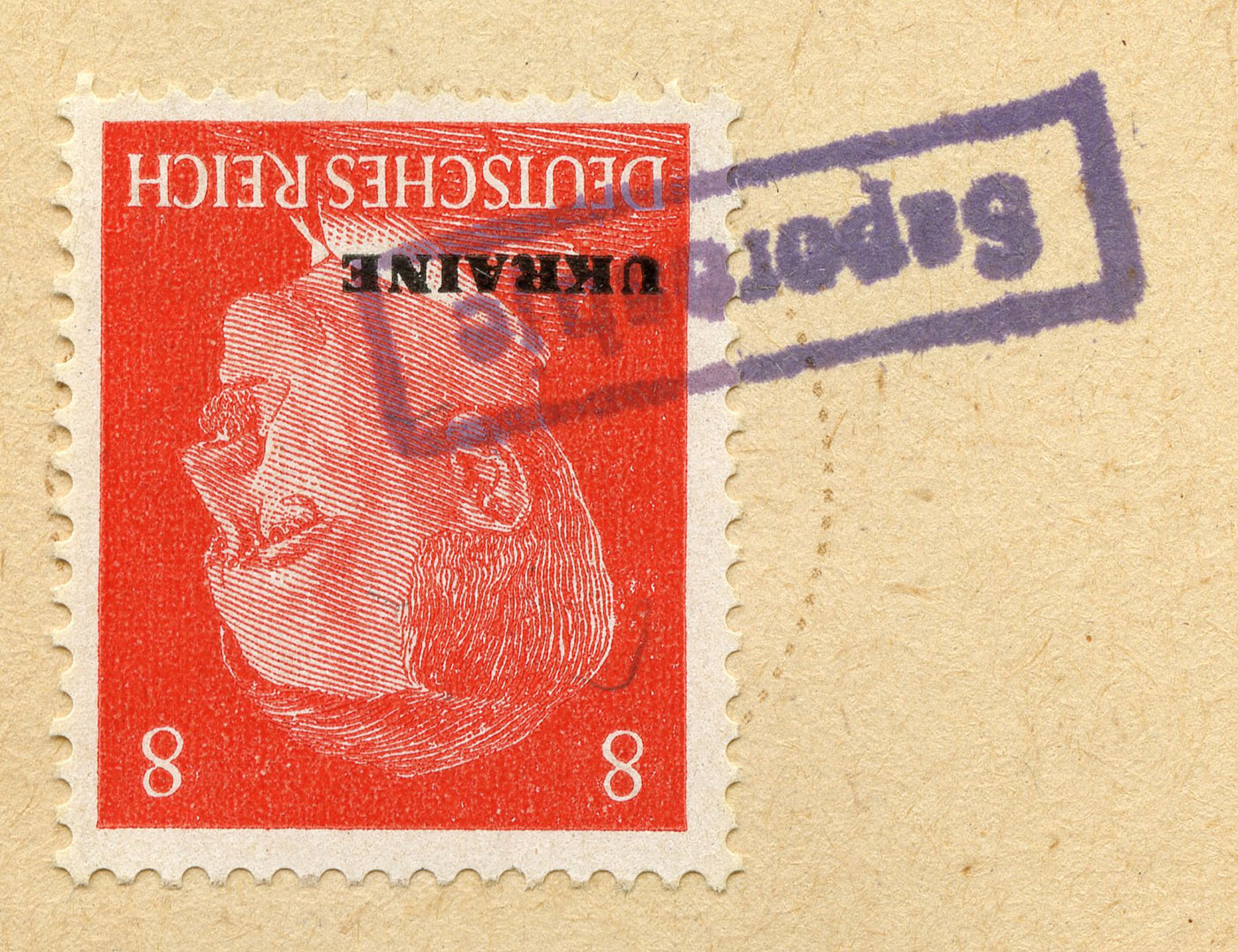
[Above: Stamp/cancel close-up.]
_____________________________________________________________________________________

[Above: This 1943 package form is from Luzk, from the General Kommissar. It says:
Bescheinigung des Empfängers
(bei versiegelten Wertpaketen)
Umstehend bezeichnete Sendung.......
(Certificate of the consignee
(in the case of sealed valuables)
Consignment marked around it......)]
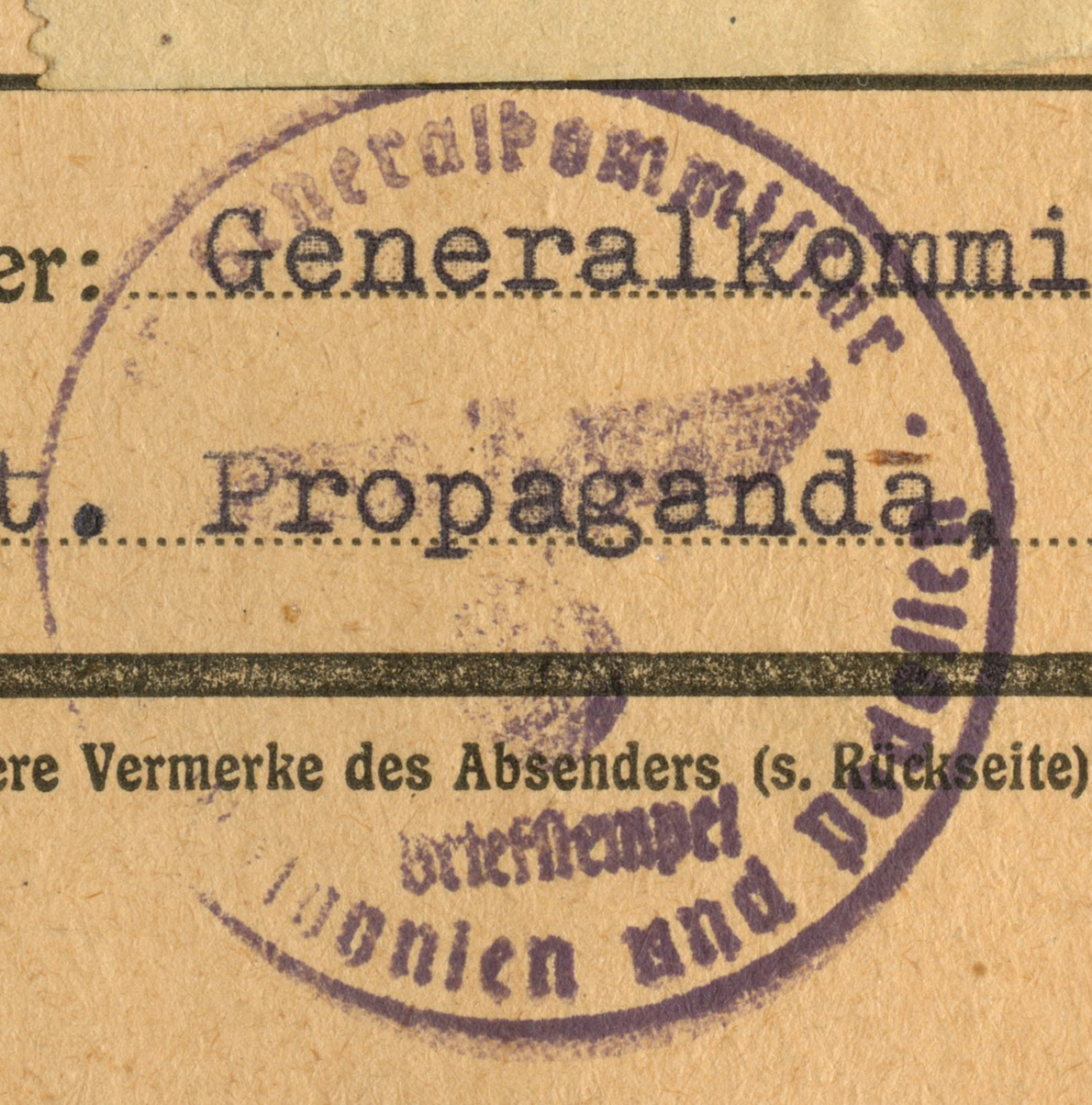
[Above: Ink office stamp close-up.]
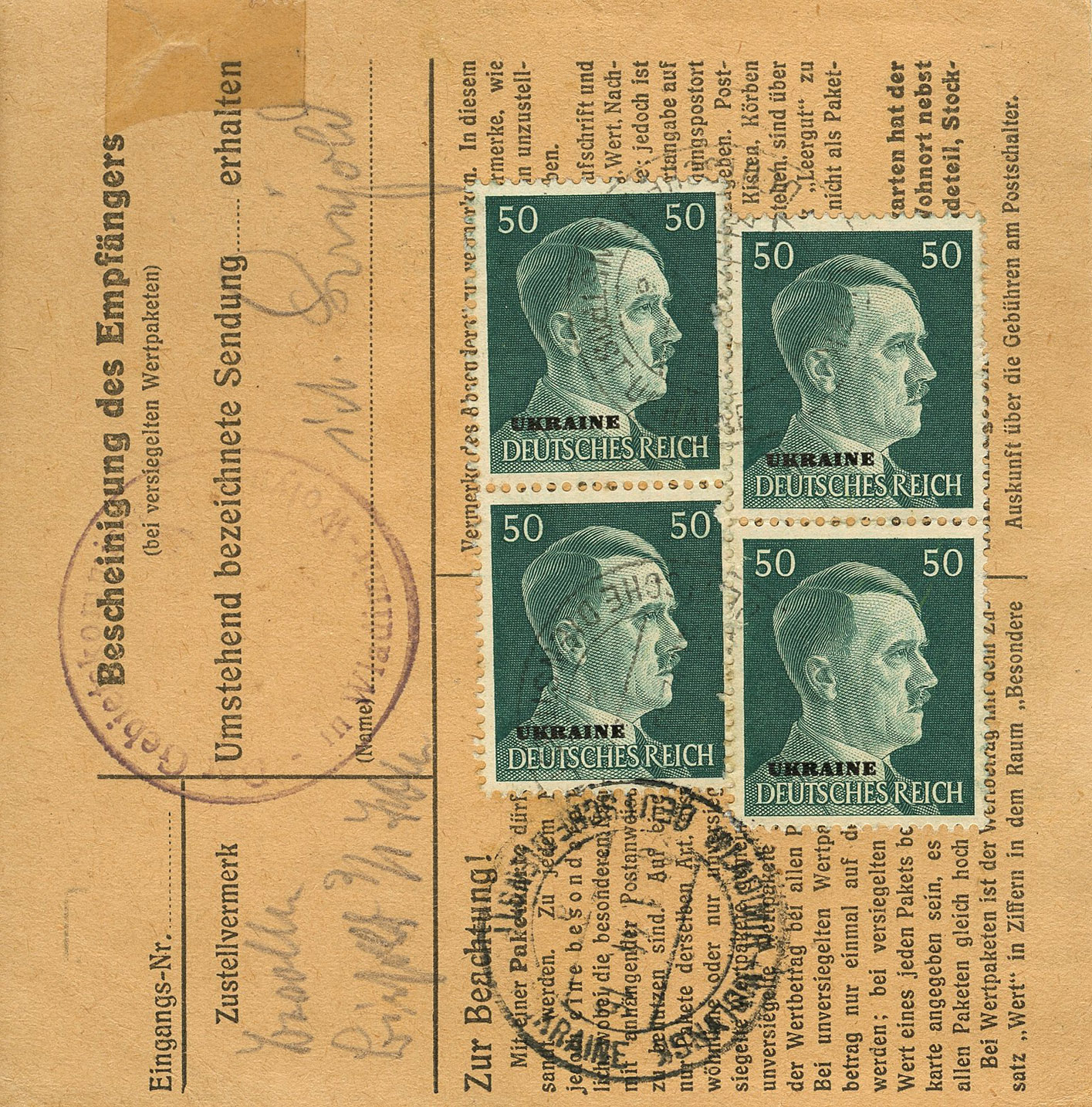
[Above: Package form reverse.]
_____________________________________________________________________________________
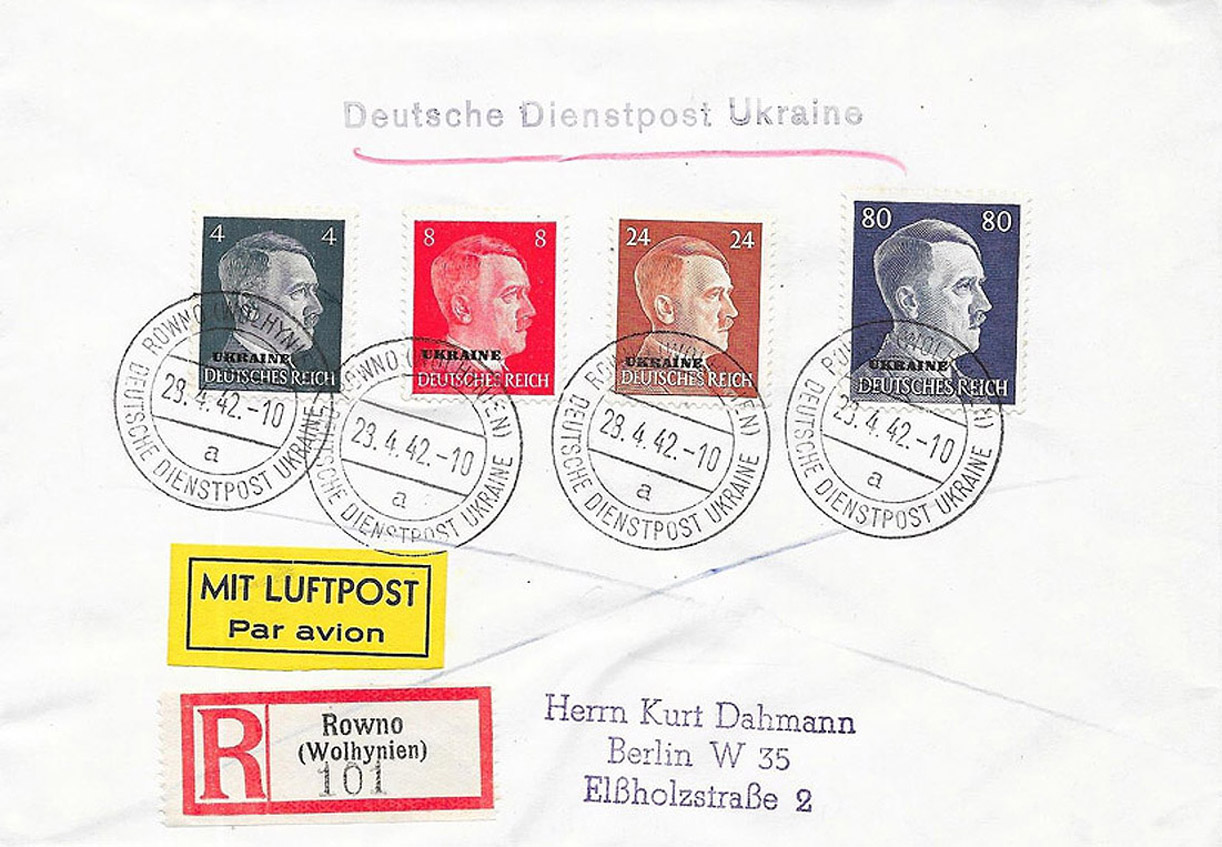
[Above: Envelope from Rowno showing usage of a overprinted 'Hitler head' stamps.]
_____________________________________________________________________________________
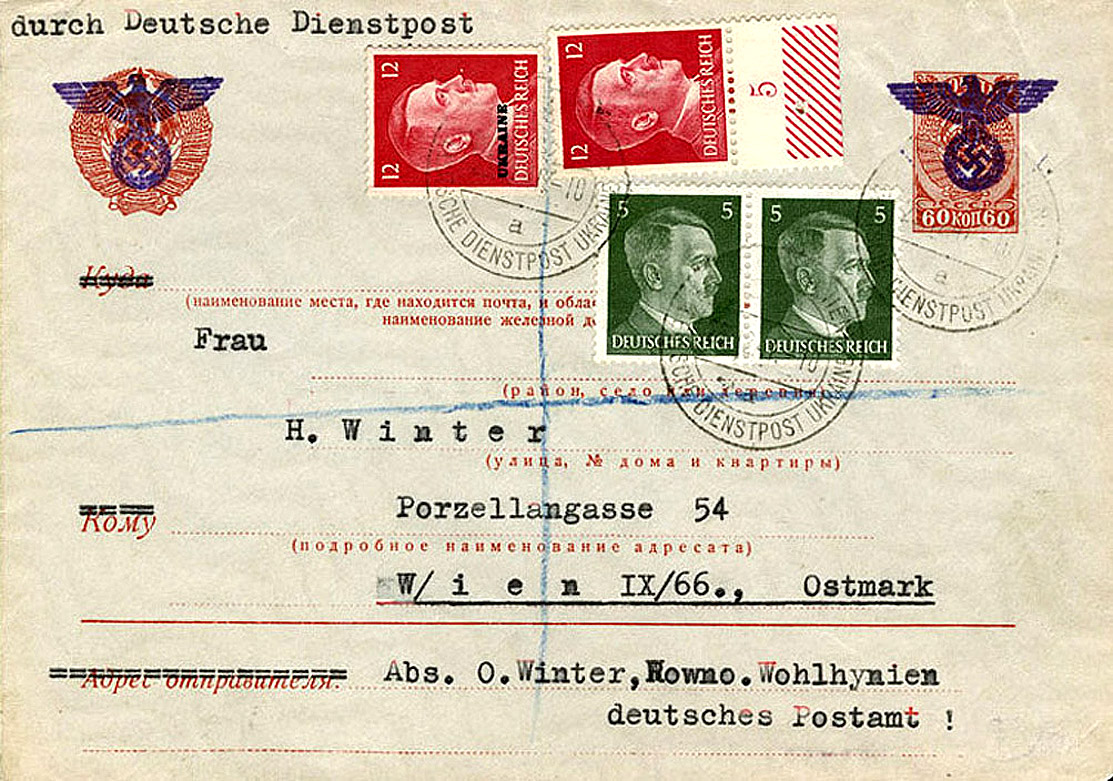
[Above: Government used German liberation of Ukraine envelope. Only one 'Hitler head' stamp is overprinted 'UKRAINE' probably because of a shortage of such. Note the eagle and swastika stamps overprinting the pre-printed Russian postage and hammer/sickle/wreath.]
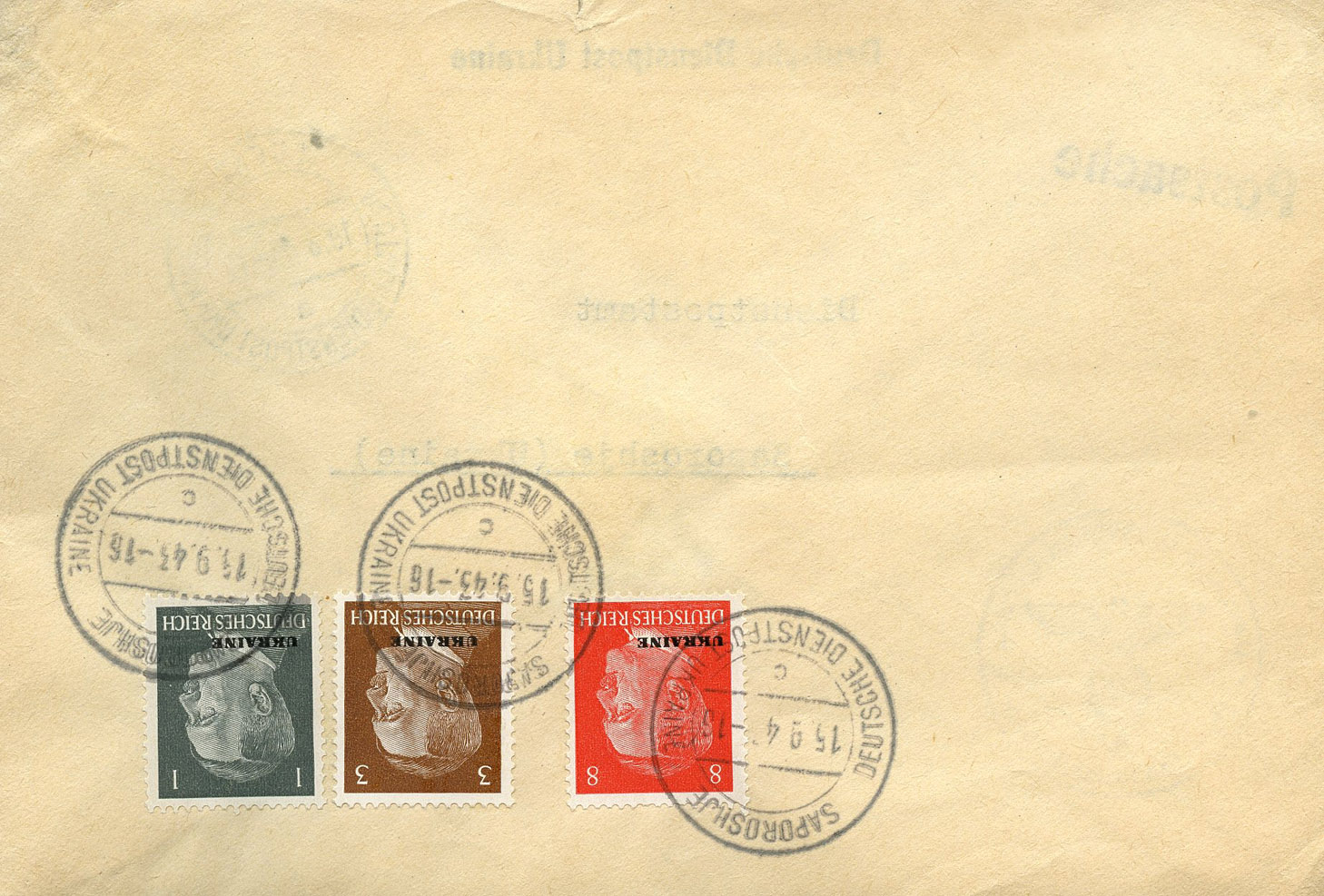
[Above: Here is an unaddressed envelope from Saporoshje (Zaporizhzhia), from September 15, 1943.]
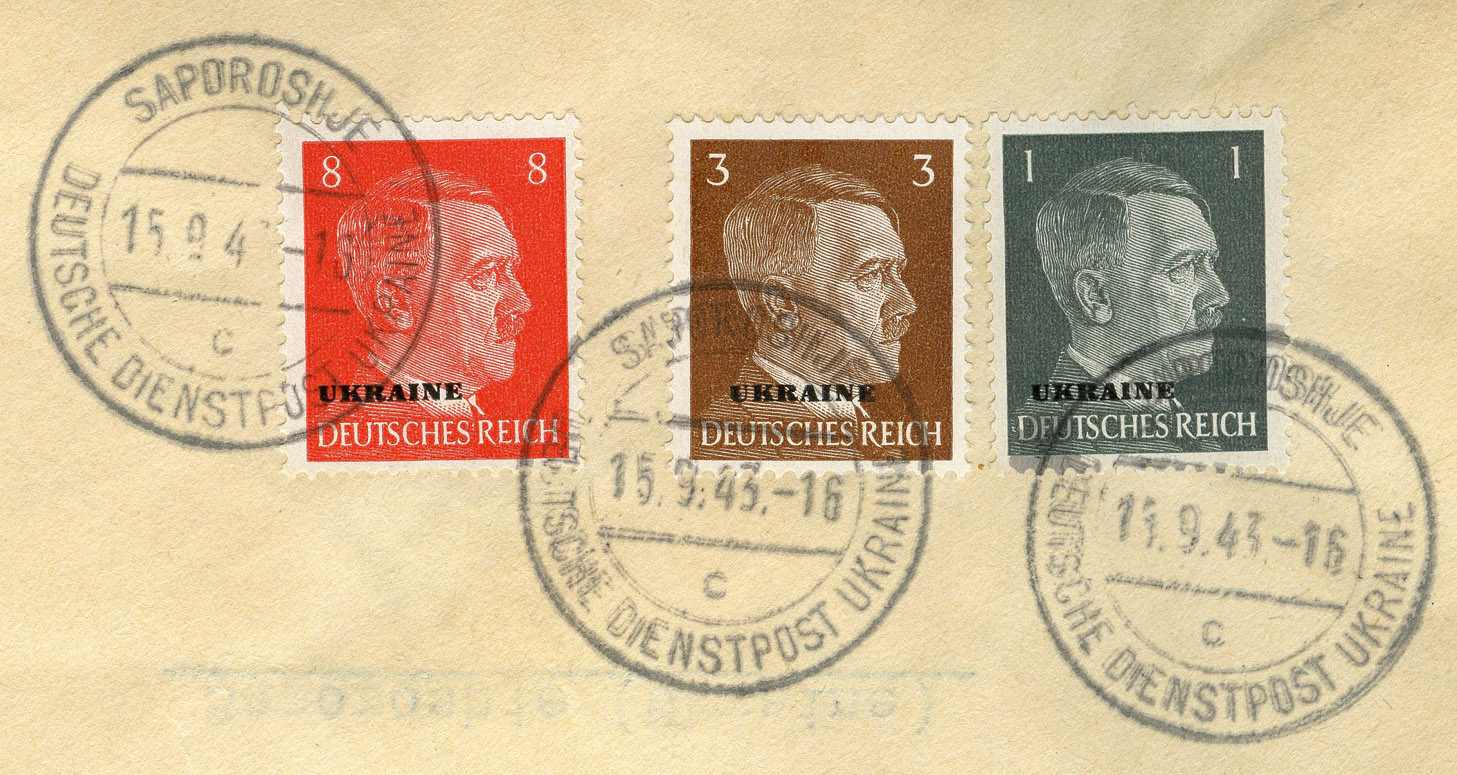
[Above: Stamps/cancels close-up.]
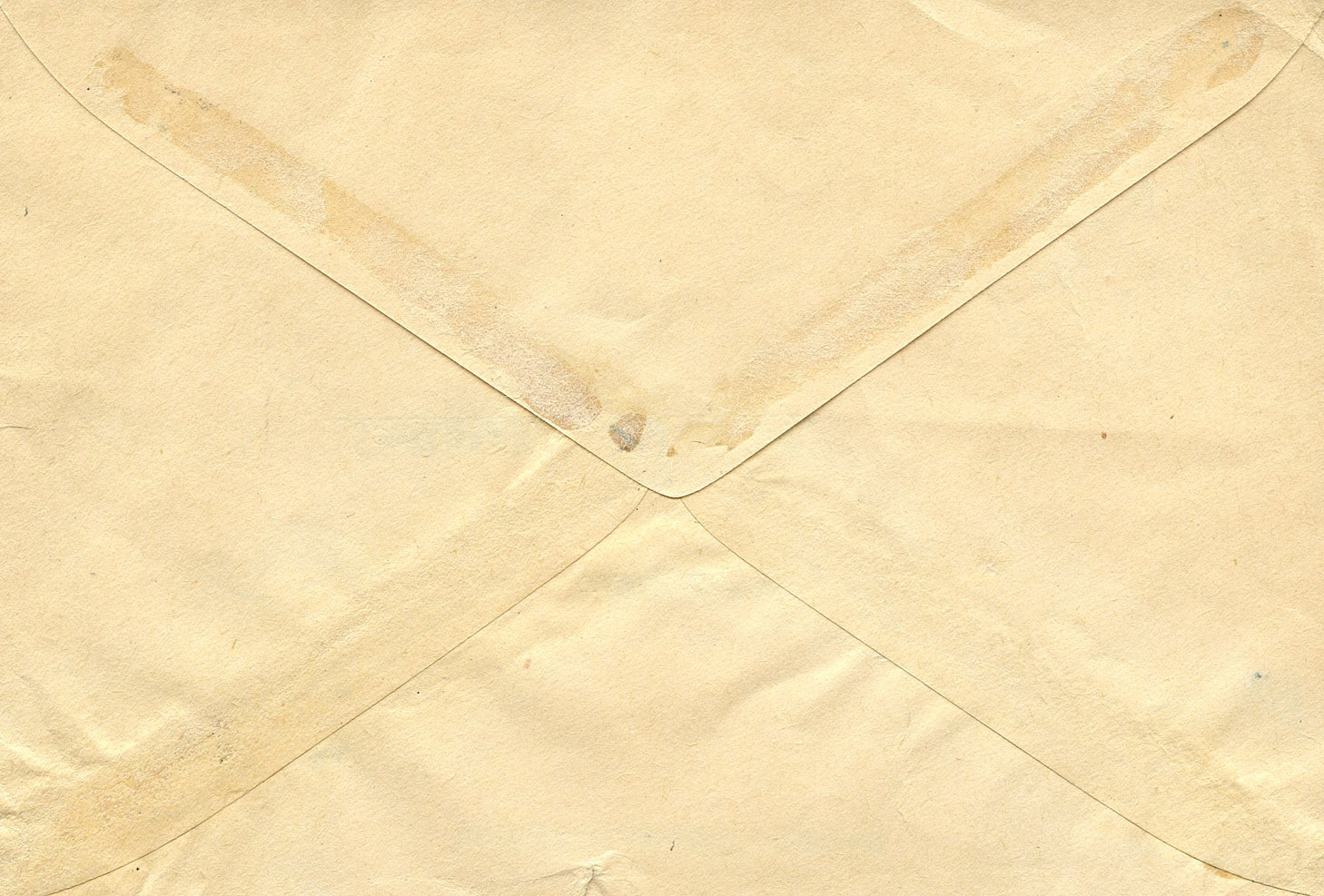
[Above: Envelope reverse. You can see that it has been glued together.]
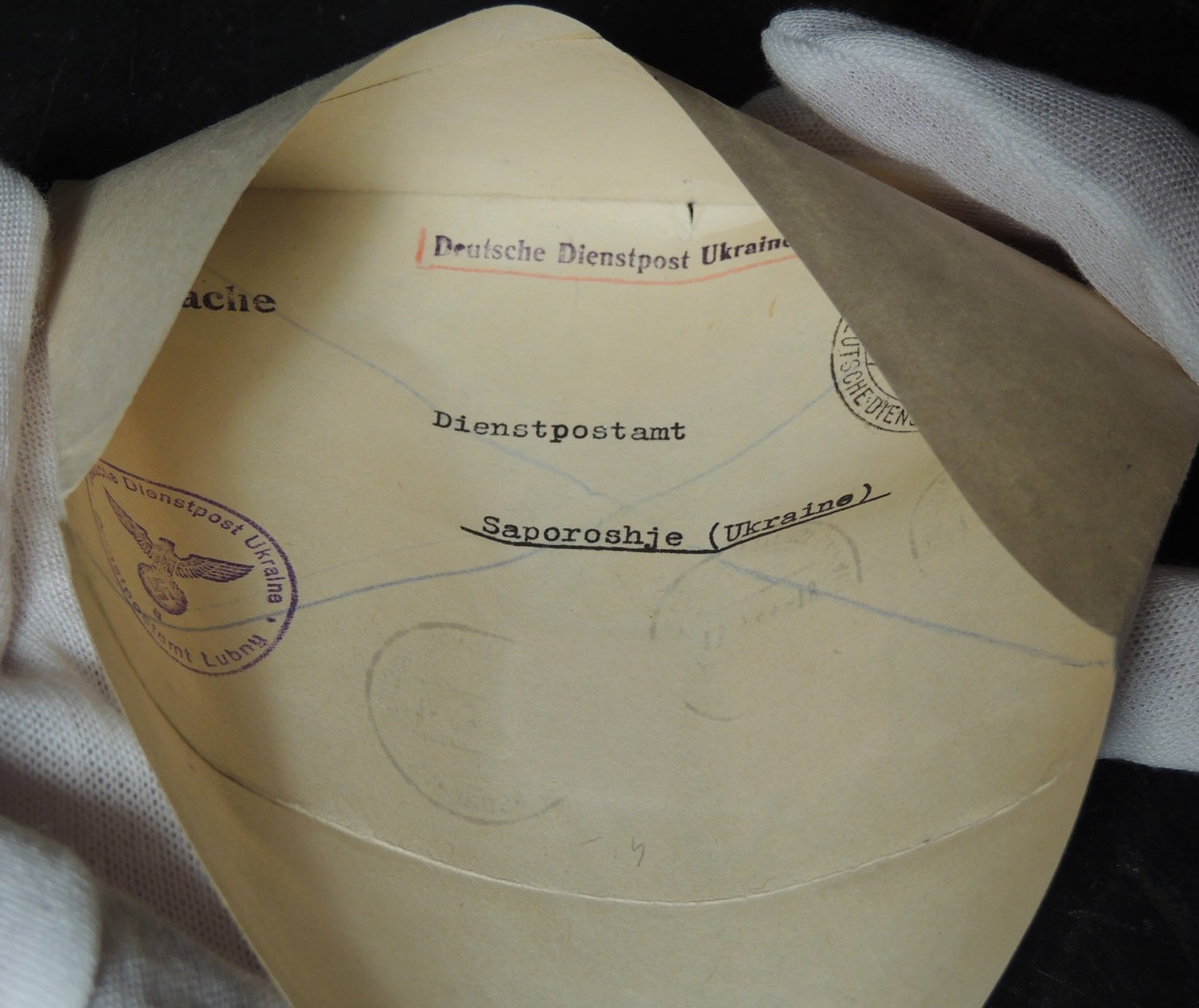
[Above: A look inside. We can see that this was sent to Saporoshje from Lubny (central Ukraine).]
_____________________________________________________________________________________
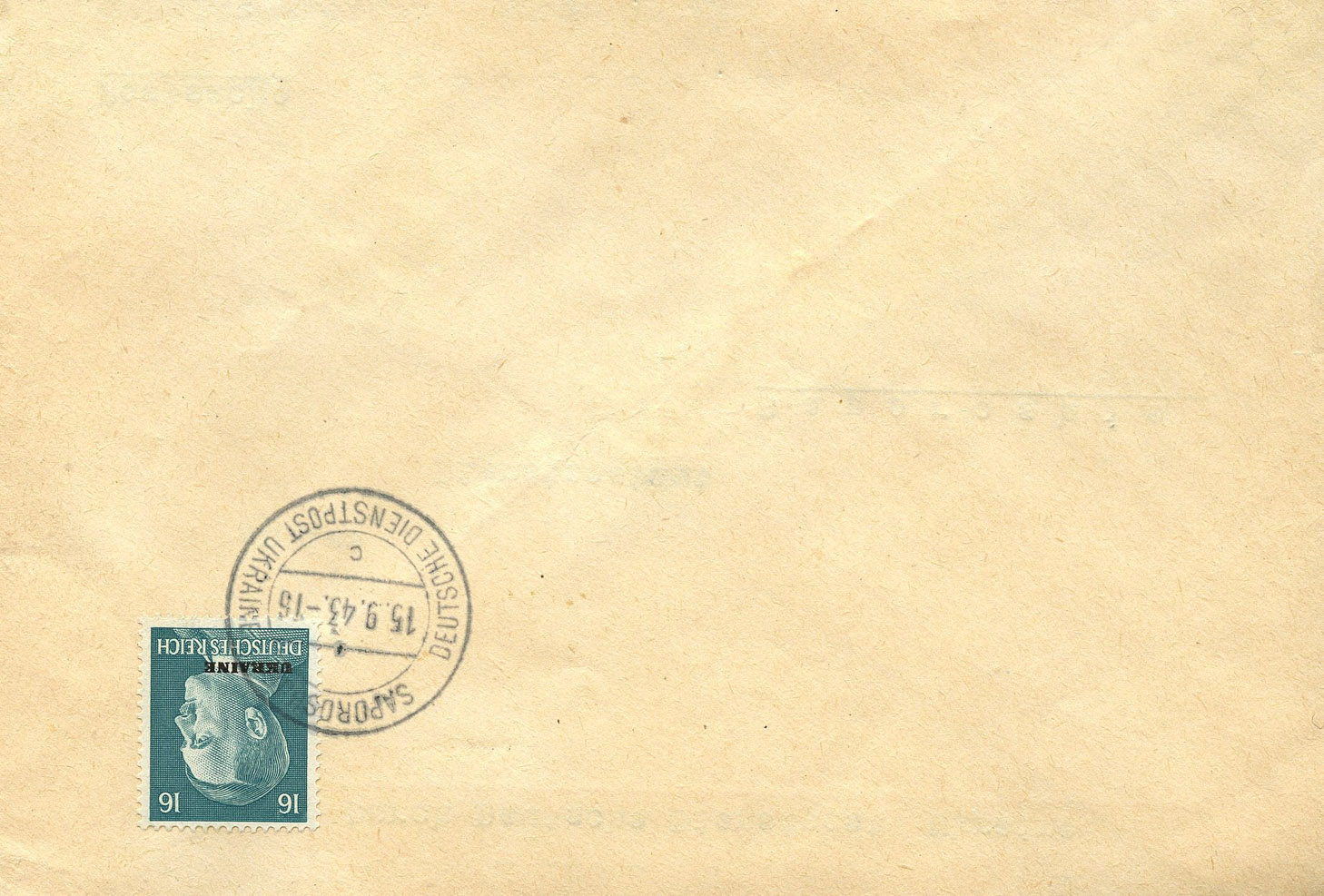
[Above: Like that above, another unaddressed envelope from Saporoshje (Zaporizhzhia), from September 15, 1943.]
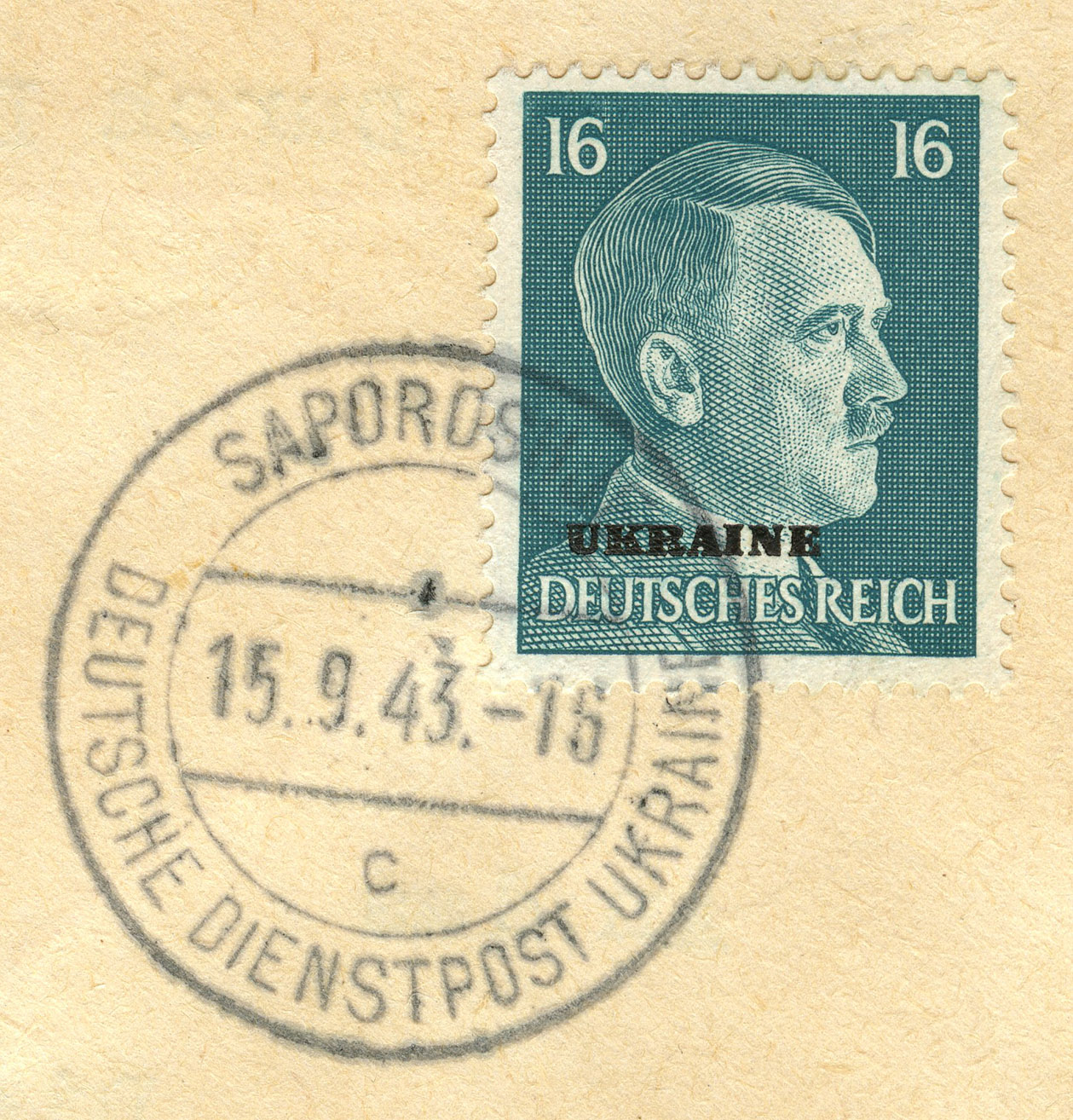
[Above: Stamps/cancel close-up.]
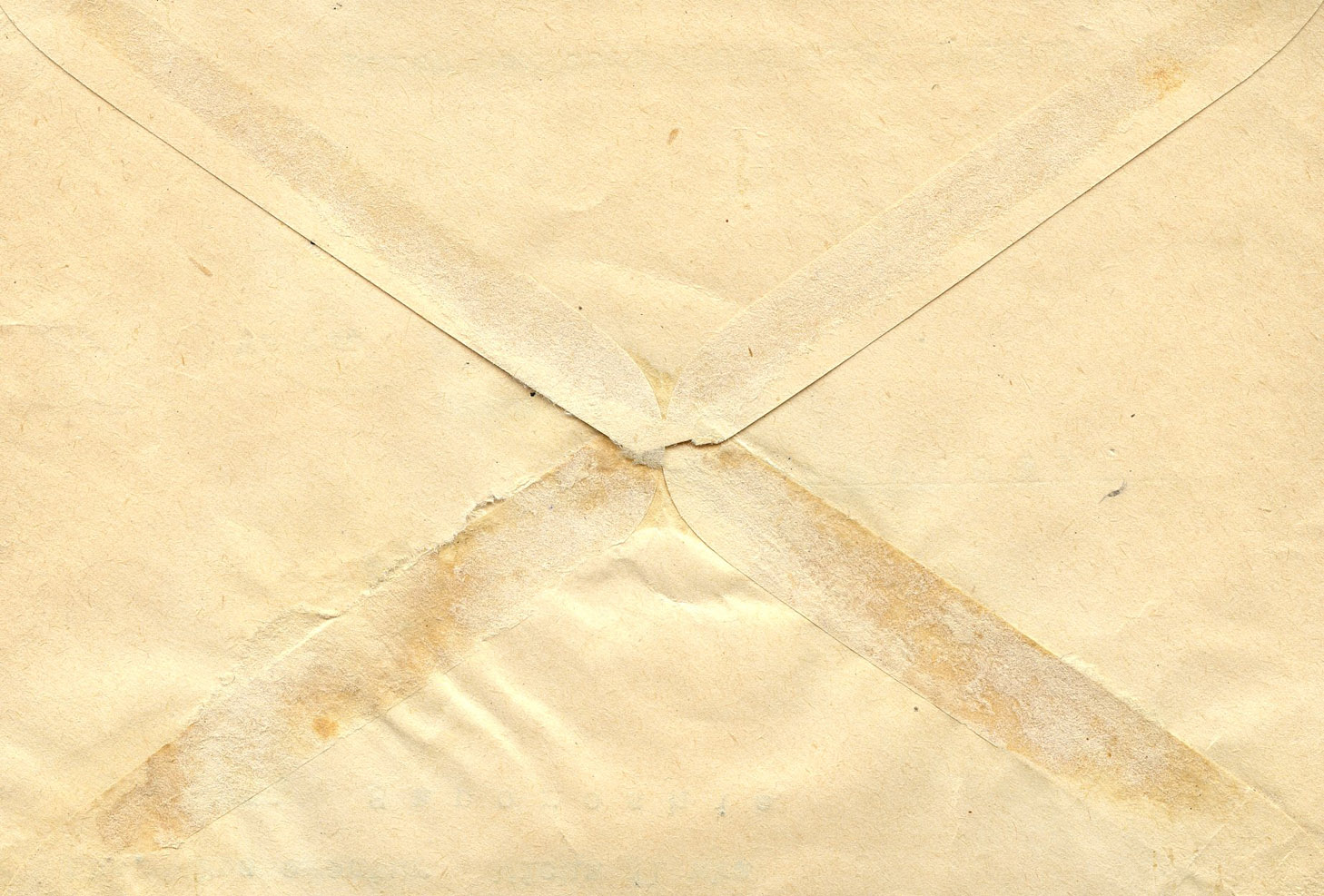
[Above: Envelope reverse. You can see that it has been glued together.]
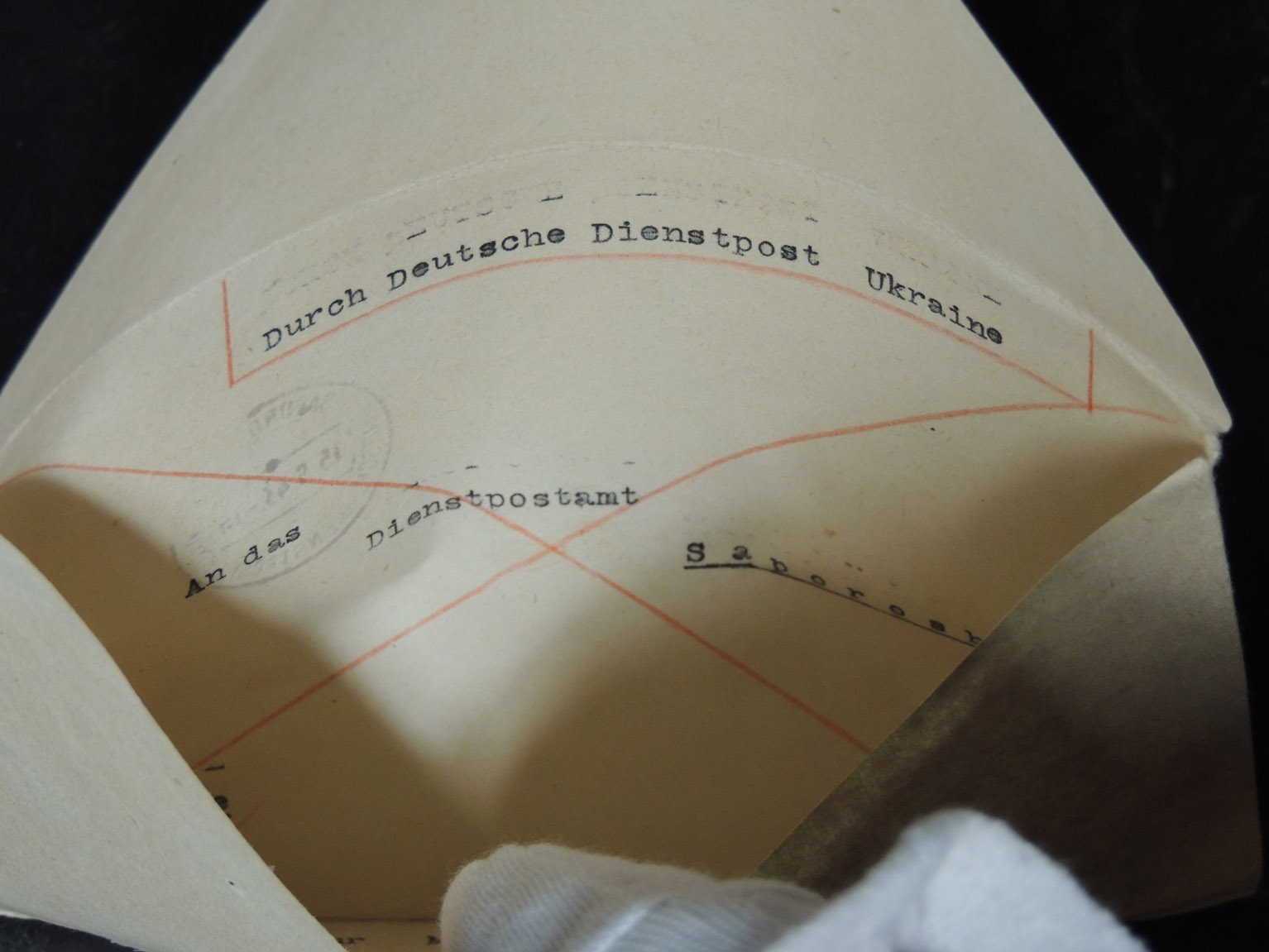
[Above: A look inside. We can see that this was sent to Saporoshje.]
_____________________________________________________________________________________
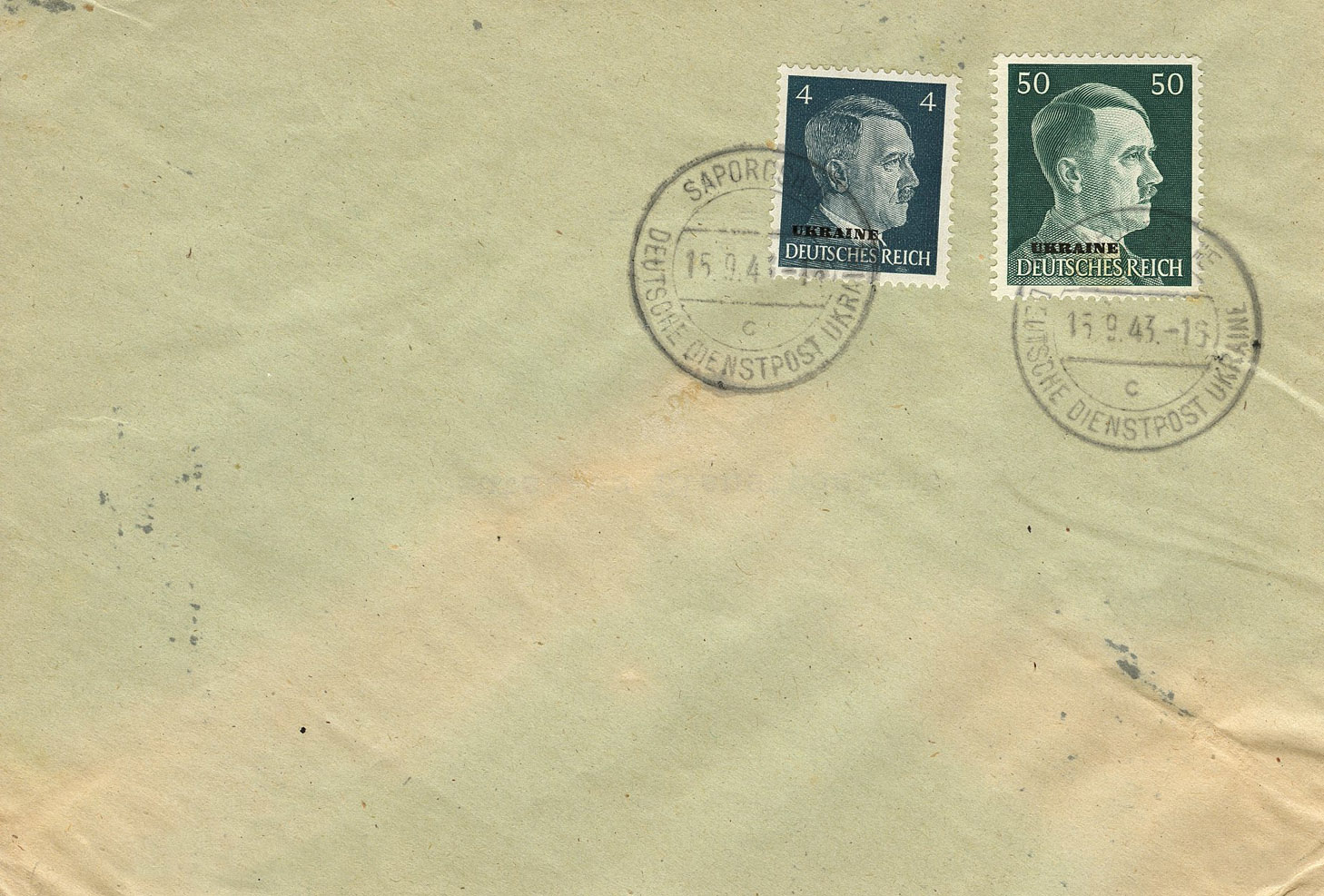
[Above: Like those above, another unaddressed envelope from Saporoshje (Zaporizhzhia), from September 15, 1943.]
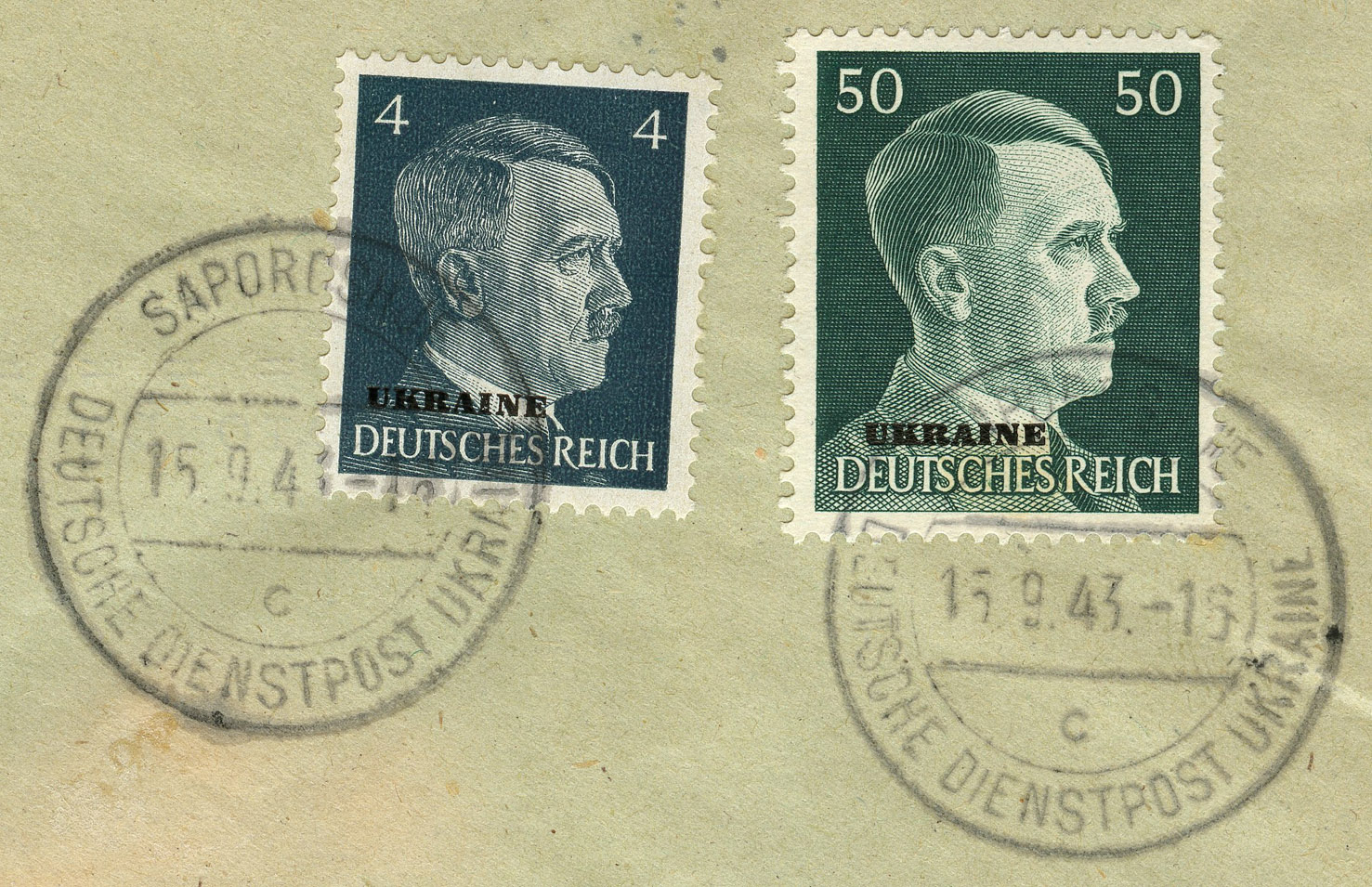
[Above: Stamps/cancels close-up.]
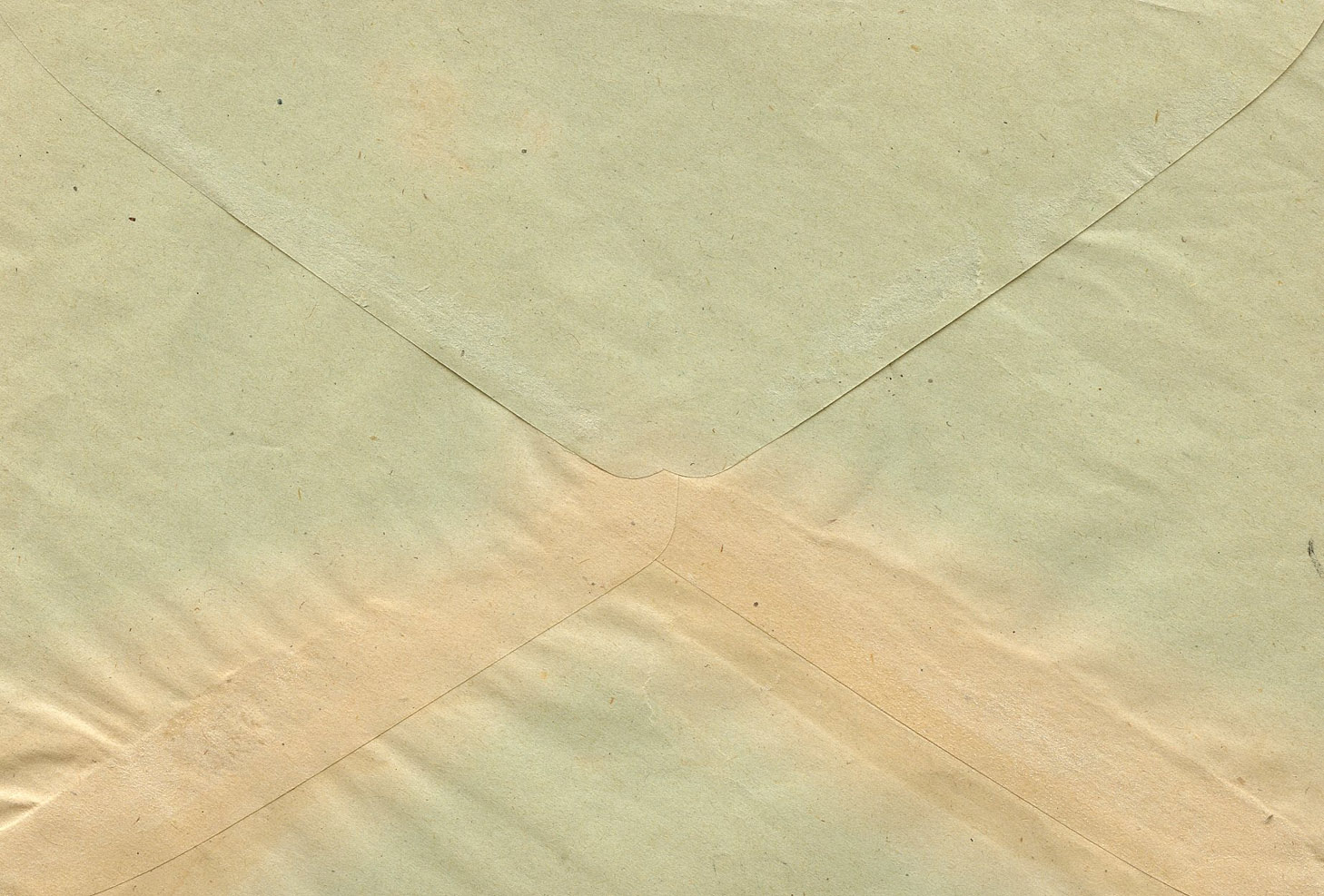
[Above: Envelope reverse. You can see that it has been glued together.]
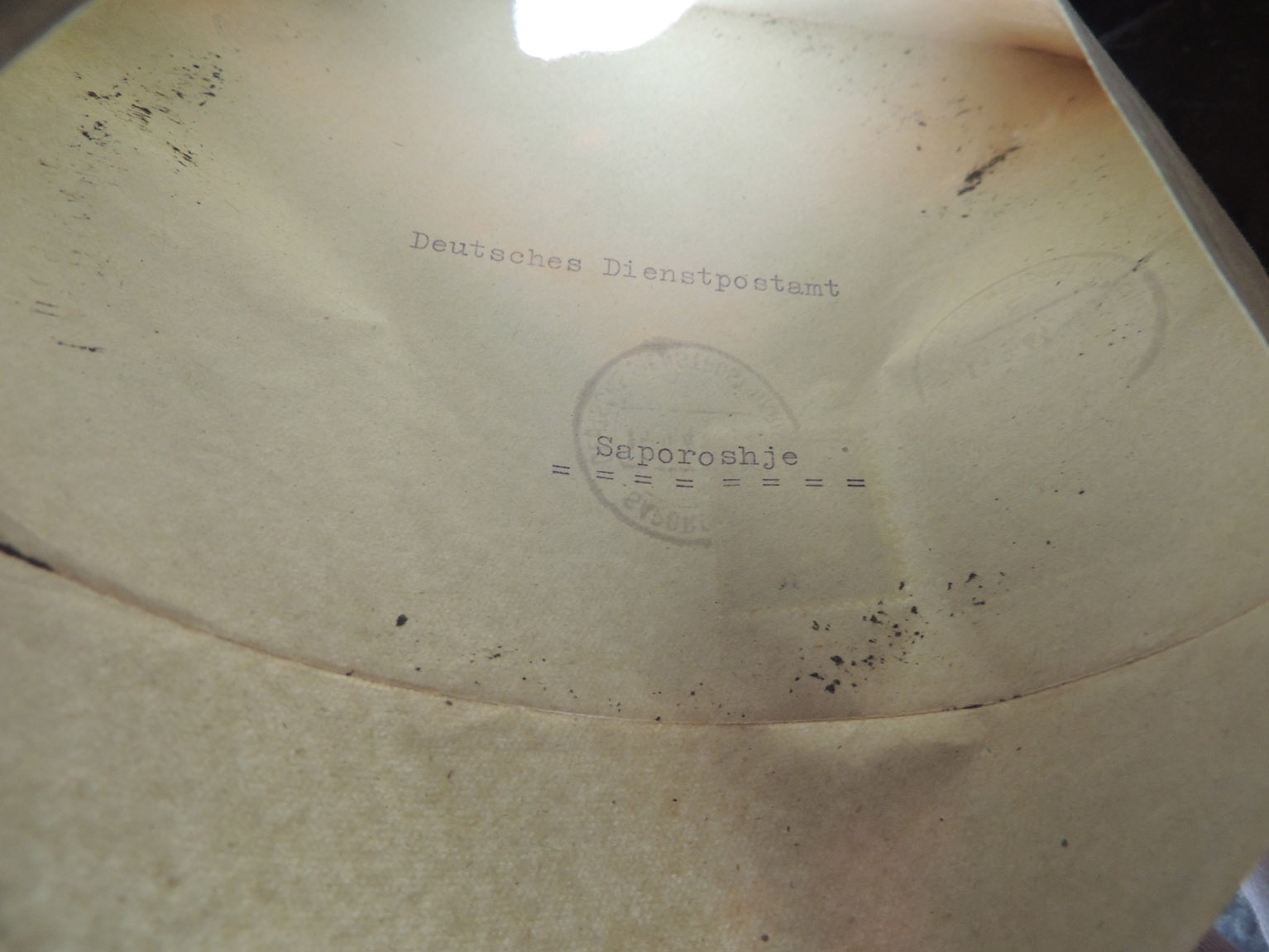
[Above: A look inside. We can see that this was sent to Saporoshje.]
_____________________________________________________________________________________
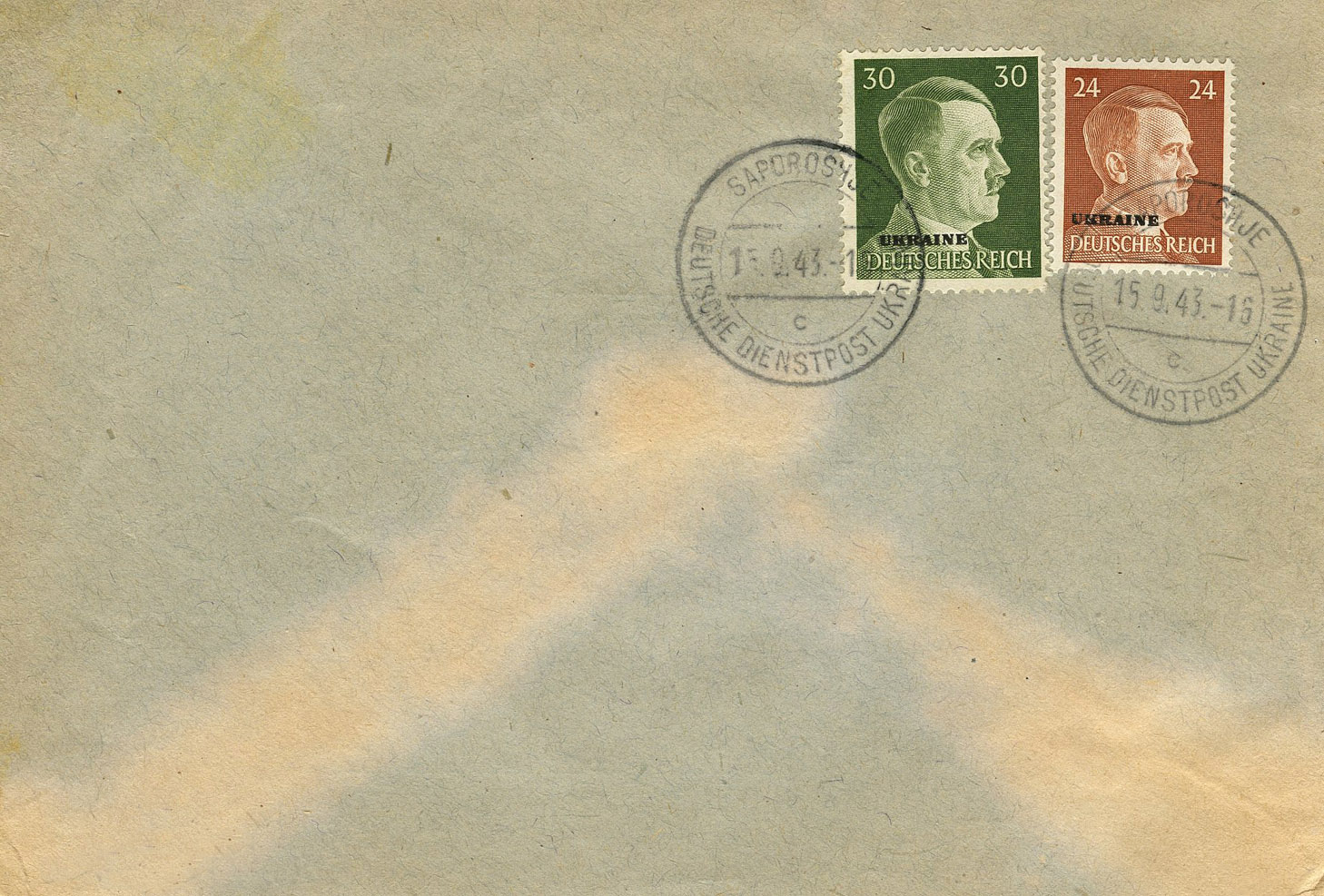
[Above: Like those above, another unaddressed envelope from Saporoshje (Zaporizhzhia), from September 15, 1943.]
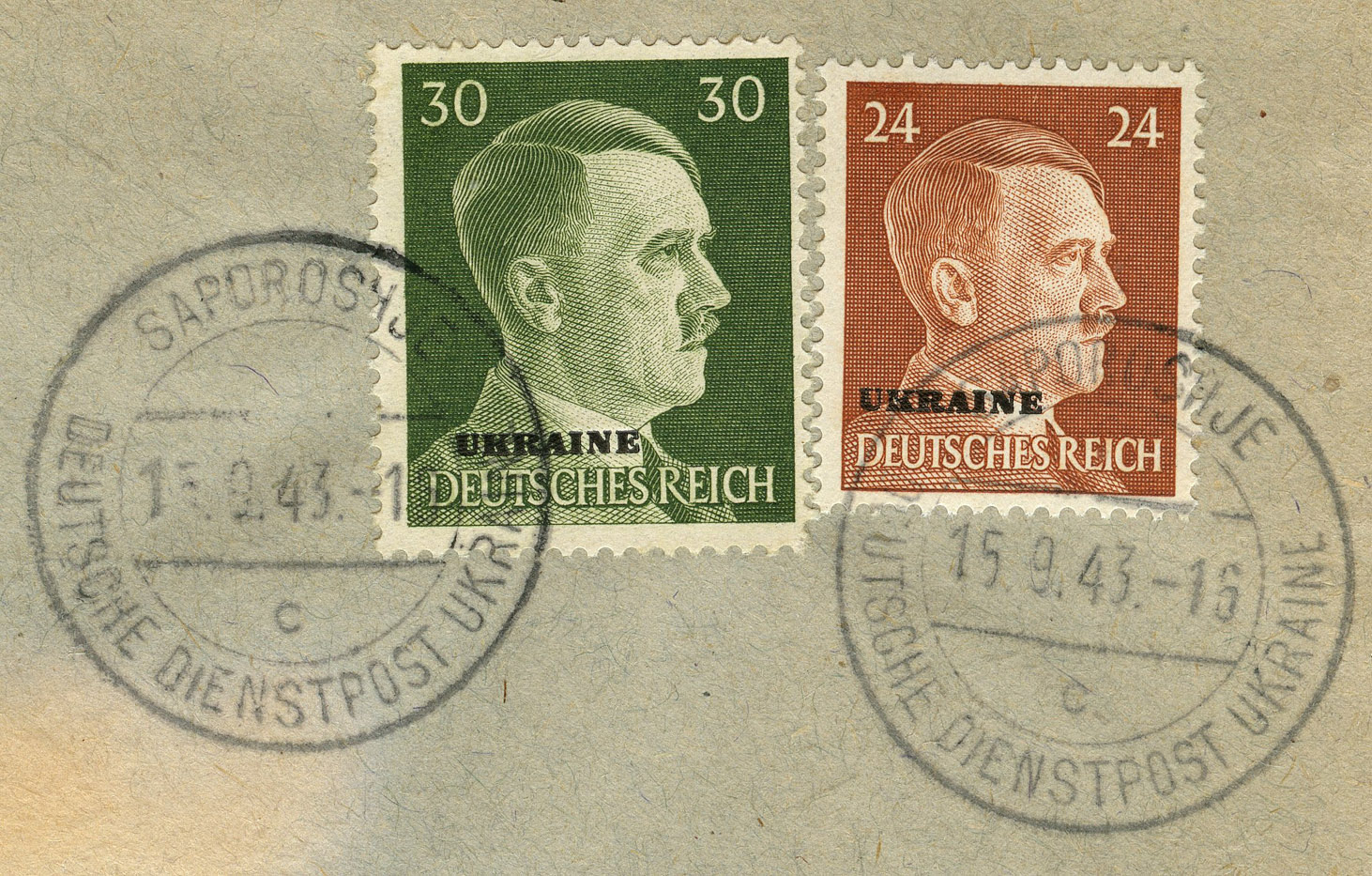
[Above: Stamps/cancels close-up.]
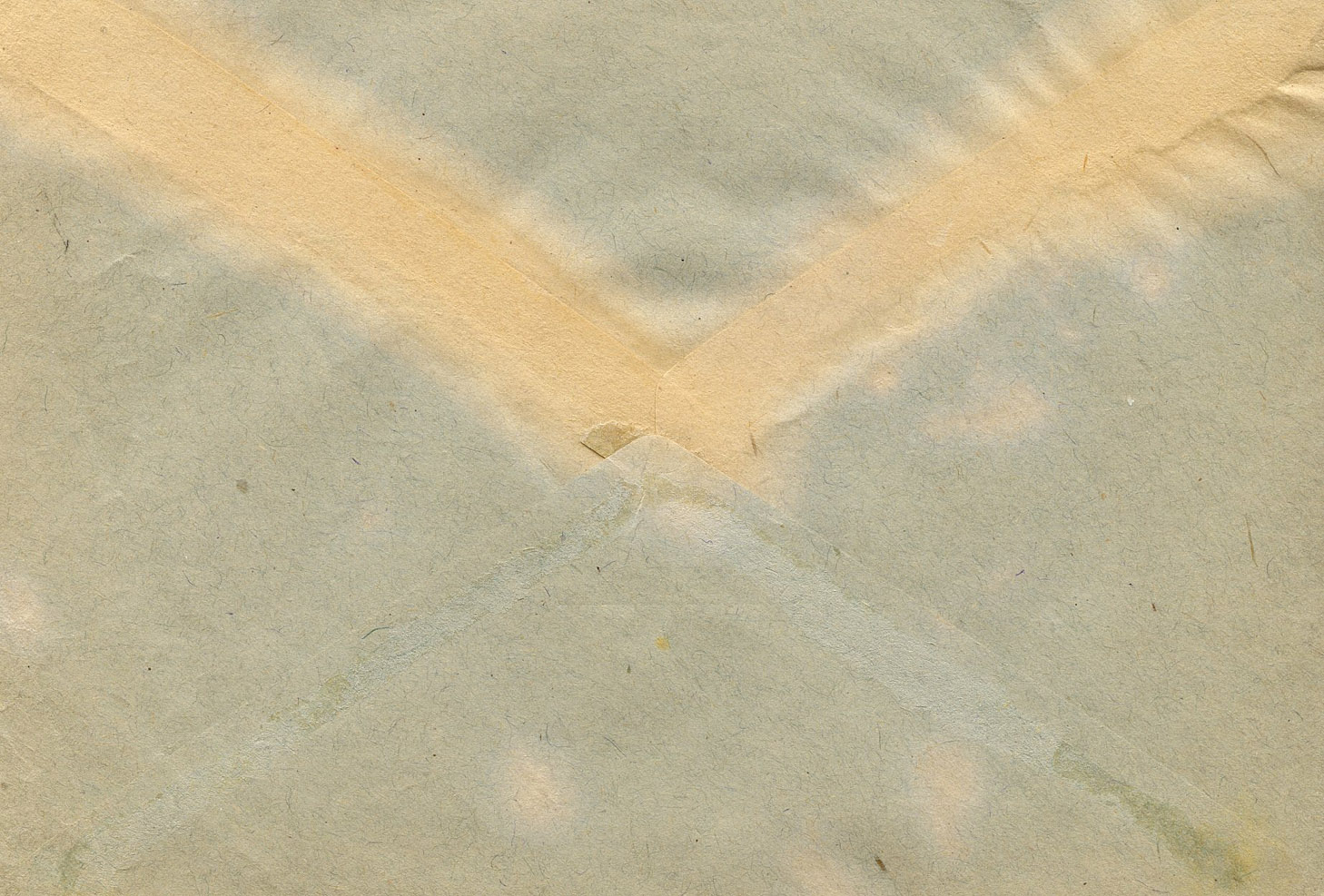
[Above: Envelope reverse. You can see that it has been glued together.]
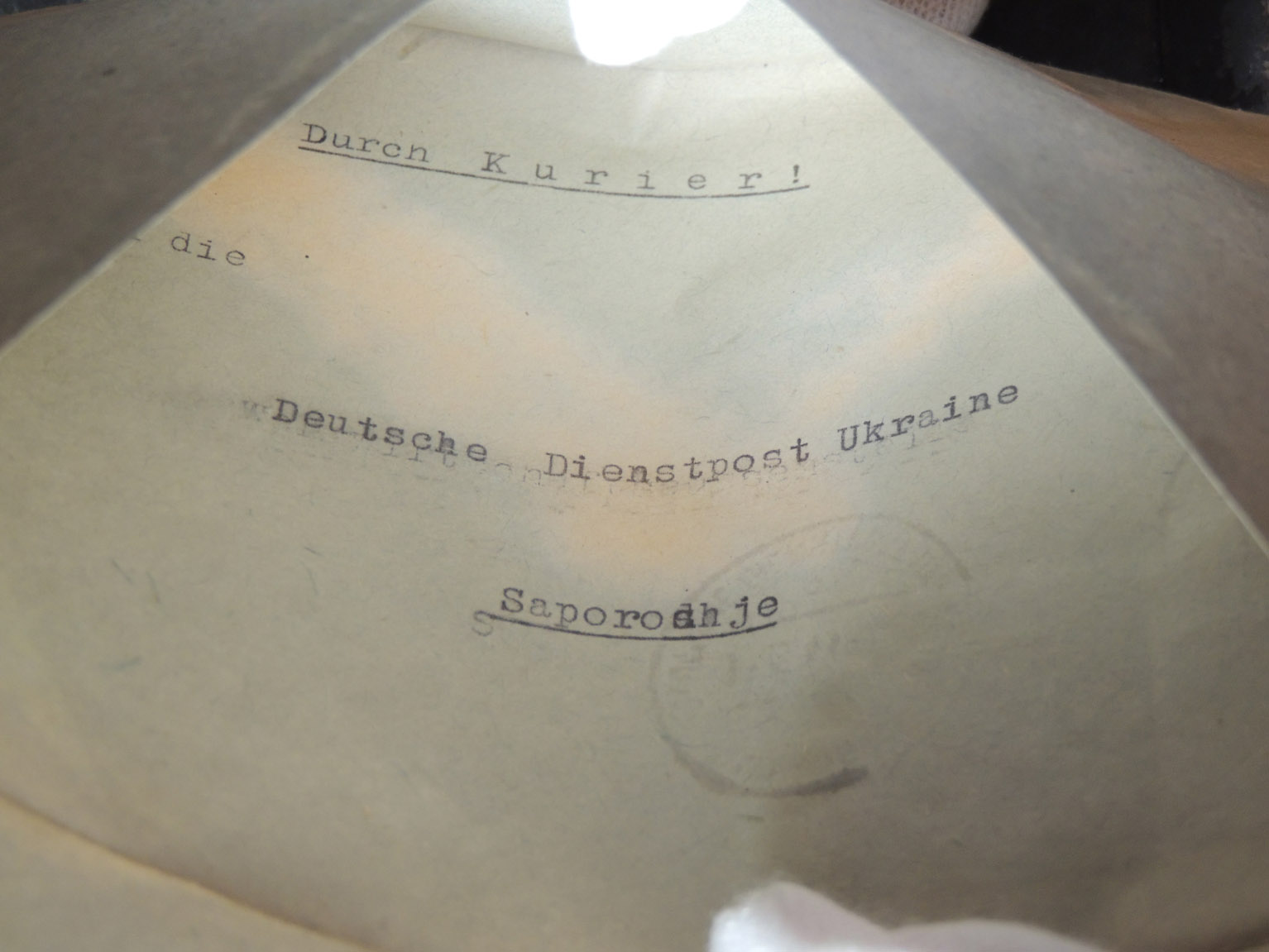
[Above: A look inside. We can see that this was sent to Saporoshje and unlike those above, this one says 'Durch Kurier!' (Through courier!). I'm unsure why this was typed on this one and why it was necessary.]
_____________________________________________________________________________________
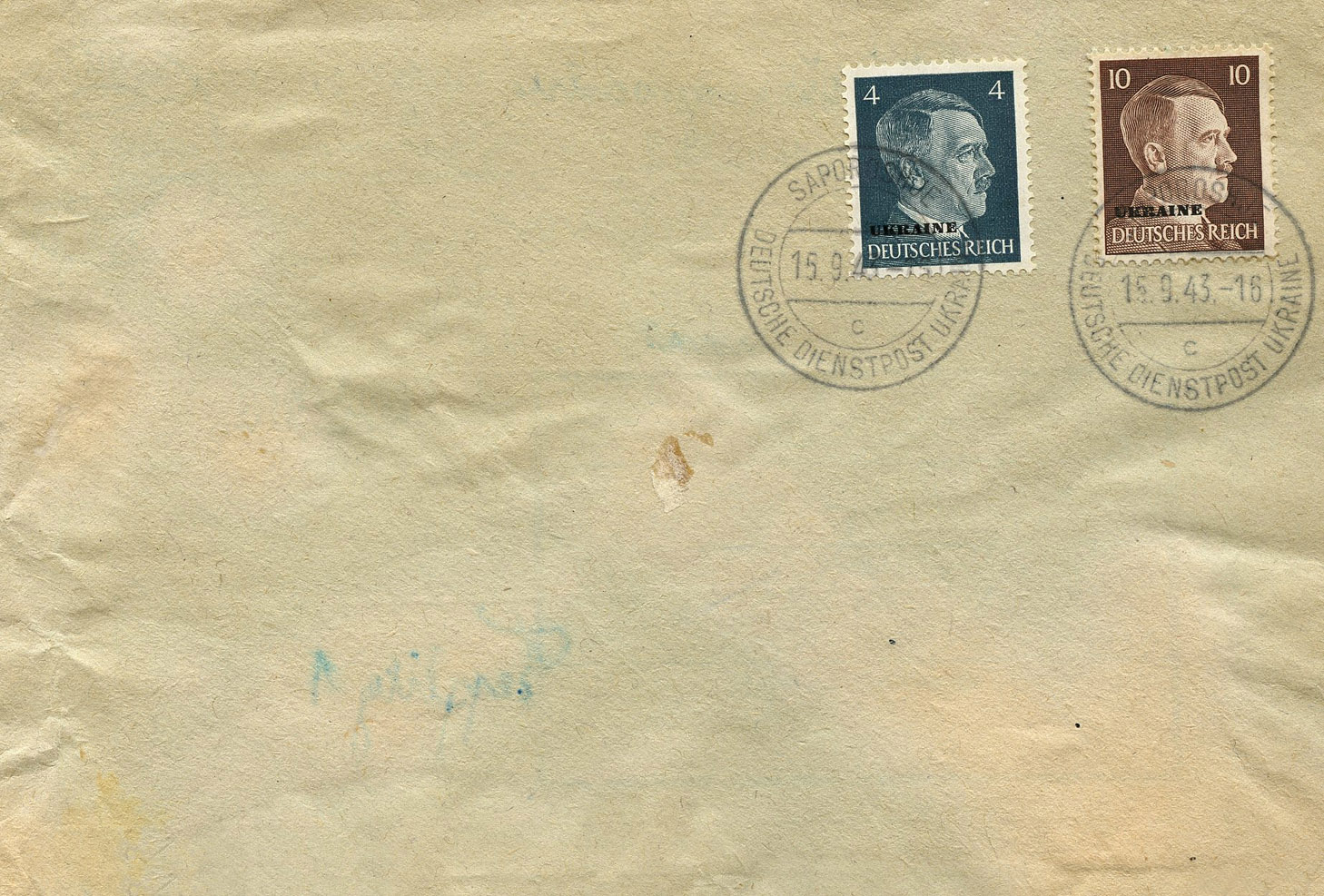
[Above: Like those above, another unaddressed envelope from Saporoshje (Zaporizhzhia), from September 15, 1943.]
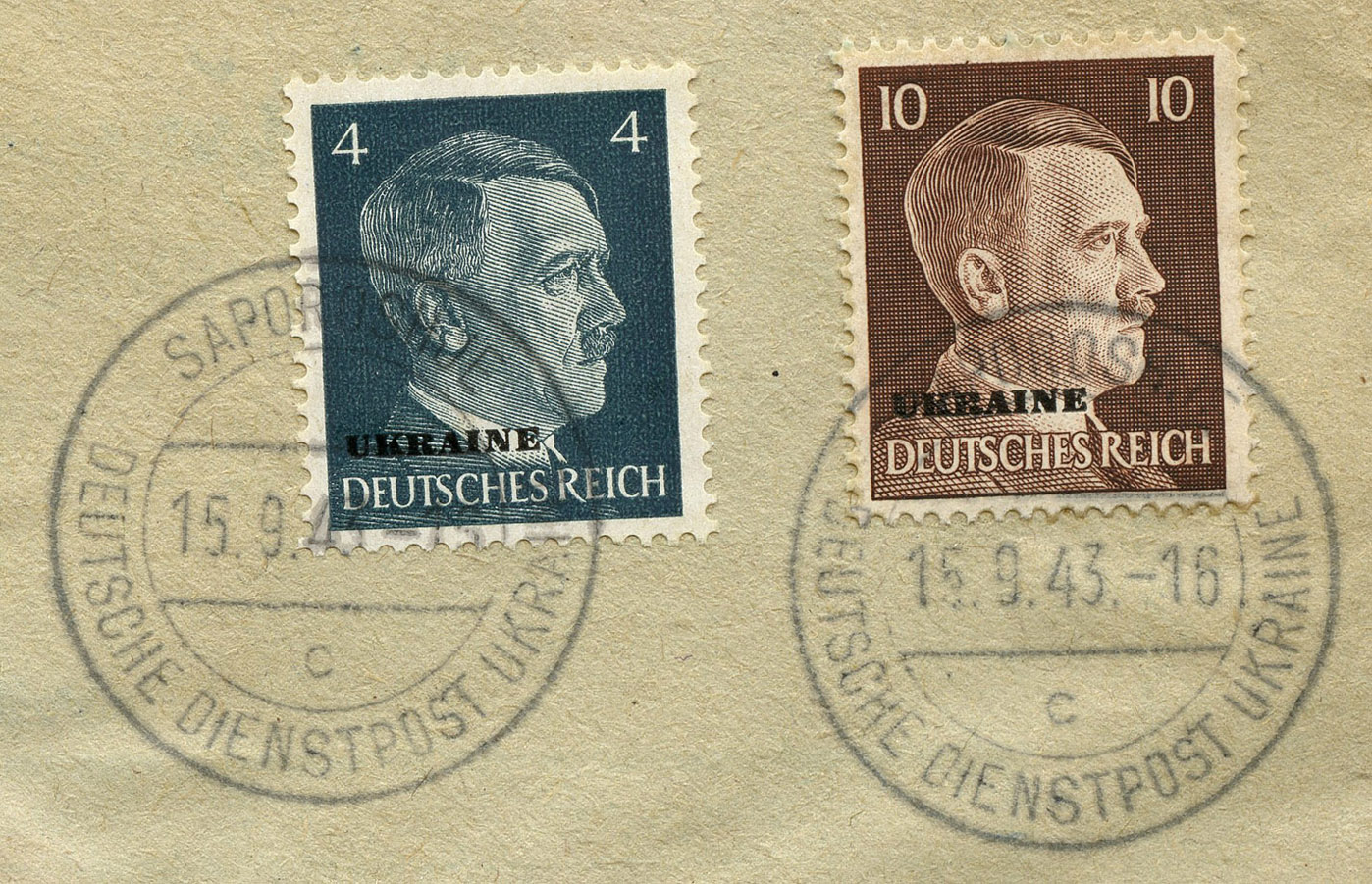
[Above: Stamps/cancels close-up.]
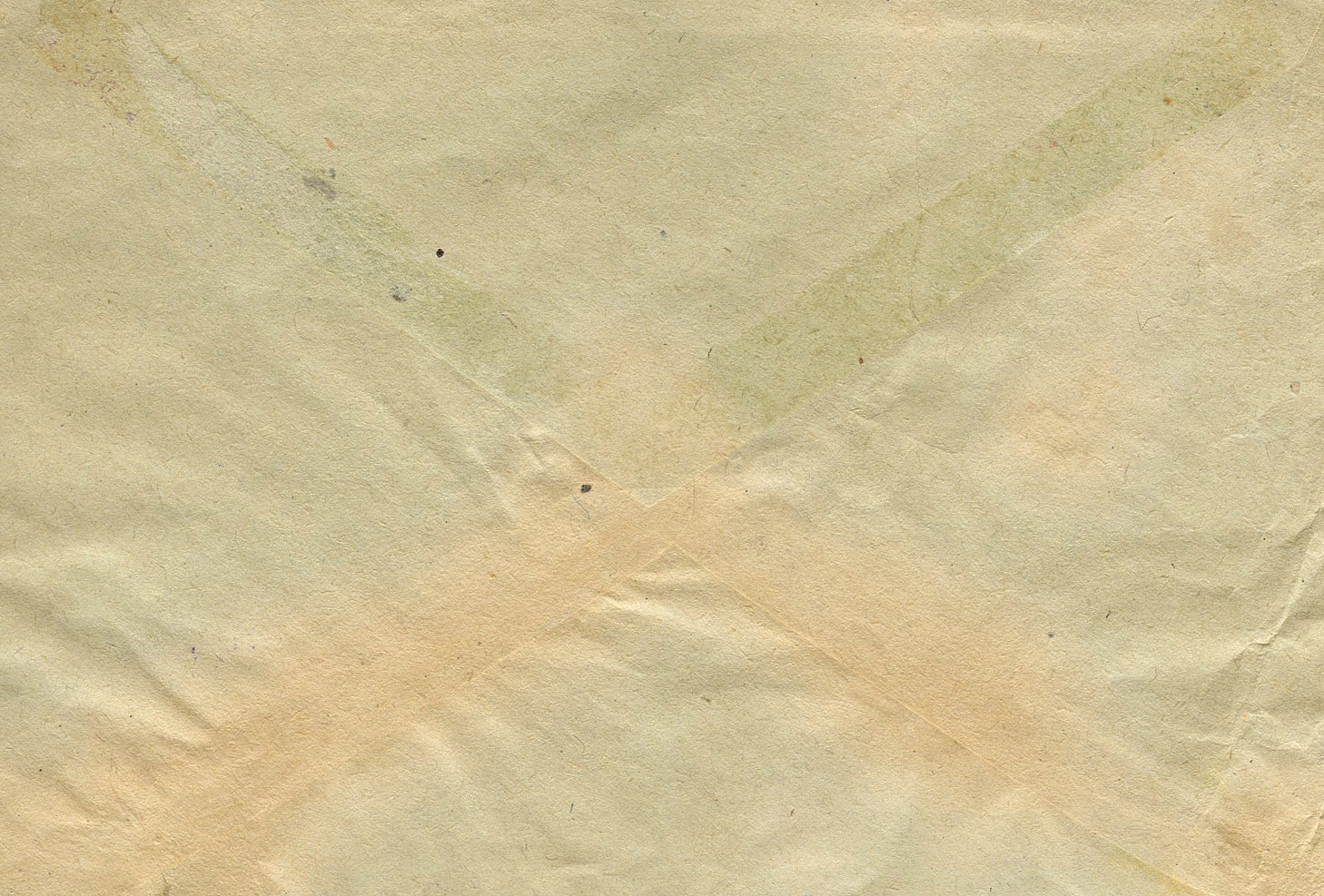
[Above: Envelope reverse. You can see that it has been glued together.]
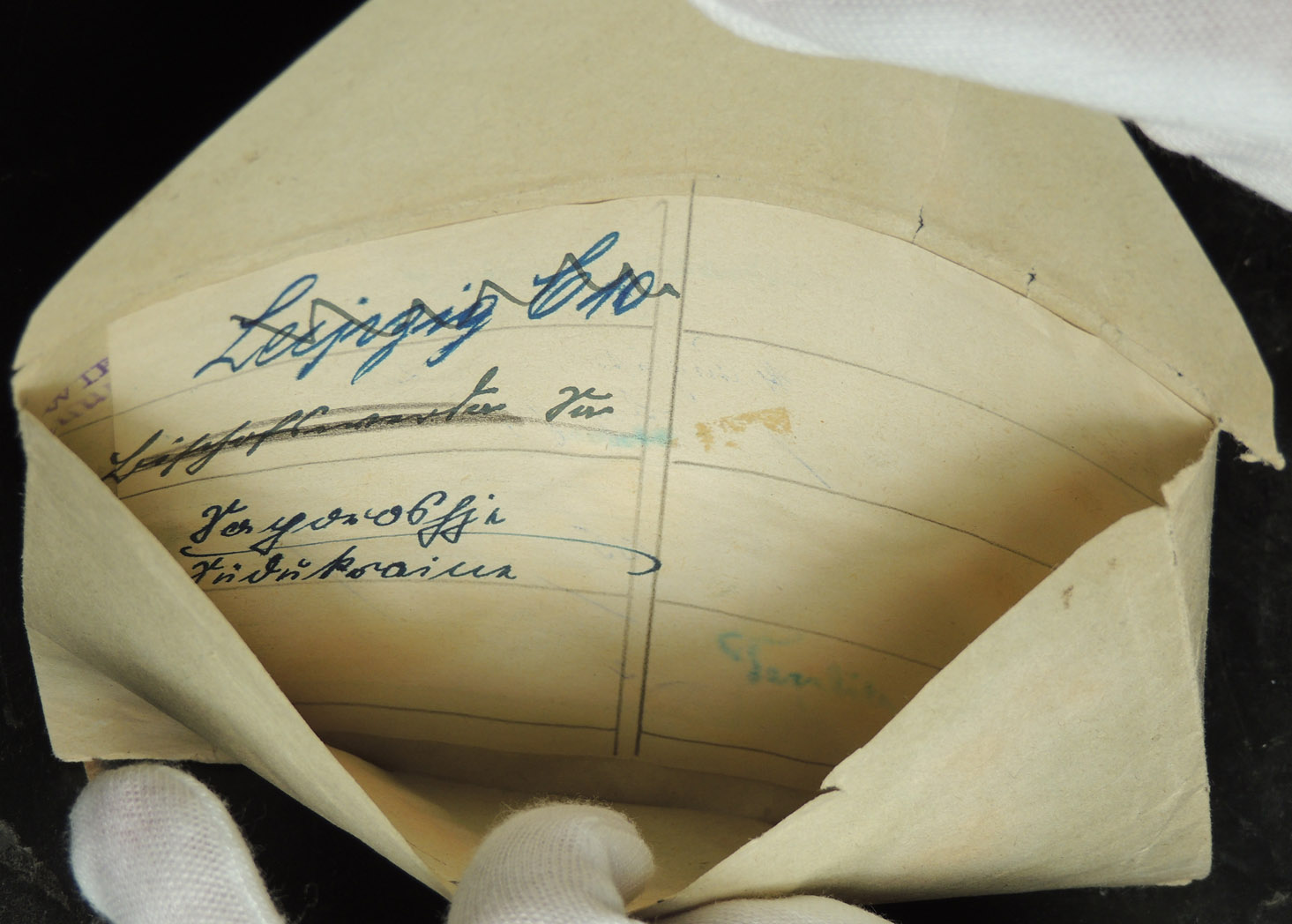
[Above: A look inside. Now here is an interesting one, it has been prepared to be used THREE times. They've reversed the envelope after it was used the regular way, used it again, then pasted a label over it and addressed it, but don't seem to have used it. I've never seen one used THREE times.]
_____________________________________________________________________________________
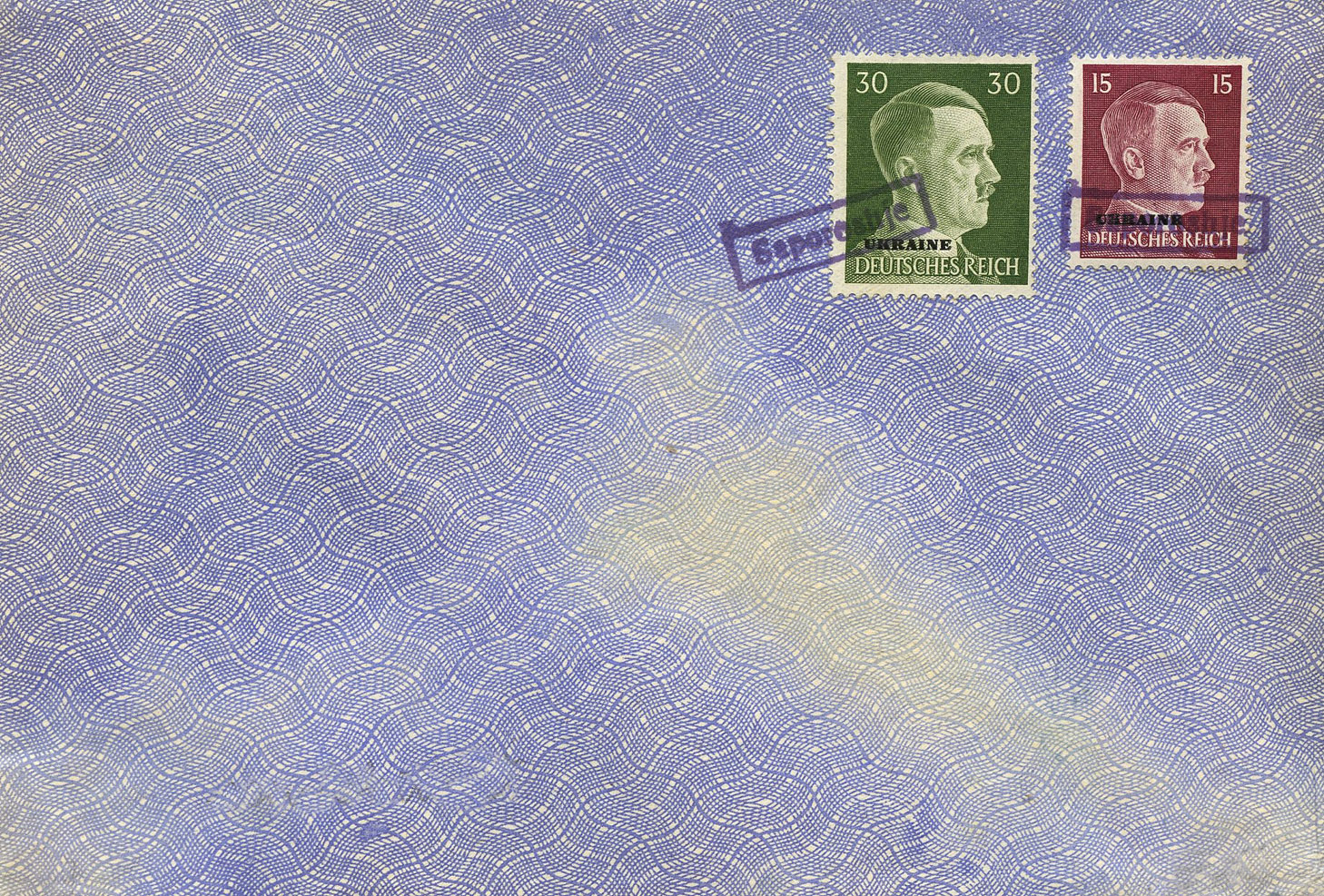
[Above: Another unaddressed envelope from Saporoshje except this one is interesting because it uses a security envelope and looks rather odd.]
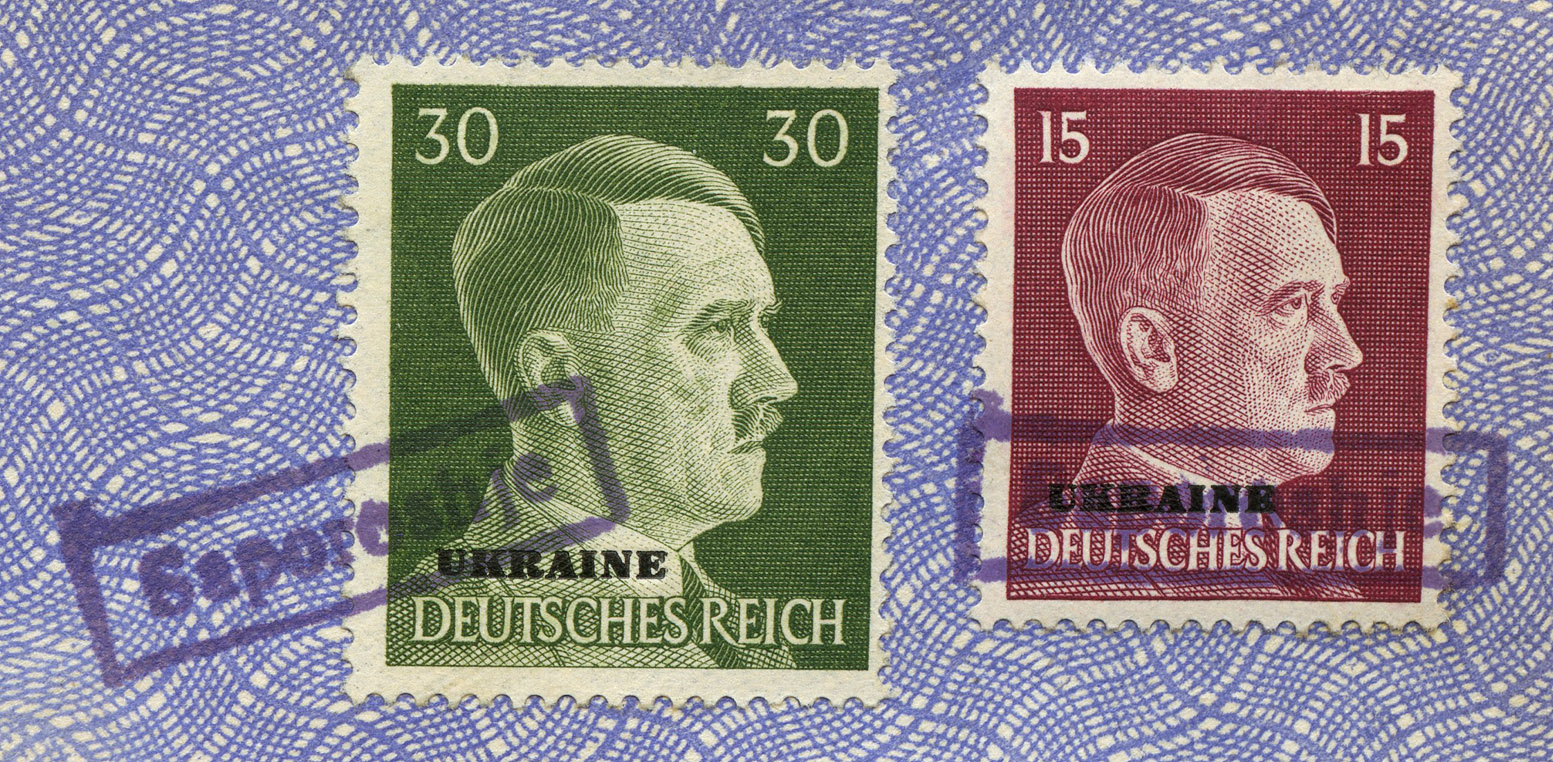
[Above: Stamps/cancels close-up.]
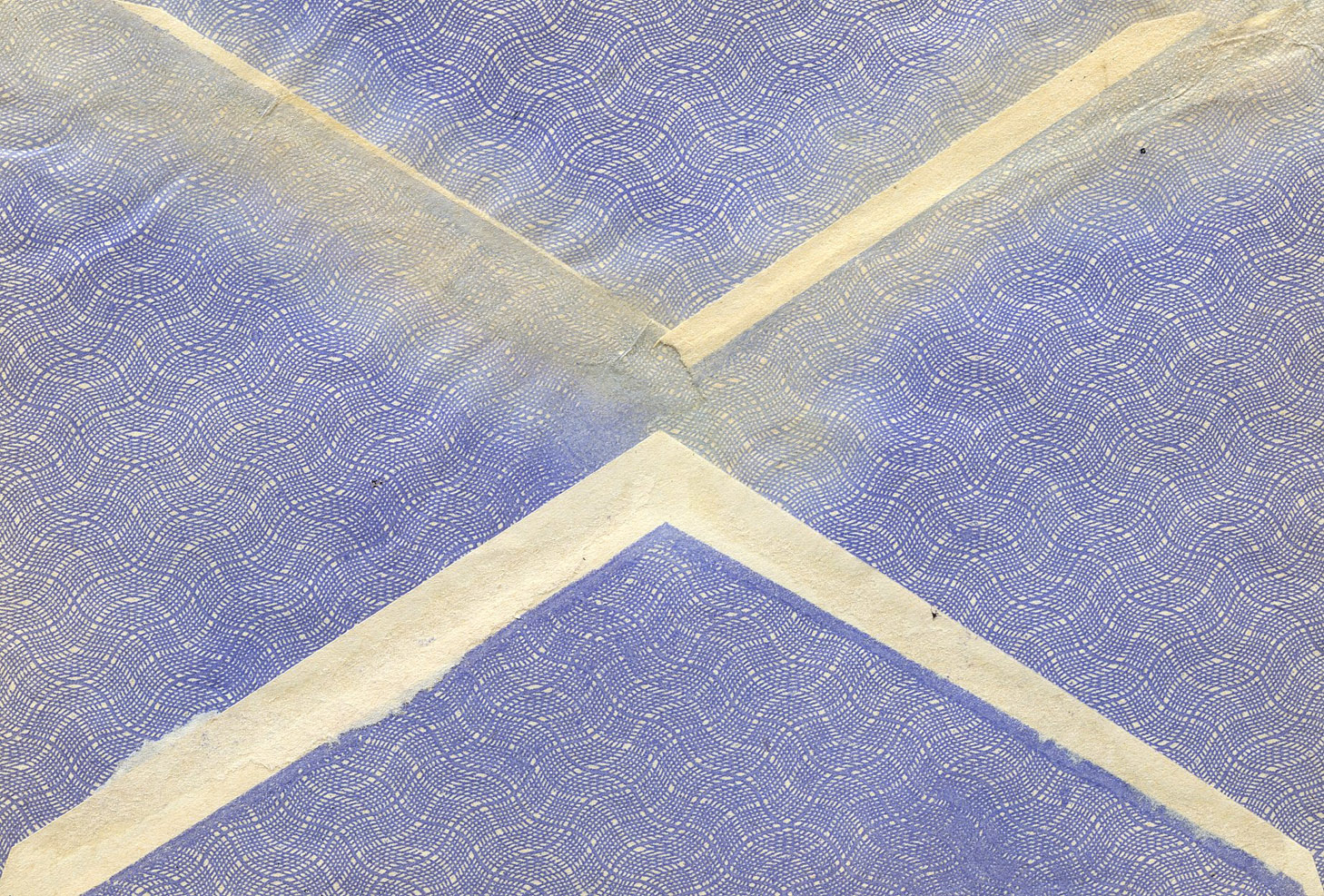
[Above: Envelope reverse. You can see that it has been glued together.]
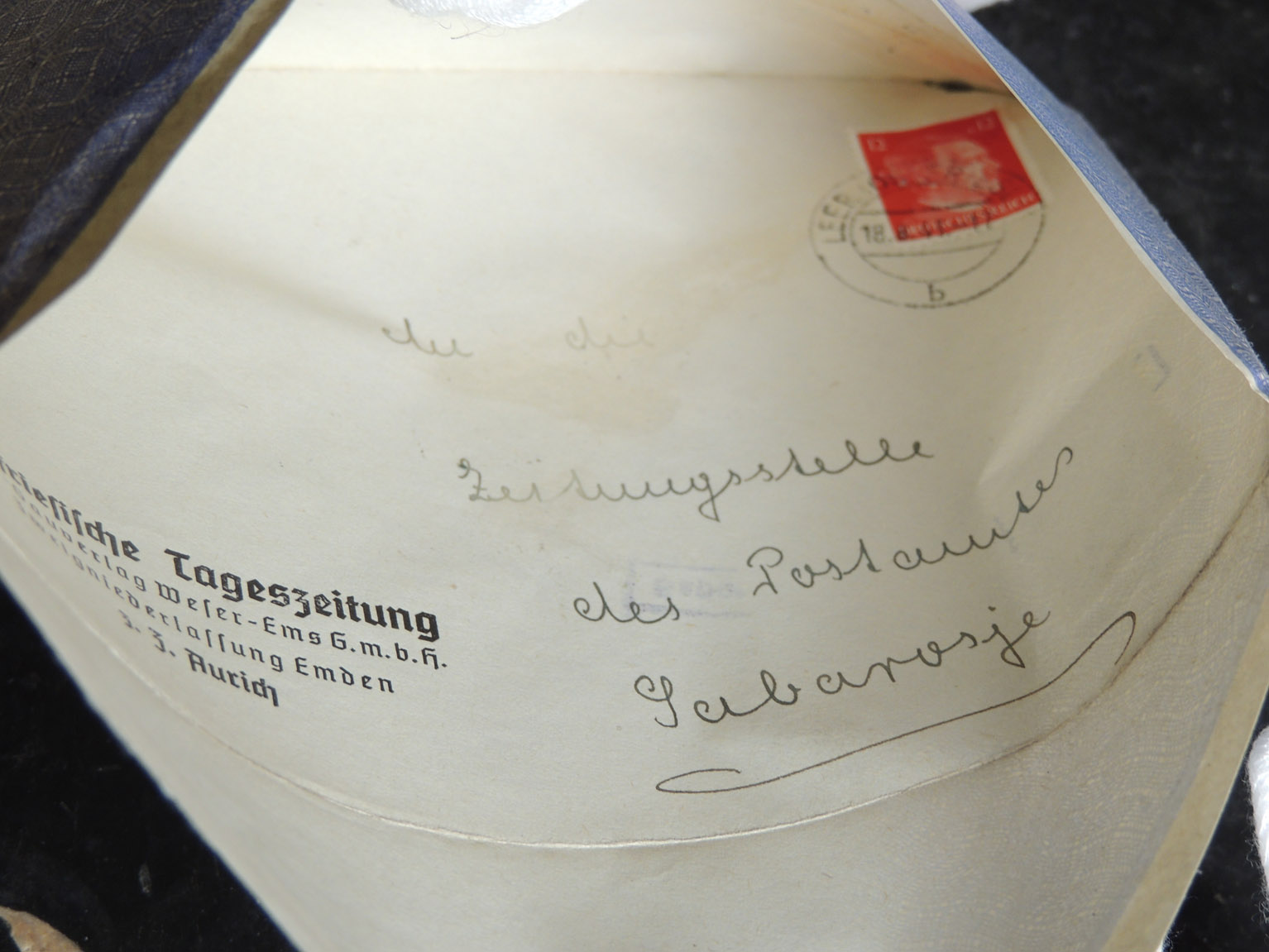
[Above: A look inside. We can see that this was sent to Saporoshje from a daily newspaper from Aurich (a town in Germany, in lower Saxony).]
_____________________________________________________________________________________
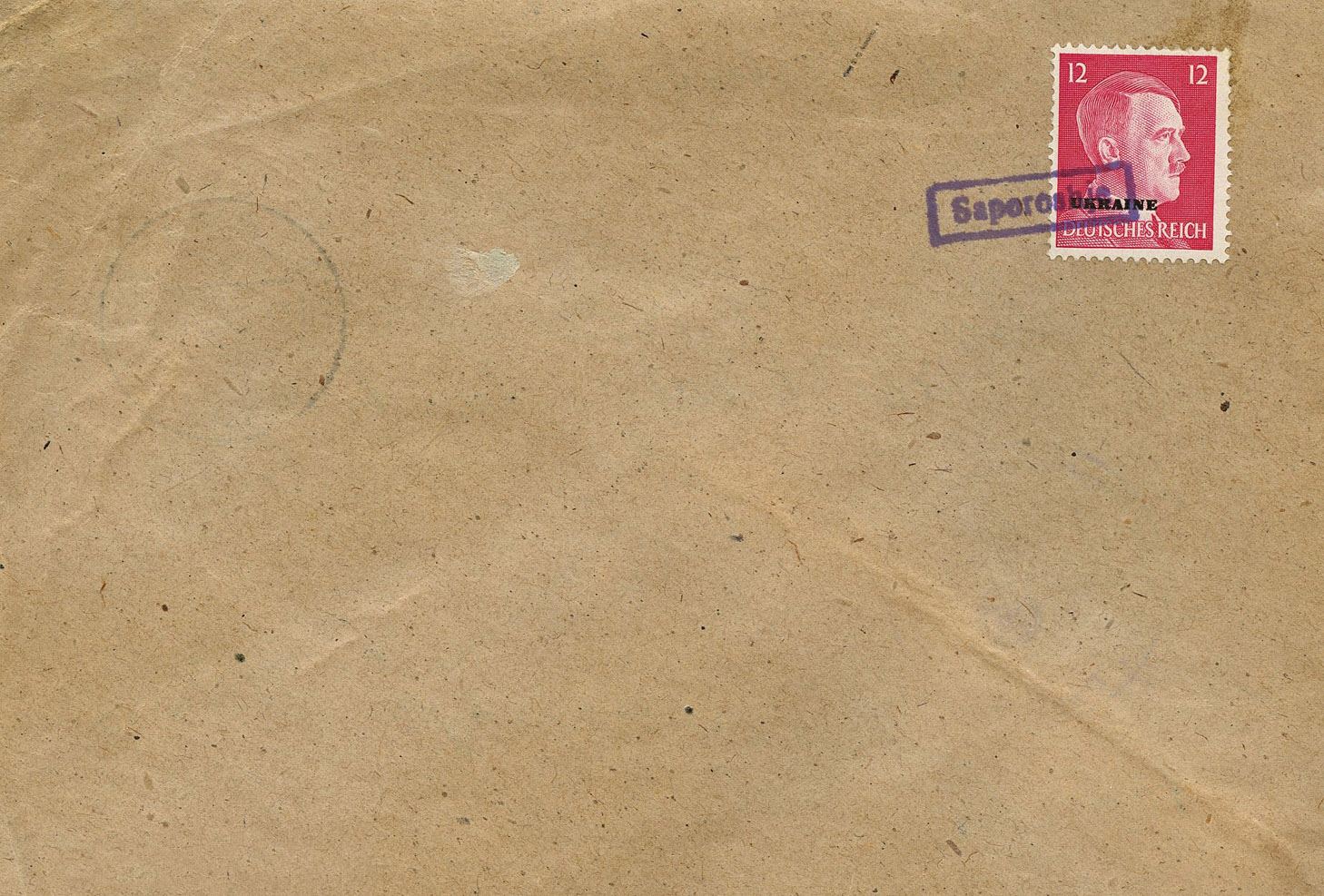
[Above: Another unaddressed envelope from Saporoshje.]
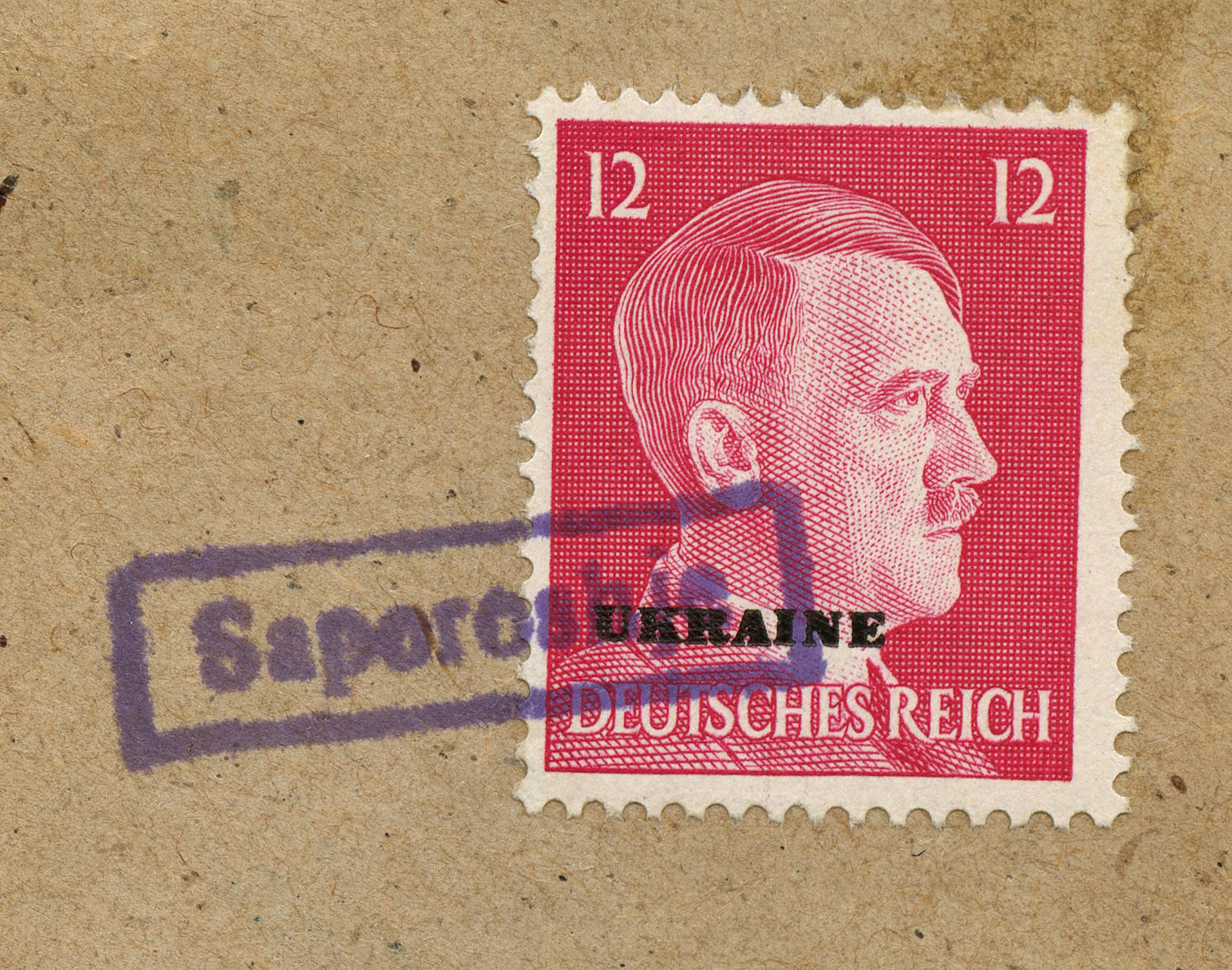
[Above: Stamps/cancel close-up.]
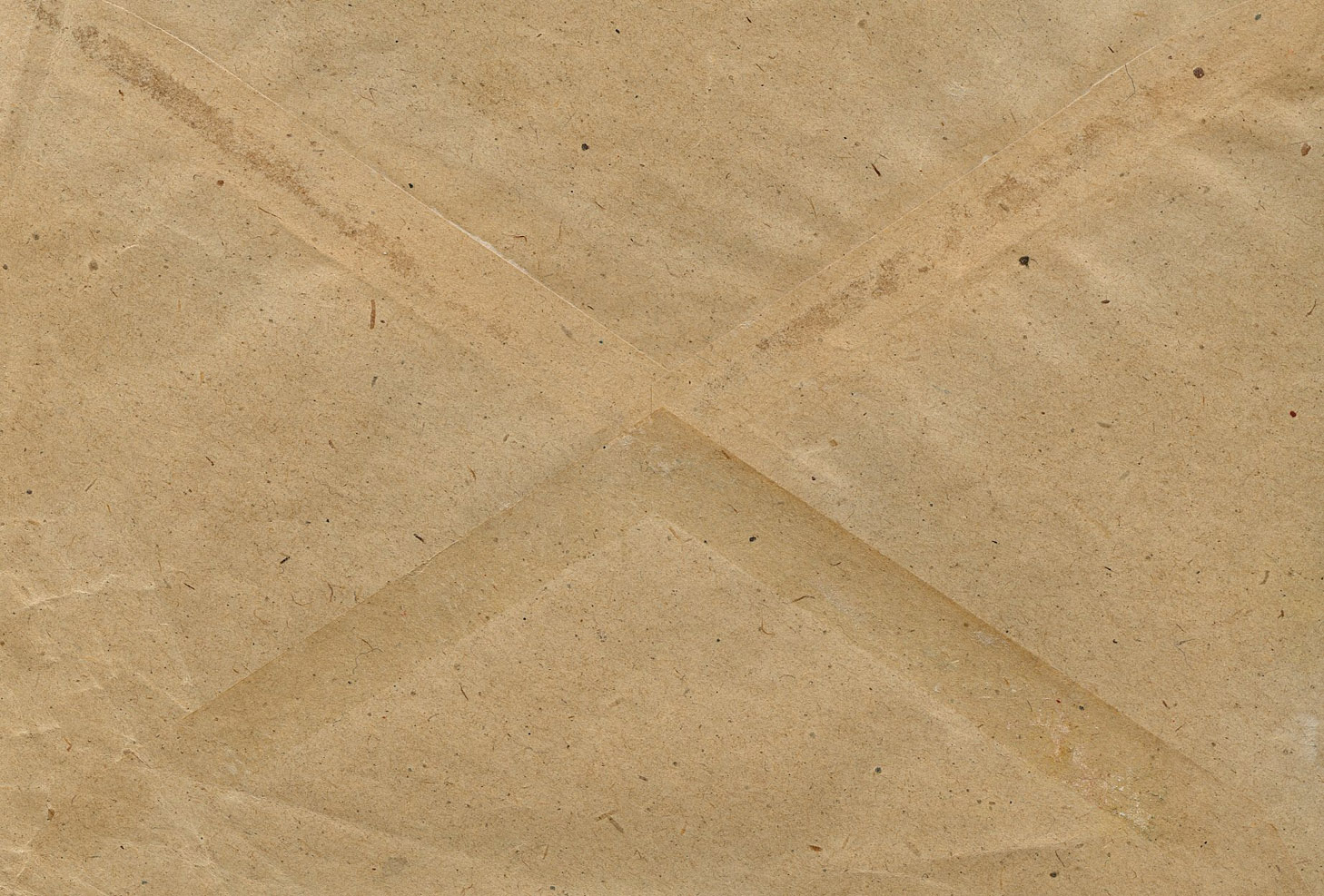
[Above: Envelope reverse. You can see that it has been glued together.]
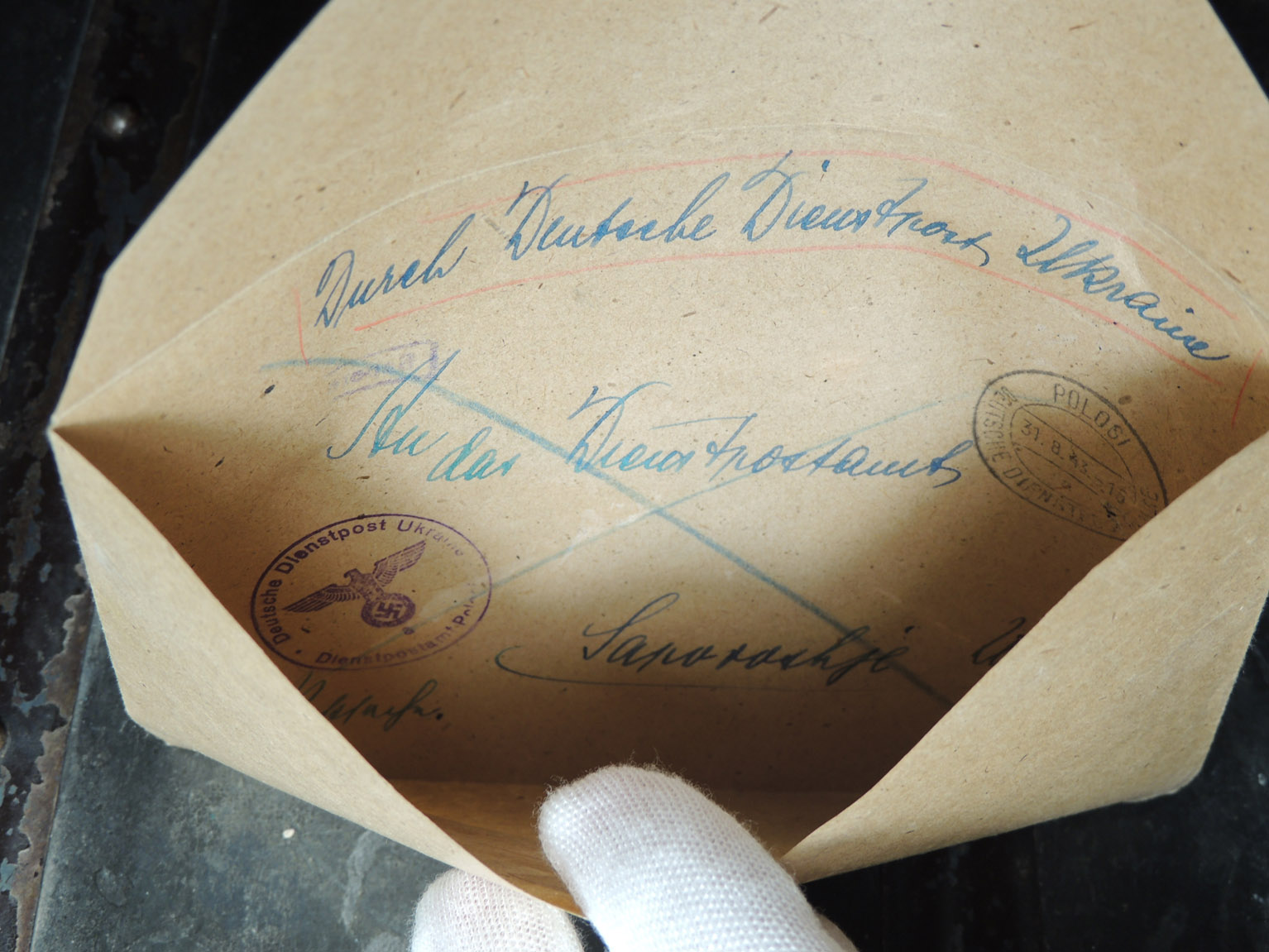
[Above: A look inside. We can see that this was sent to Saporoshje from Polosi (or 'Polohy', a city in the Ukraine with a significant railway junction).]
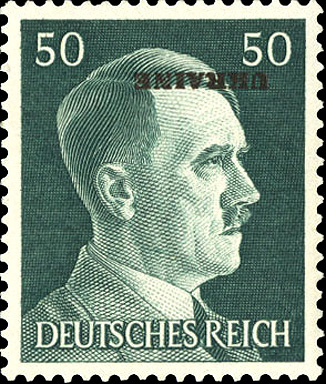
[Above: This is a very rare error of a common German stamp overprinted in 1941 for the Ukraine. Note that the 'UKRAINE' overprint is upside down!]
_____________________________________________________________________________________

[Above: Another rare error, this time a paper fold printing error. Front/back.]
_____________________________________________________________________________________
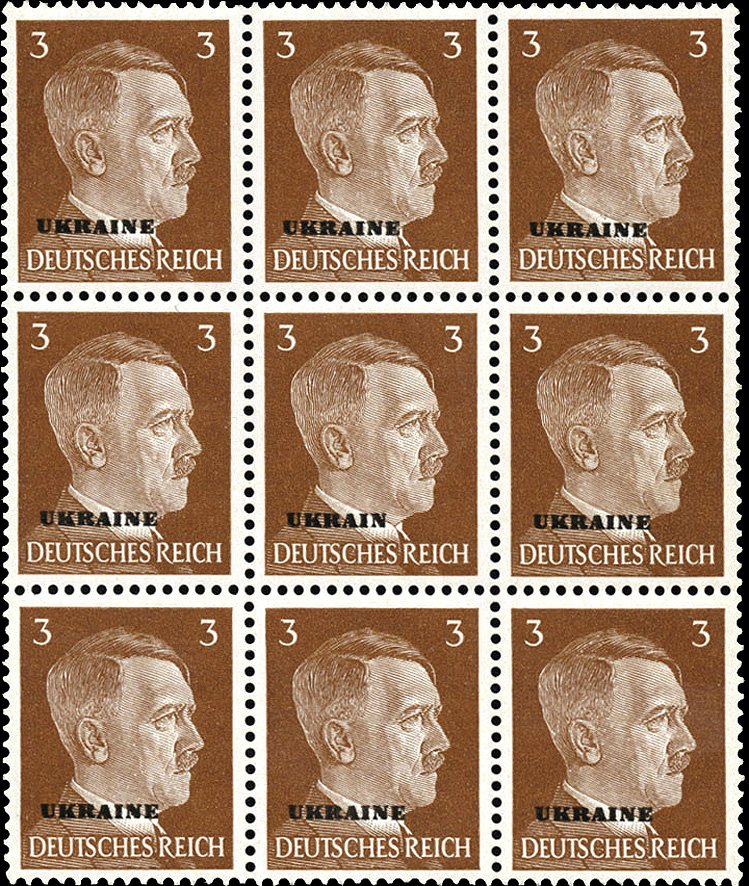
[Above: And yet another rare error, take a look at the stamp in the middle -- it's missing the 'E' ending the word UKRAINE. Front/back.]
_____________________________________________________________________________________
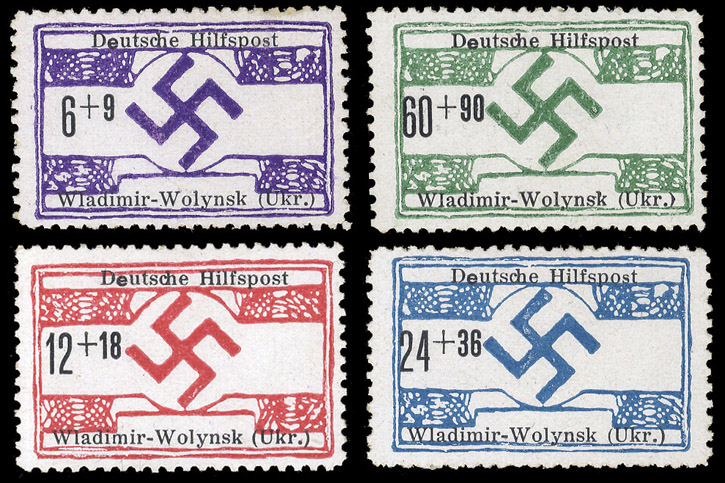
[Above: These very rare stamps are from the German administration of Northern Ukraine.
They are from April 1944 and each has regional prints on the bottom.
These stamps in particular are of 'Wladimir-Wolynsk'.]
_____________________________________________________________________________________

[Above: Block of six 60+90 'Wladimir-Wolynsk' stamps. Full sheets contained 15 stamps.]
_____________________________________________________________________________________
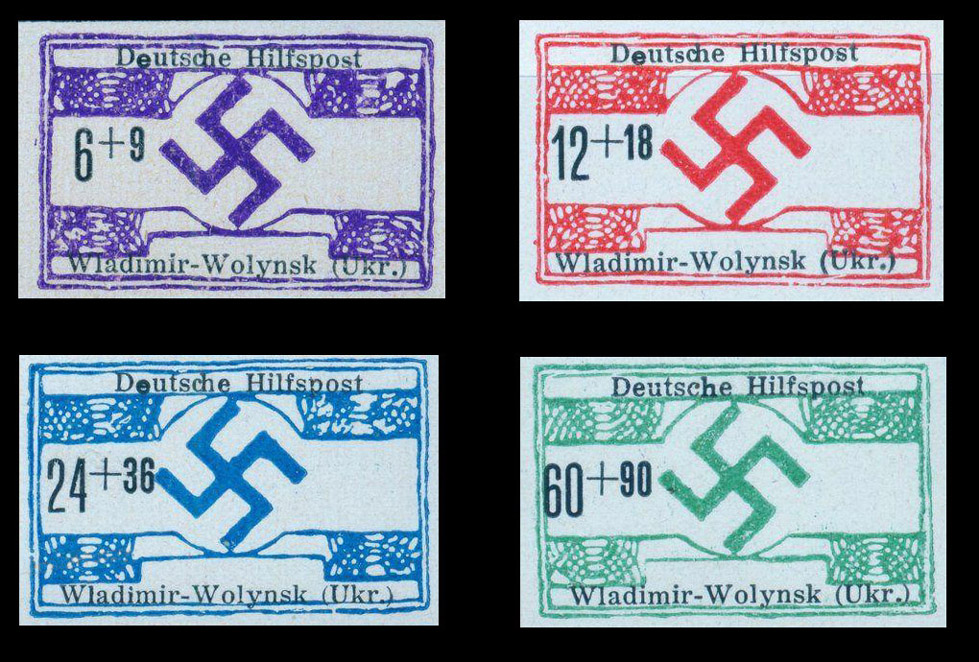
[Above: 'Wladimir-Wolynsk' imperforate versions of the stamps above.]
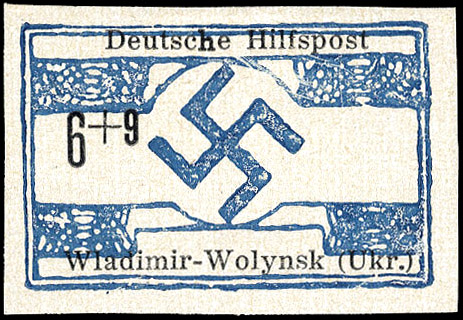
[Above: 'Wladimir-Wolynsk' imperforate proof - blue instead of the normal violet. Only 30 of these were made!]
_____________________________________________________________________________________
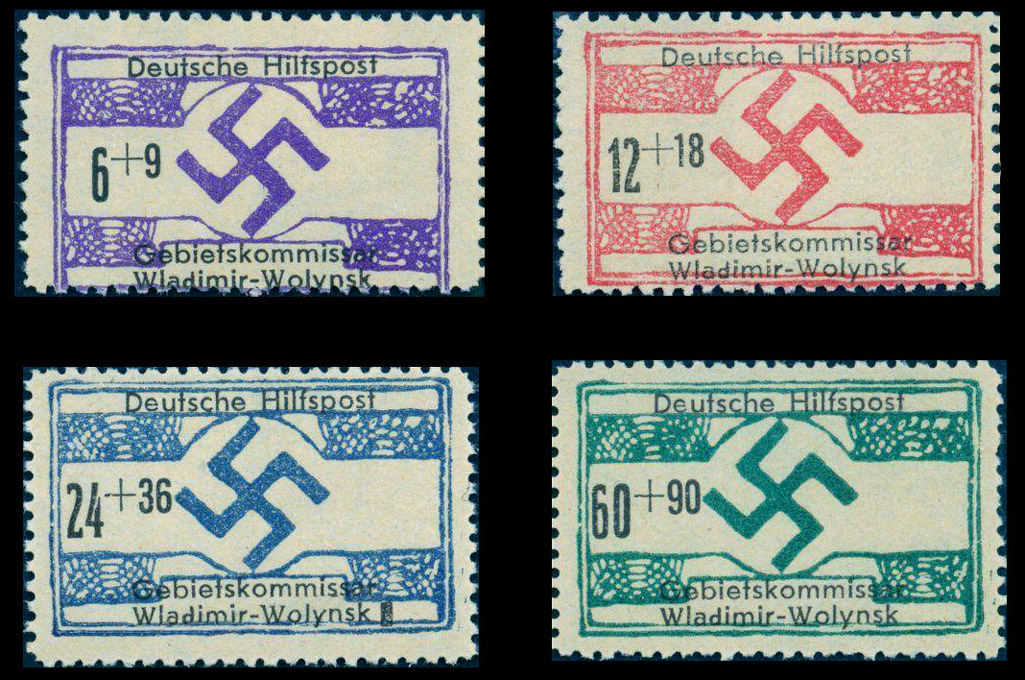
[Above: 'Gebietskommissar Wladimir-Wolynsk' versions of the stamps above.]
_____________________________________________________________________________________
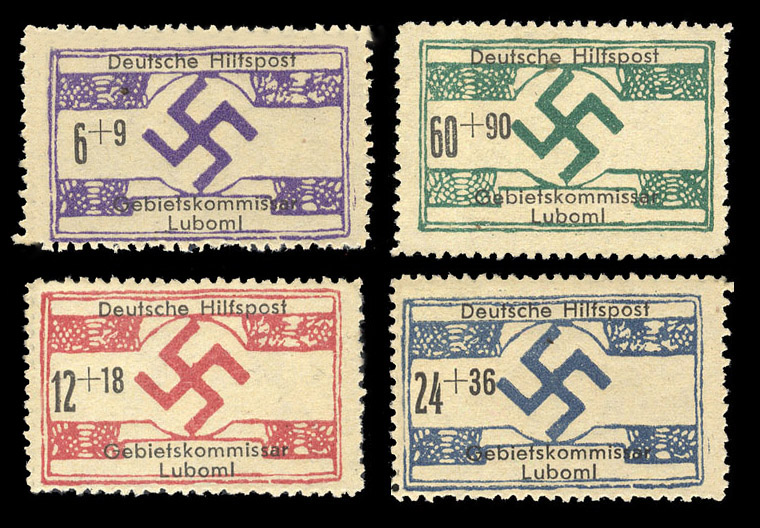
[Above: Like those stamps above, except these are from 'Luboml'.]
_____________________________________________________________________________________
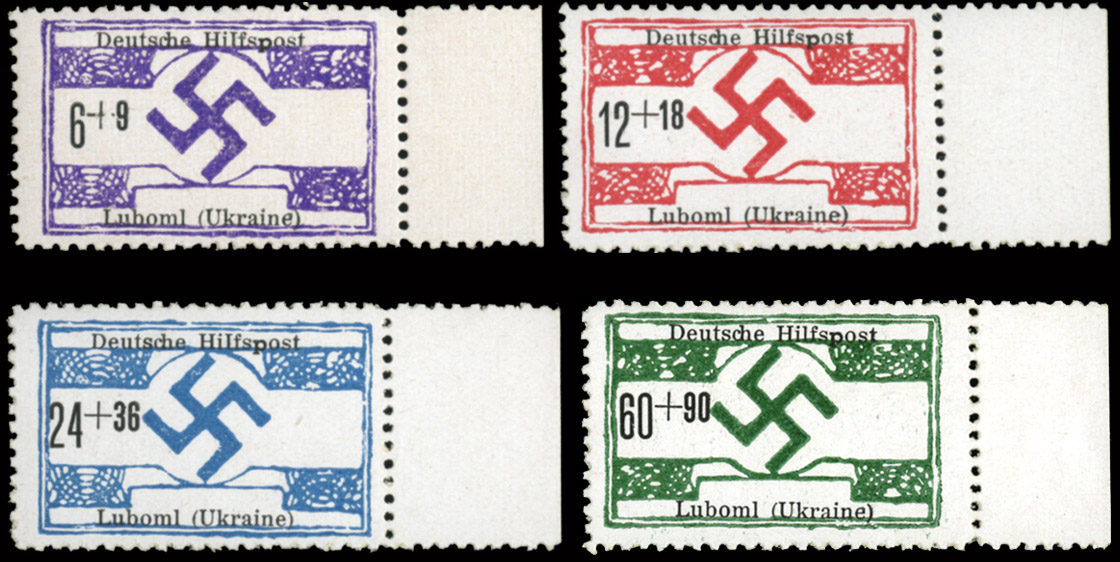
[Above: Like those stamps above, but on lighter paper and with sheet tabs.]
_____________________________________________________________________________________
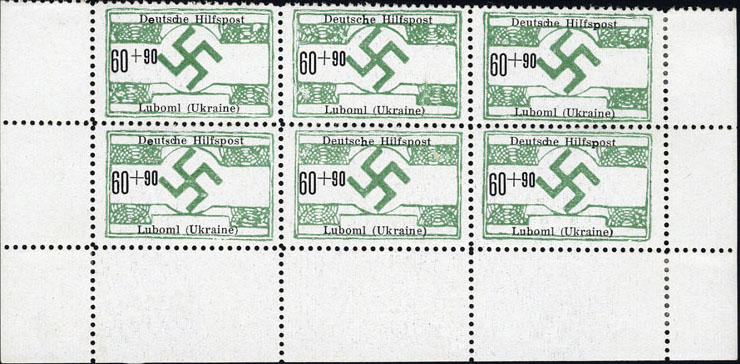
[Above: Block of six 60+90 'Luboml' stamps.]
_____________________________________________________________________________________
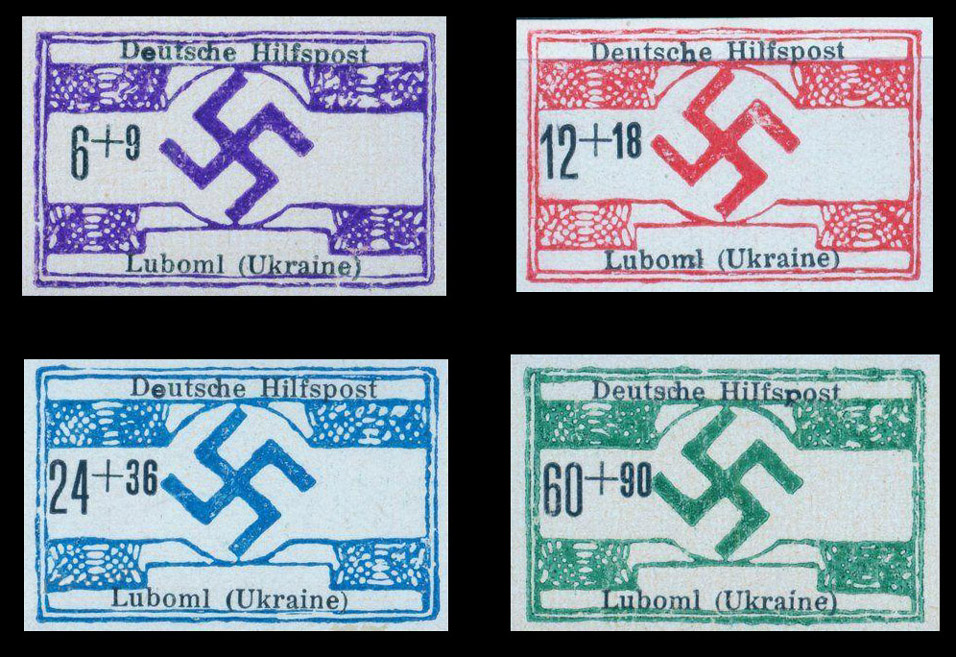
[Above: 'Luboml' imperforate versions of the stamps above.]
_____________________________________________________________________________________
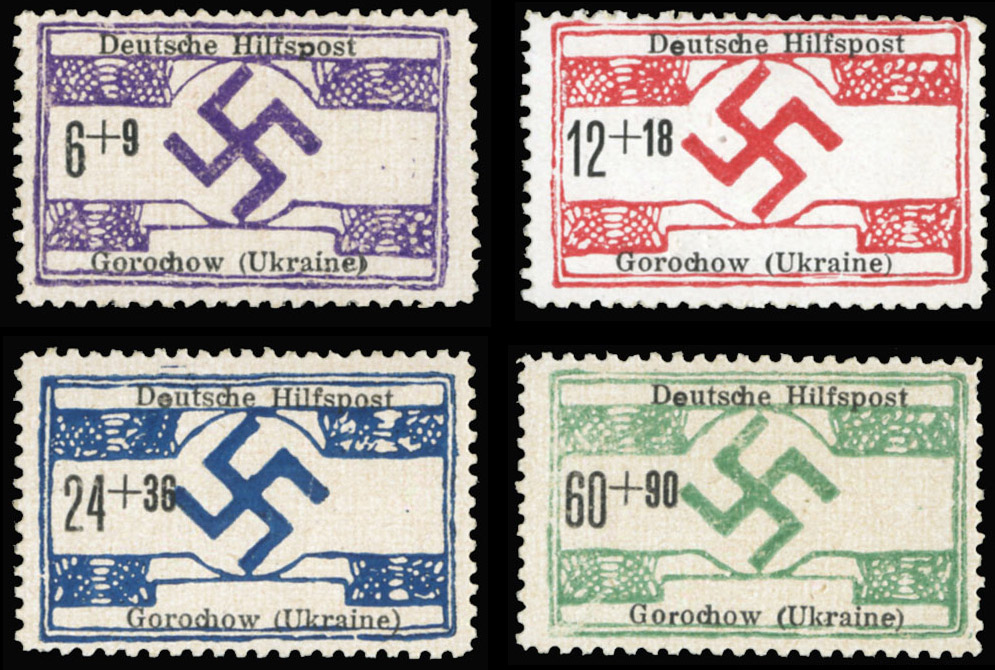
[Above: Like those stamps above, except these are from 'Gorochow'.]
_____________________________________________________________________________________
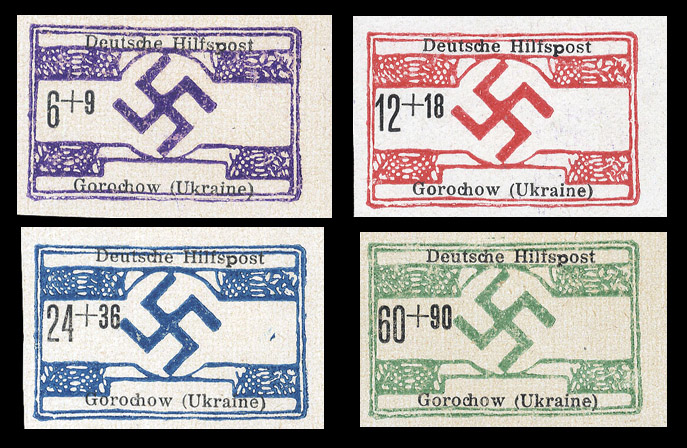
[Above: Imperforate versions of the 'Gorochow' stamps.]
_____________________________________________________________________________________
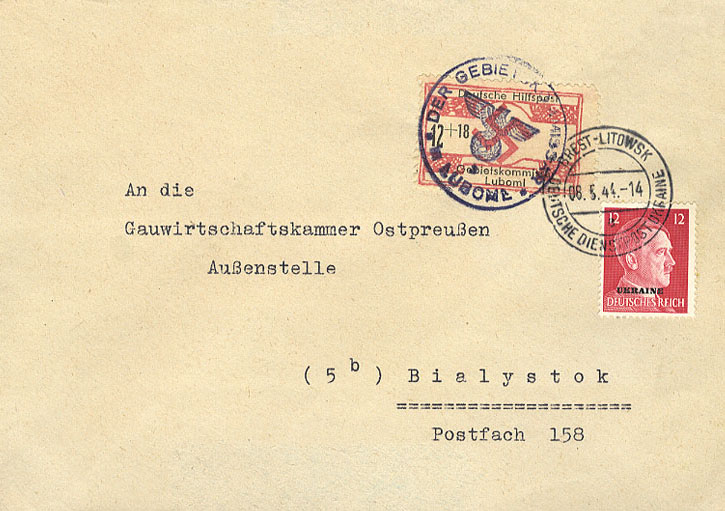
[Above: 12+18 'Luboml' stamp used on an envelope from May 1944.]
_____________________________________________________________________________________

[Above: This cover, which is expertized on the reverse to prove its authenticity, is from Wladimir-Wolynsk. It bears four stamps which far exceed the postage rate because this was done by a stamp collector.]
_____________________________________________________________________________________
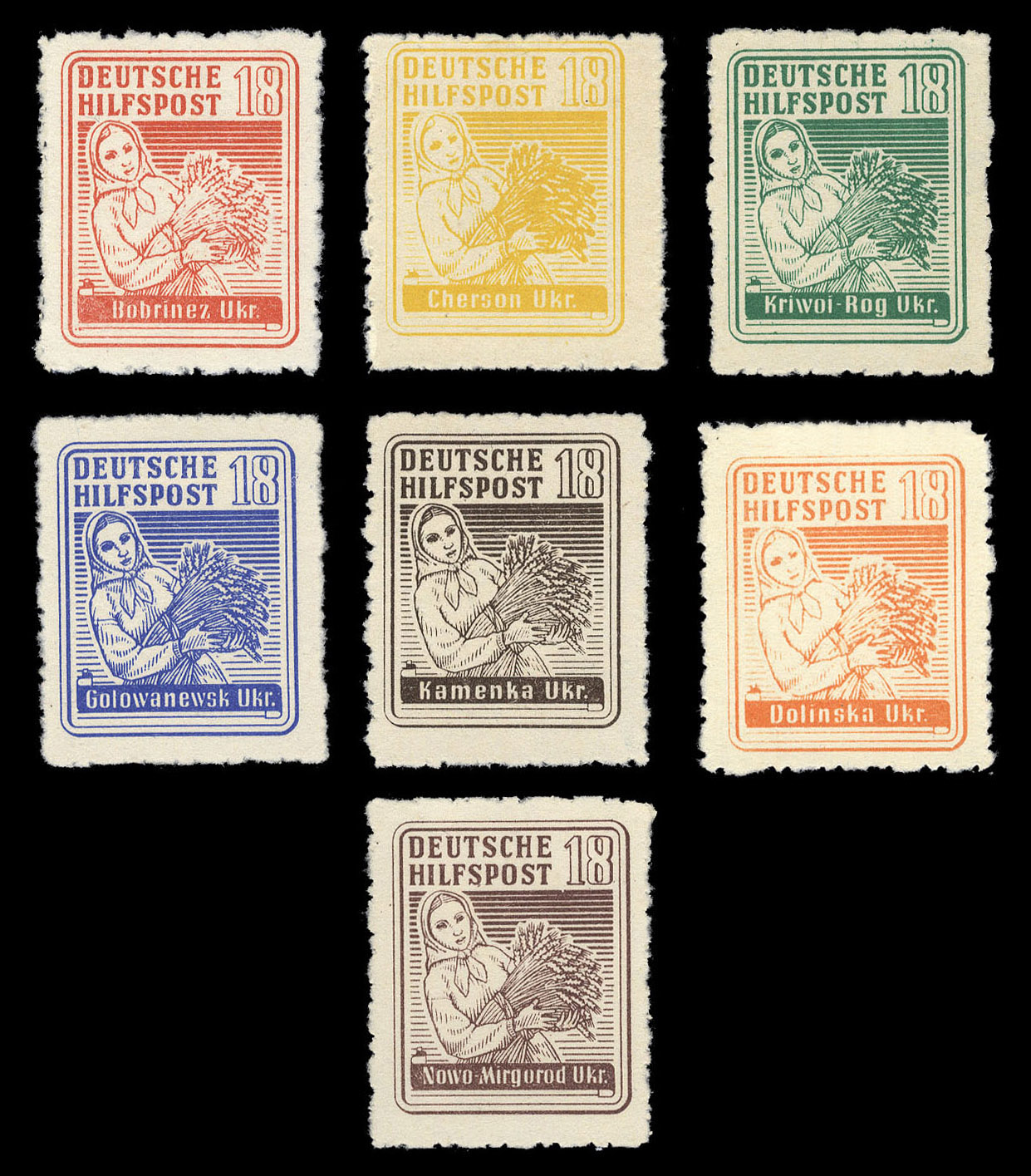
[Above: Southern Ukraine, February 3, 1944. These were temporary stamps of the Ukrainian Provisional Post. They were valid until March 26, 1944 and were issued without gum. They were issued after the withdrawal of the German Official Post, which occurred simultaneously with the retreat of the German Wehrmacht.]
_____________________________________________________________________________________
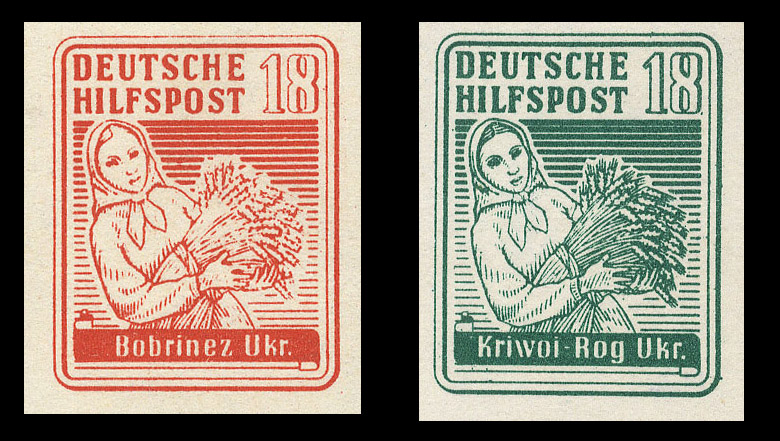
[Above: Very rare imperf versions.]
_____________________________________________________________________________________
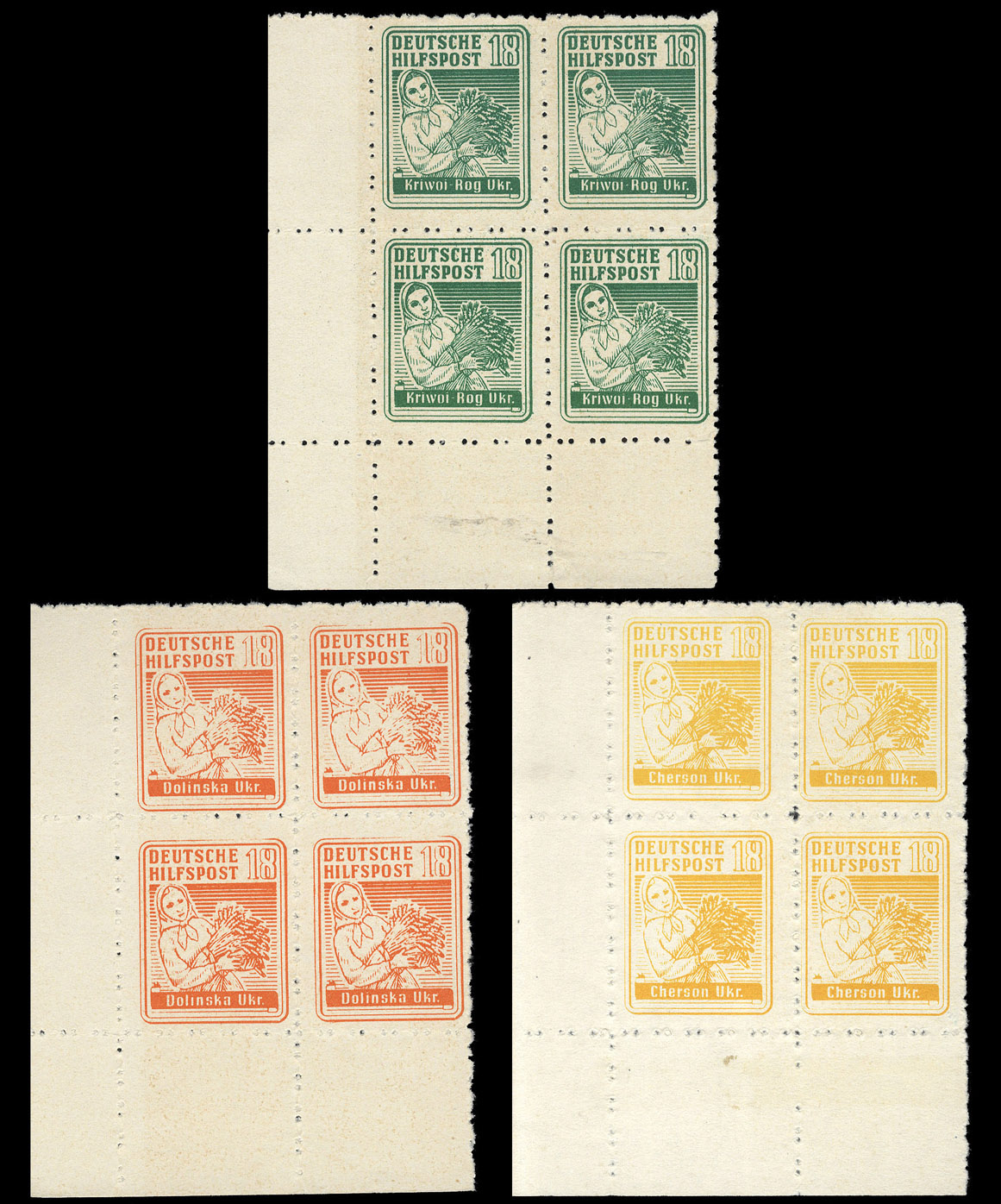
[Above: Blocks of four. Full sheets included 42 stamps.]
_____________________________________________________________________________________
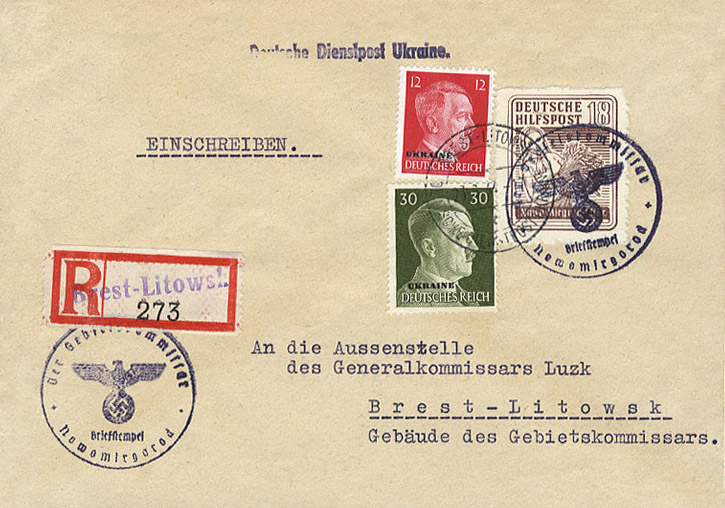
[Above: Envelope showing usage of a 'Nowo-Mirgorod' stamp.]
_____________________________________________________________________________________

[Above: 50k, 1.50k and 3k, complete set of three (1.50k type IV, remaining two stamps type II, each with dot next to 'kop' variety.]

[Above: 3k (black on gray, type II, only 70 printed in type II!This also is a dot next to 'kop' variety, but note that the dot is lower than those varieties above).]
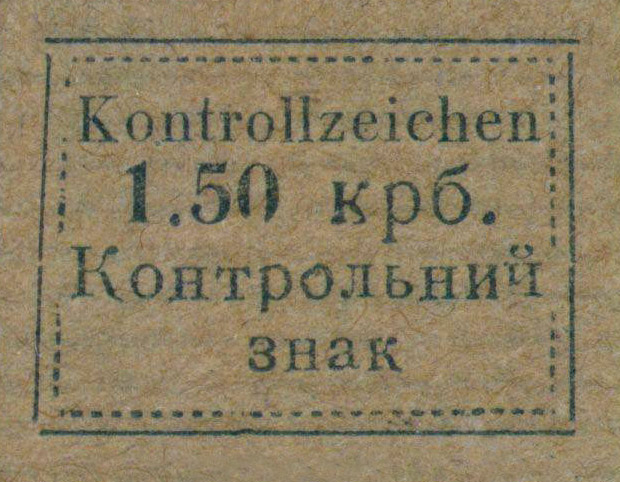
[Above: Imperforate version.]
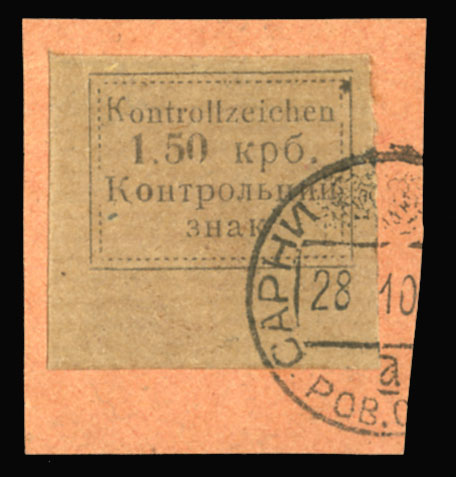
[Above: Imperforate version, used (brown, type II, only 300 issued!)]
_____________________________________________________________________________________
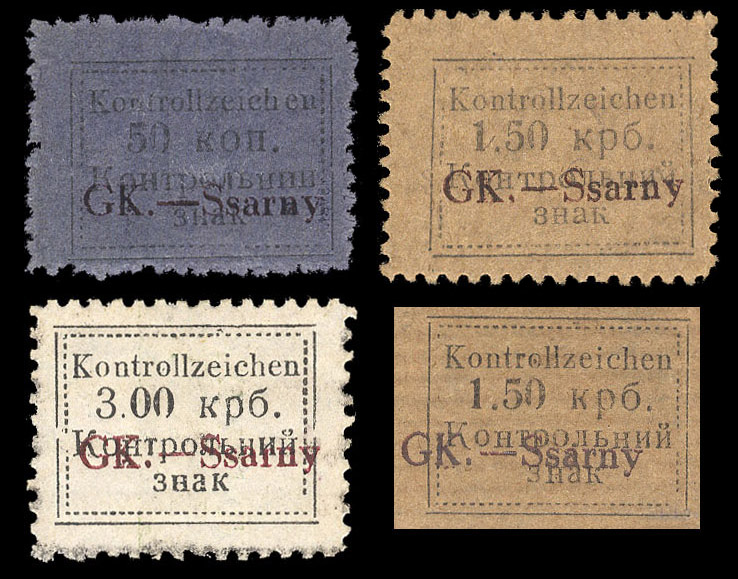
[Above: These overprinted versions were issued on October 28, 1941.]
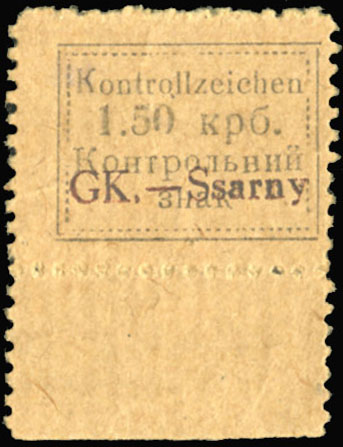
[Above: 1.50k brown (vertically laid paper, type II, only 35 printed in type II!)]
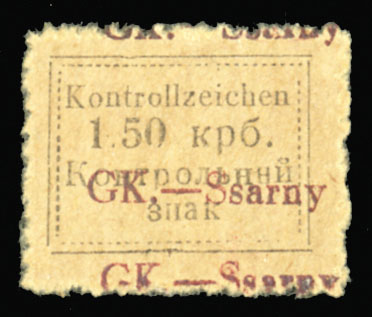
[Above: 1.50k brown (vertically laid paper, triple overprint)]
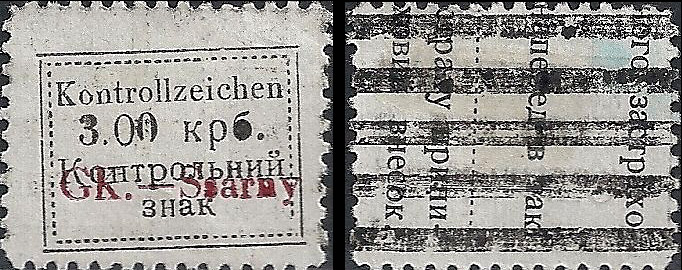
[Above: Here is an example like that above, except the back shows that it was made from recycled paper.]
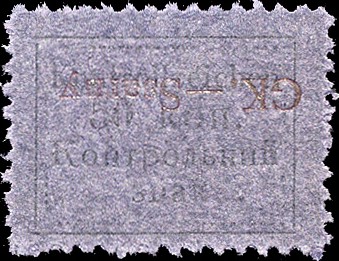
[Above: Rarer still is this error stamp of the 50k black on dark blue. It is printed on reverse with overprint inverted! It is thought that only 25 were printed. These were made with no gum, therefore a glue had to be applied.]
_____________________________________________________________________________________
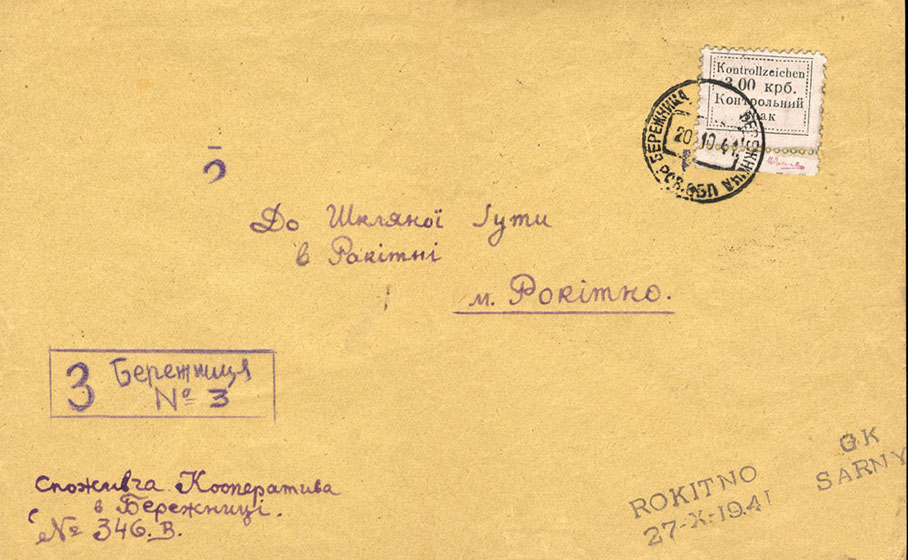
[Above: Here is an envelope showing usage of the 3.00 Ssarny stamp. Once again very rare.]
_____________________________________________________________________________________
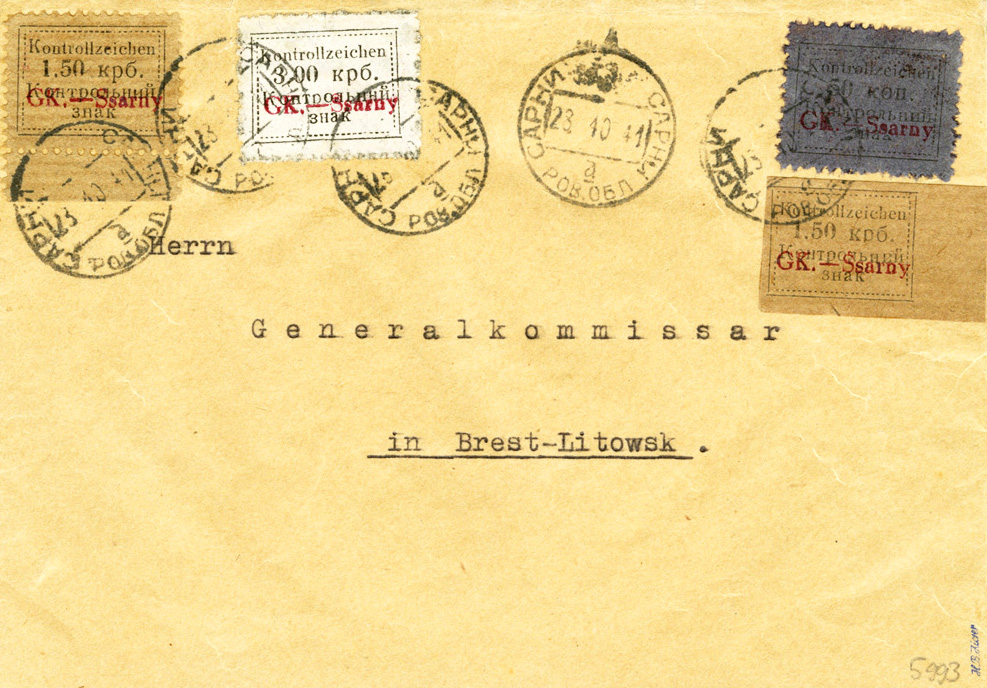
[Above: A fantastic philatelic example of all of the above stamps.]
_____________________________________________________________________________________

[Above: Another example. Do you see the small red cursive-looking writing on the margin of some stamps, or at the bottom of others? That is an expert's mark, called an 'expertizer'. They are experts that judge whether a stamp is real or a forgery. But crooks will even forge the expertizer's mark and place it on a fake item. You really have to study the hobby yourself. View every real and fake item that you can, this will familiarize you with what is legit and what is not. It will eventually, after a few years of study, give you an instinct. You will be able to look at most stamps and immediately be able to tell if it is legit or not. But there are still some fakes that are so good that even experts cannot tell if they are real or not. My advice is to get as many books on the topic as you can. One of the best in the world is done by a German company called 'Michel'. Nothing else compares. Many of their books are only available in German, but they do produce English versions of the books you would need, but be prepared to pay a high price. But they are worth it, I promise you.]
_____________________________________________________________________________________

[Above: This a very rare stamp from February 1942 from the Vosnessensk Territory.]
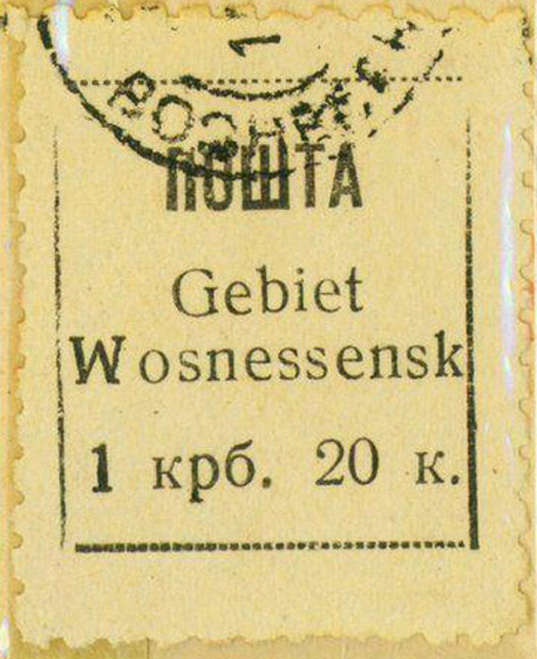
[Above: Close-up.]
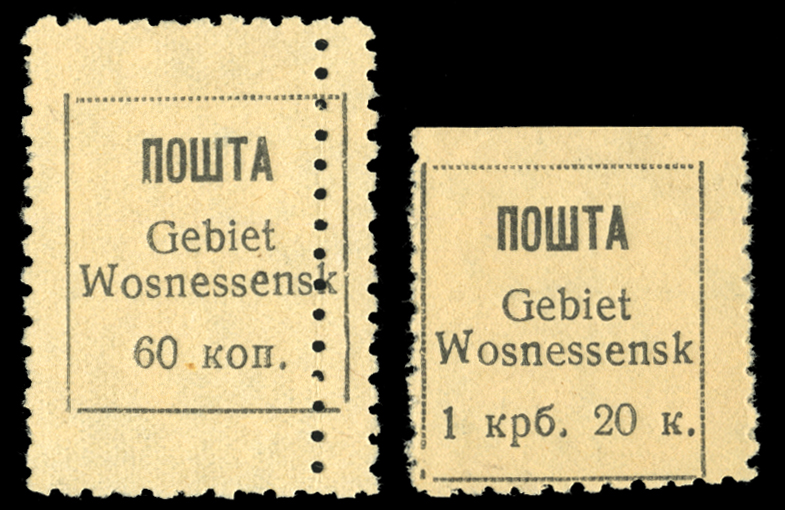
[Above: 60 value plus the value shown above but quite different printing quality (perforation error, size, color).]
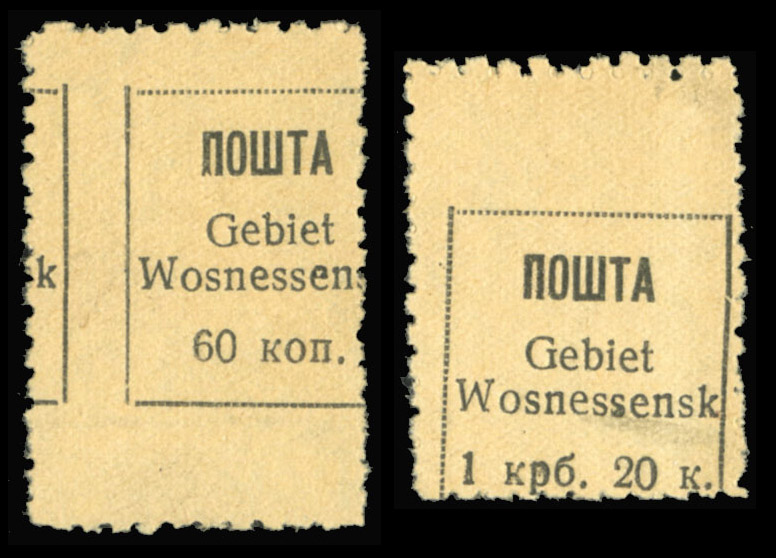
[Above: Examples with severe perforation shifts.]
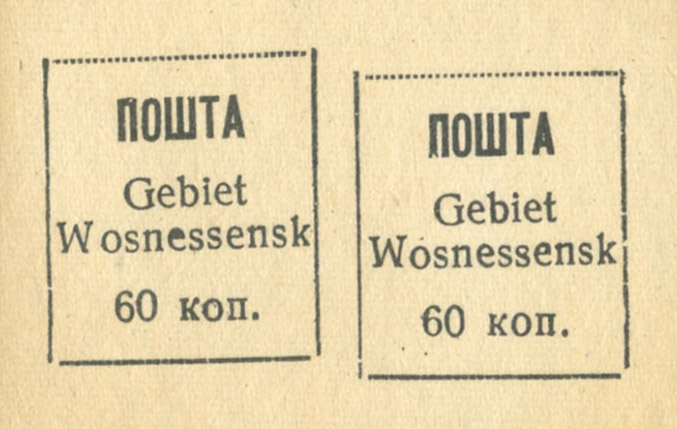
[Above: Imperforate proofs from 1941. Extremely rare.]
_____________________________________________________________________________________
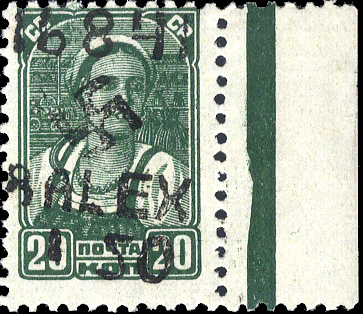
[Above: This crudely overprinted stamp is from Alexanderstadt, Ukraine.]
_____________________________________________________________________________________
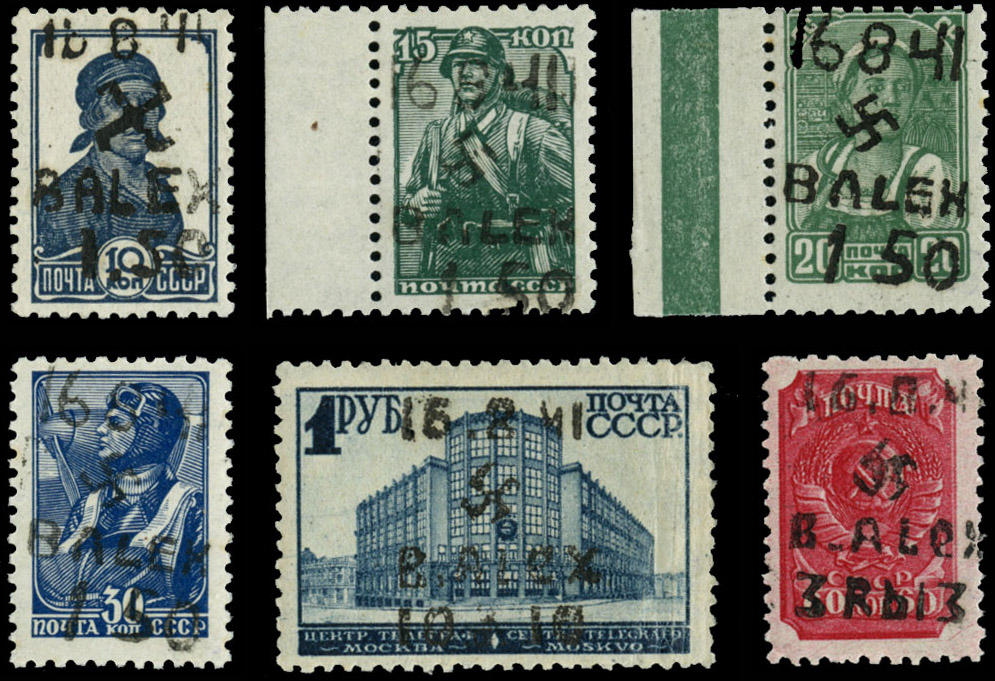
[Above: Set from Alexanderstadt, Ukraine.]
_____________________________________________________________________________________
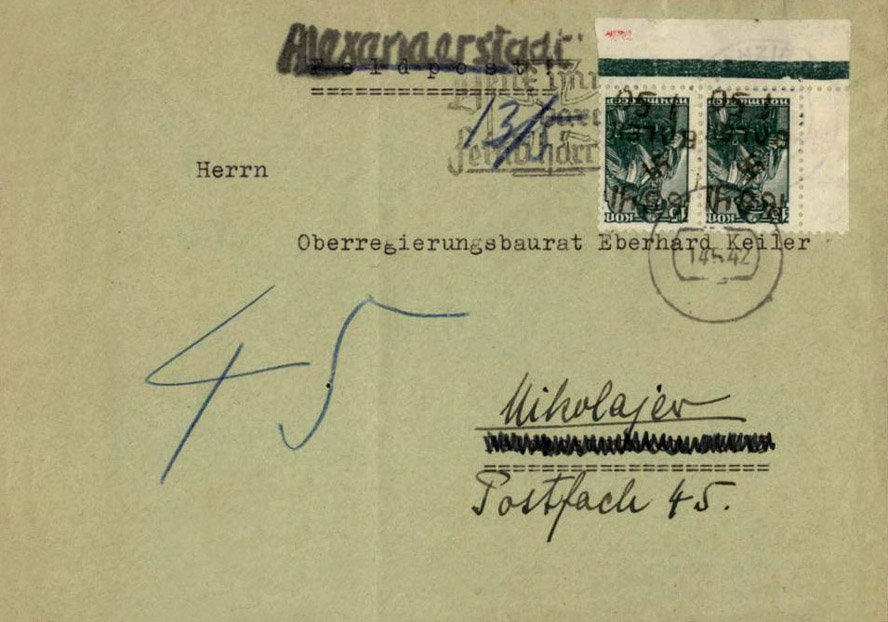
[Above: Rare Alexanderstadt envelope (with two #5 type III stamps catalogued at over nine hundred Euros).]
_____________________________________________________________________________________
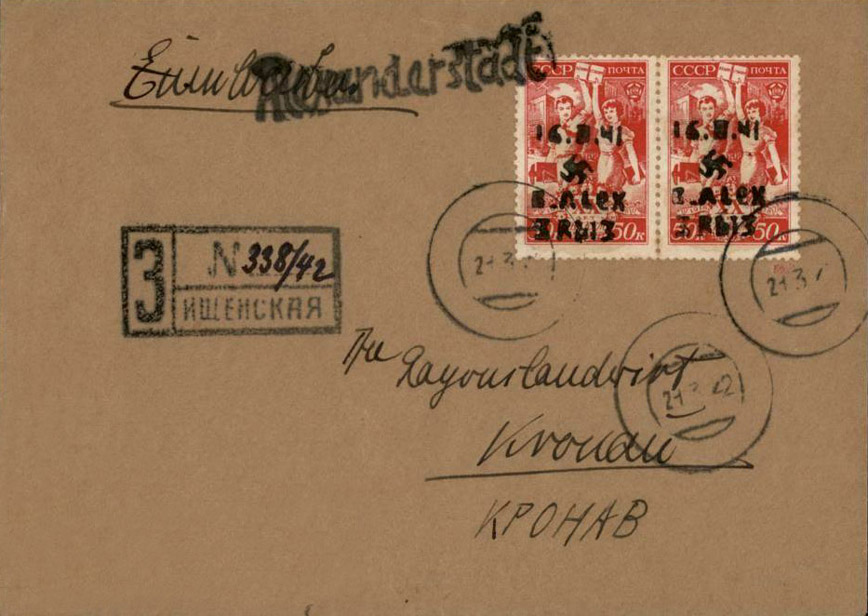
[Above: Rare Alexanderstadt envelope (with two #10 type III stamps).]
_____________________________________________________________________________________

[Above: Ukraine, March 1941, very rare local stamp for Gorochow. The stamps feature an outline of the territorial commissariat of Gorochow.]
_____________________________________________________________________________________
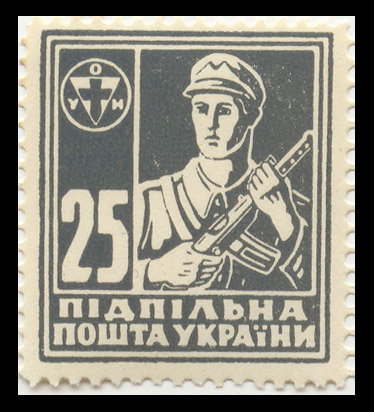
[Above: This stamp is from the Ukrainian Liberation Army.]
_____________________________________________________________________________________
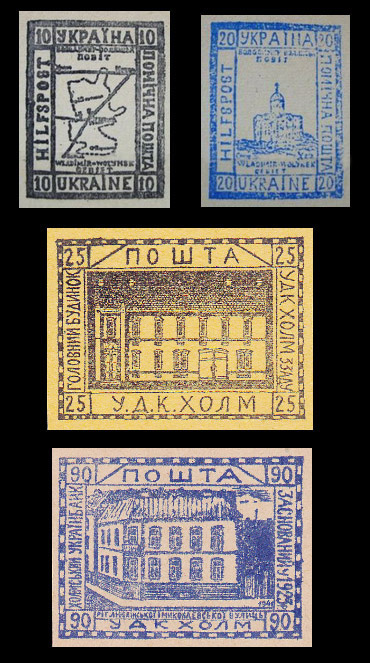
[Above: The top two stamps shown here are from 1944, but they were never issued due to Ukraine being occupied by Russia.
They were meant for local usage. The bottom two stamps are charity stamps, also unissued. 'NOWTA' means postage.]
_____________________________________________________________________________________
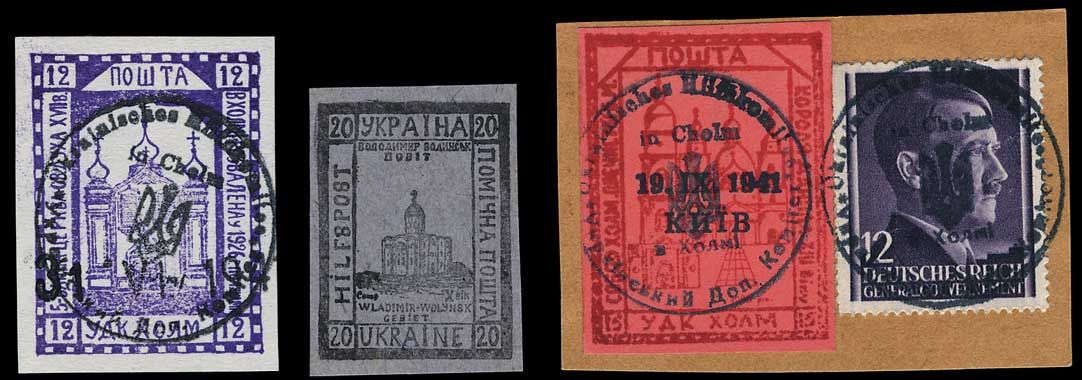
[Above: A trio of interesting stamps, the piece on the right curiously has a 'Hitler head' postage stamp from Poland (General Government).]
_____________________________________________________________________________________